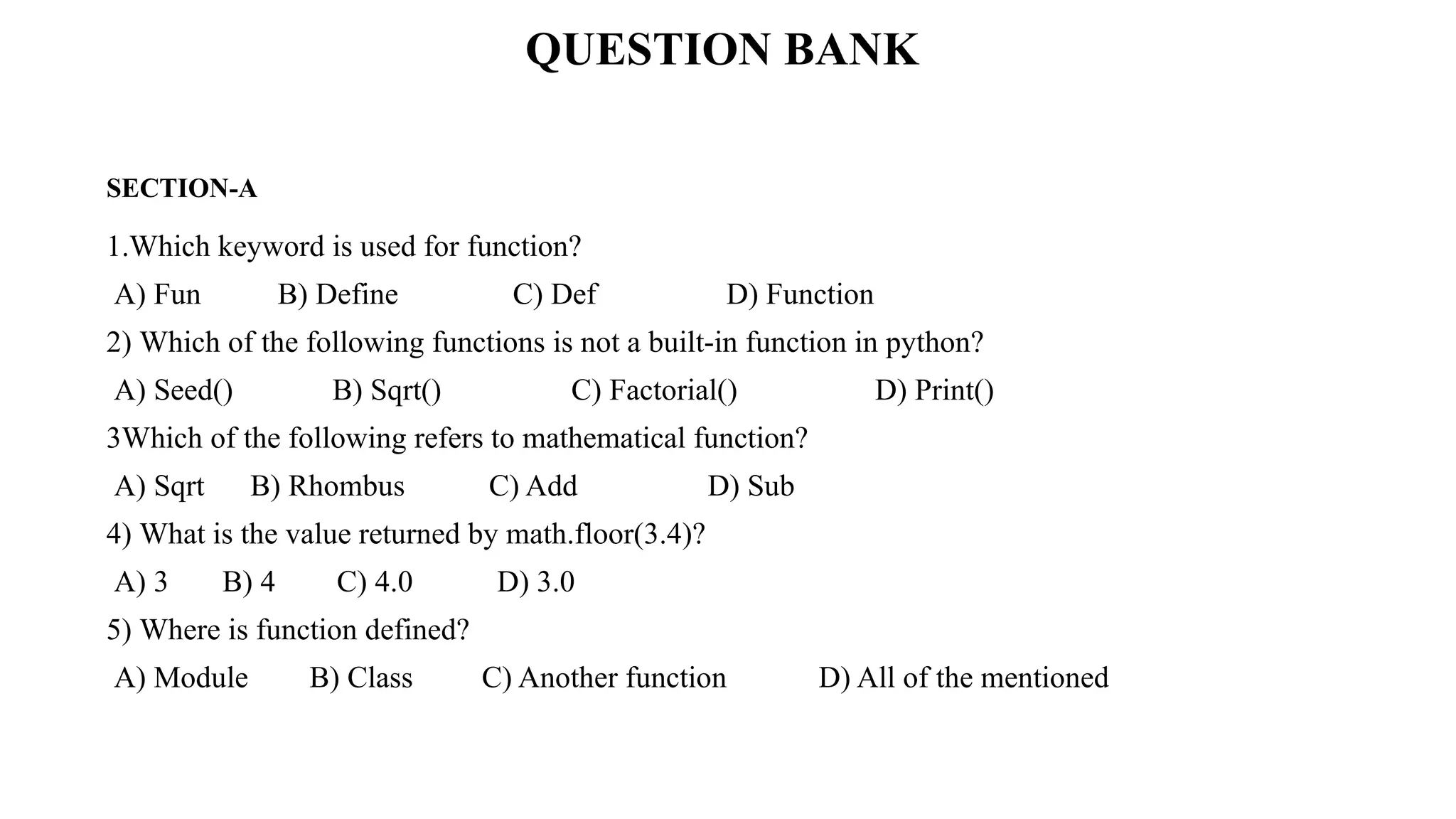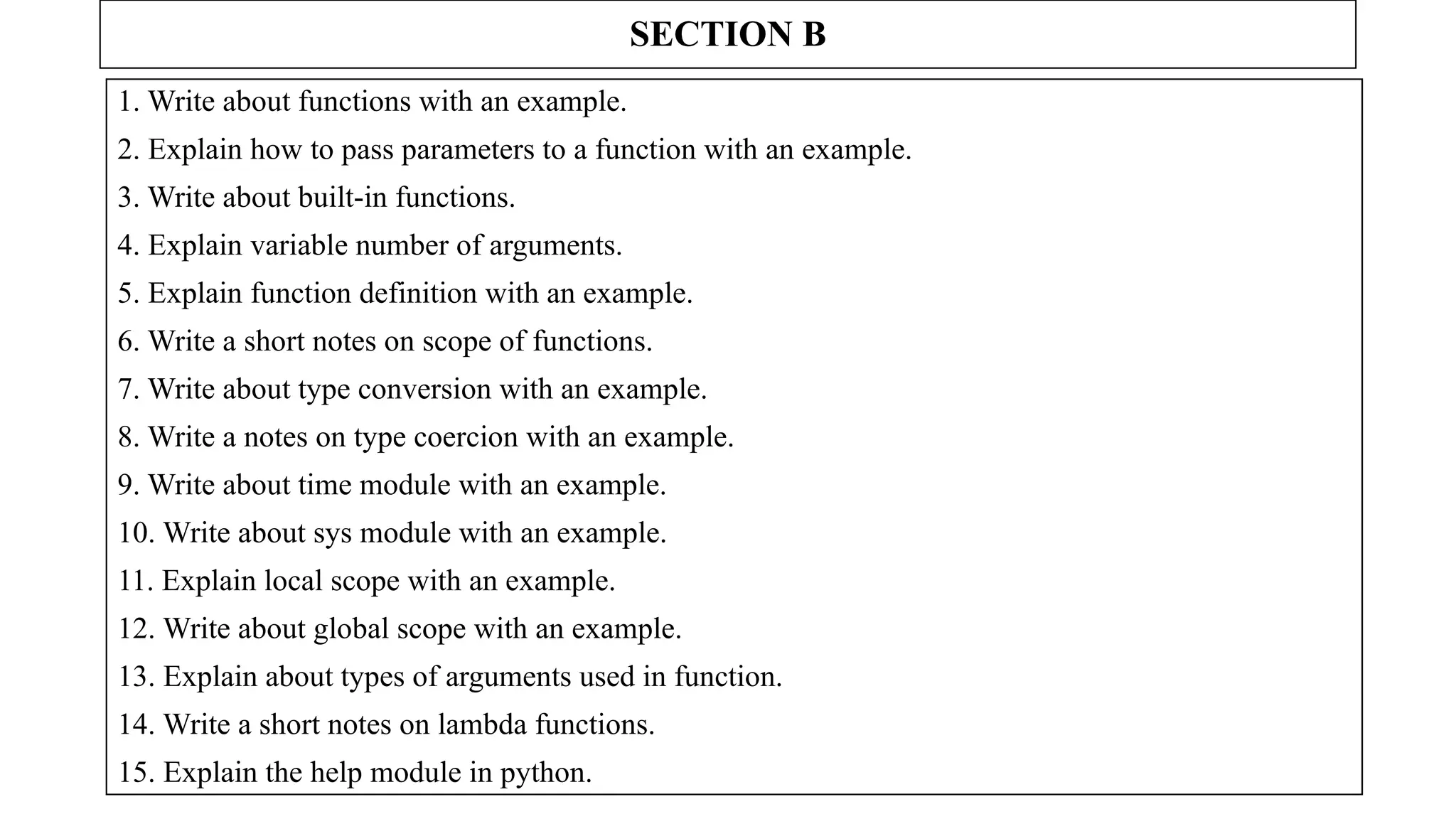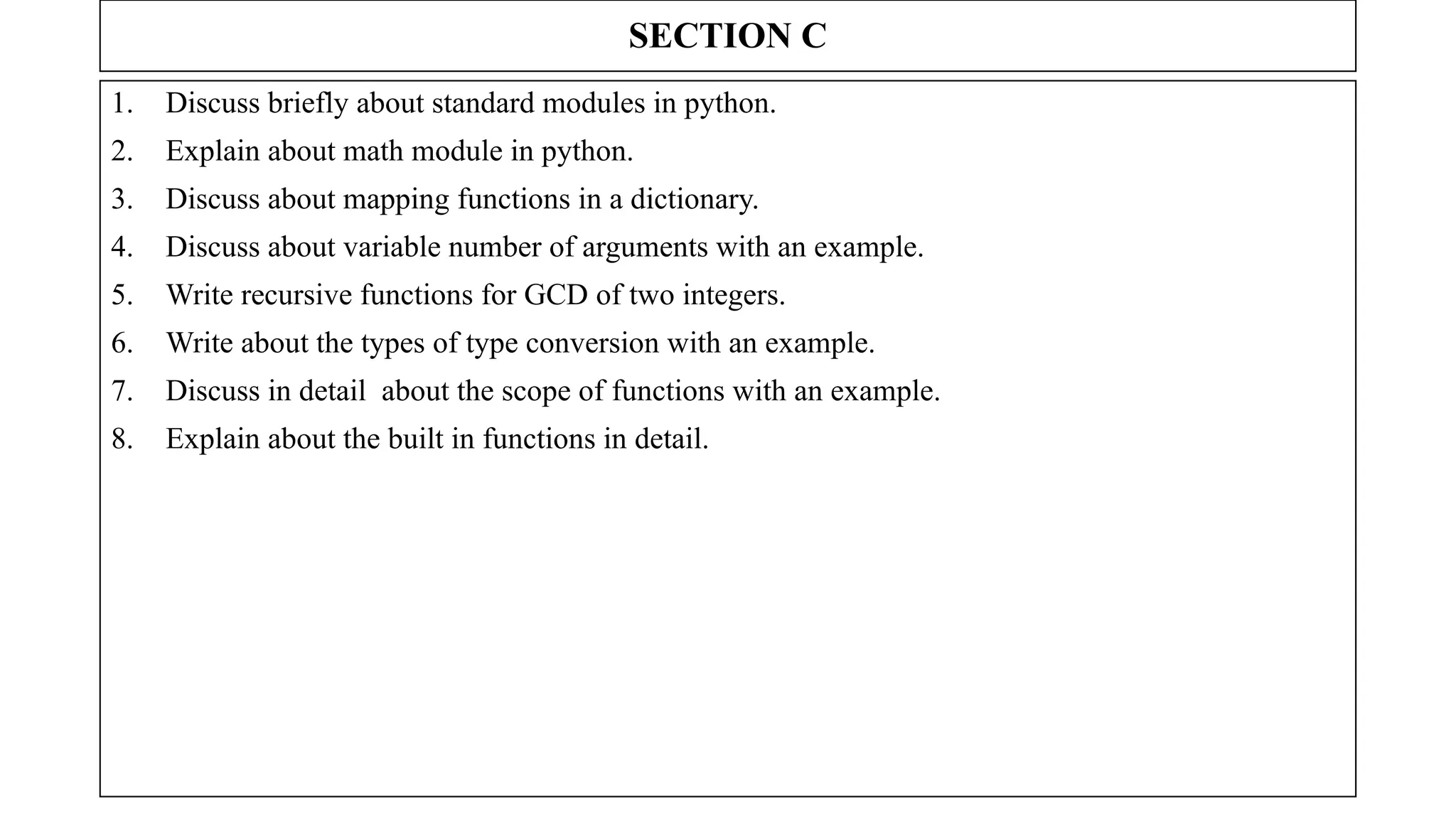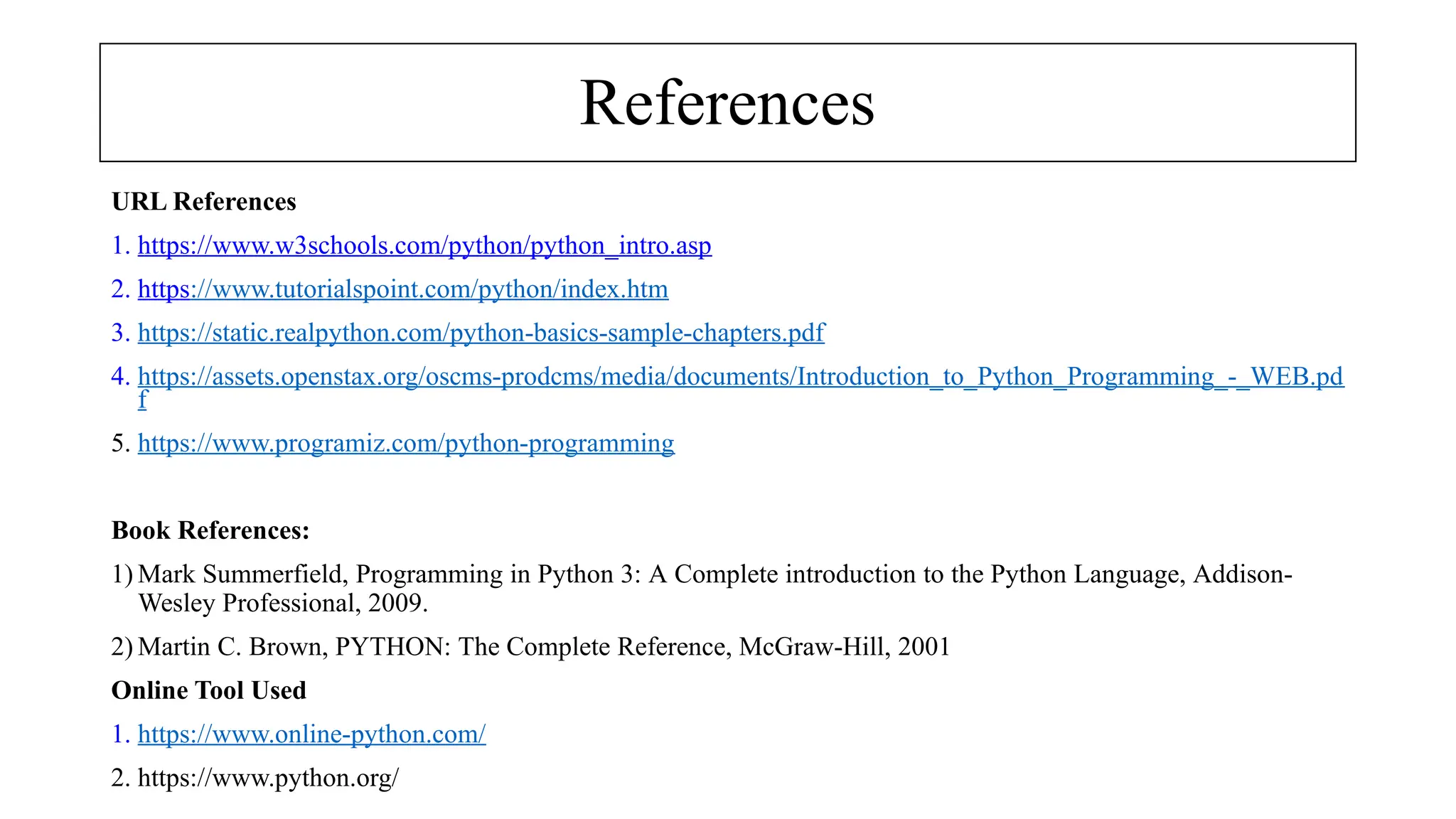Python is a high-level, interpreted programming language known for its simplicity, readability, and versatility, making it one of the most popular choices for beginners and professionals alike. Its clean syntax and dynamic typing allow developers to write code efficiently while maintaining clarity, which reduces the cost of program maintenance and enhances collaboration. Python supports multiple programming paradigms, including procedural, object-oriented, and functional programming, enabling a wide range of applications from web development and data analysis to artificial intelligence, machine learning, automation, and scientific computing. Its extensive standard library and active community contribute to a rich ecosystem of third-party modules, frameworks, and tools, which accelerate development and innovation. Python’s cross-platform compatibility ensures programs run seamlessly on Windows, macOS, and Linux, while its integration capabilities with other languages like C, C++, and Java expand its functionality. With frameworks like Django and Flask, Python simplifies web development, while libraries such as NumPy, Pandas, and Matplotlib empower data manipulation, analysis, and visualization. Python’s prominence in AI and ML stems from tools like TensorFlow, Keras, and PyTorch, which provide accessible yet powerful solutions for complex computational tasks. Its simplicity does not compromise its power, allowing Python to handle large-scale enterprise applications and rapid prototyping with equal ease. The language’s community-driven evolution ensures continuous improvement, security updates, and innovative features, fostering learning, collaboration, and problem-solving. Python’s popularity is also boosted by educational use, making it a staple in computer science curricula worldwide. With readable syntax, extensive libraries, versatile applications, and robust community support, Python serves as a gateway to modern programming, enabling developers to transform ideas into functional solutions efficiently and effectively, while also supporting a culture of open-source collaboration that drives technological advancement and empowers innovation across industries globally.
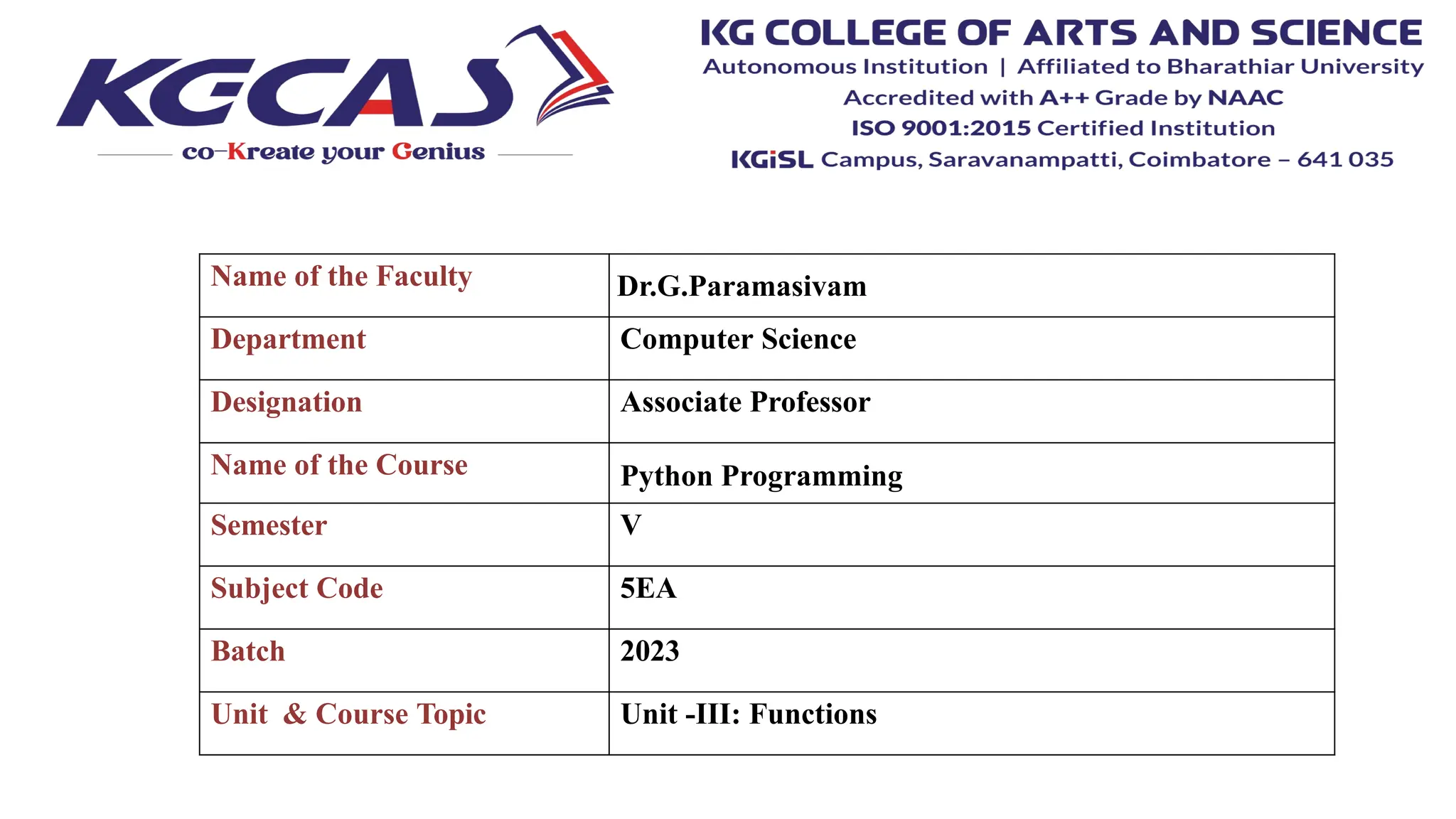
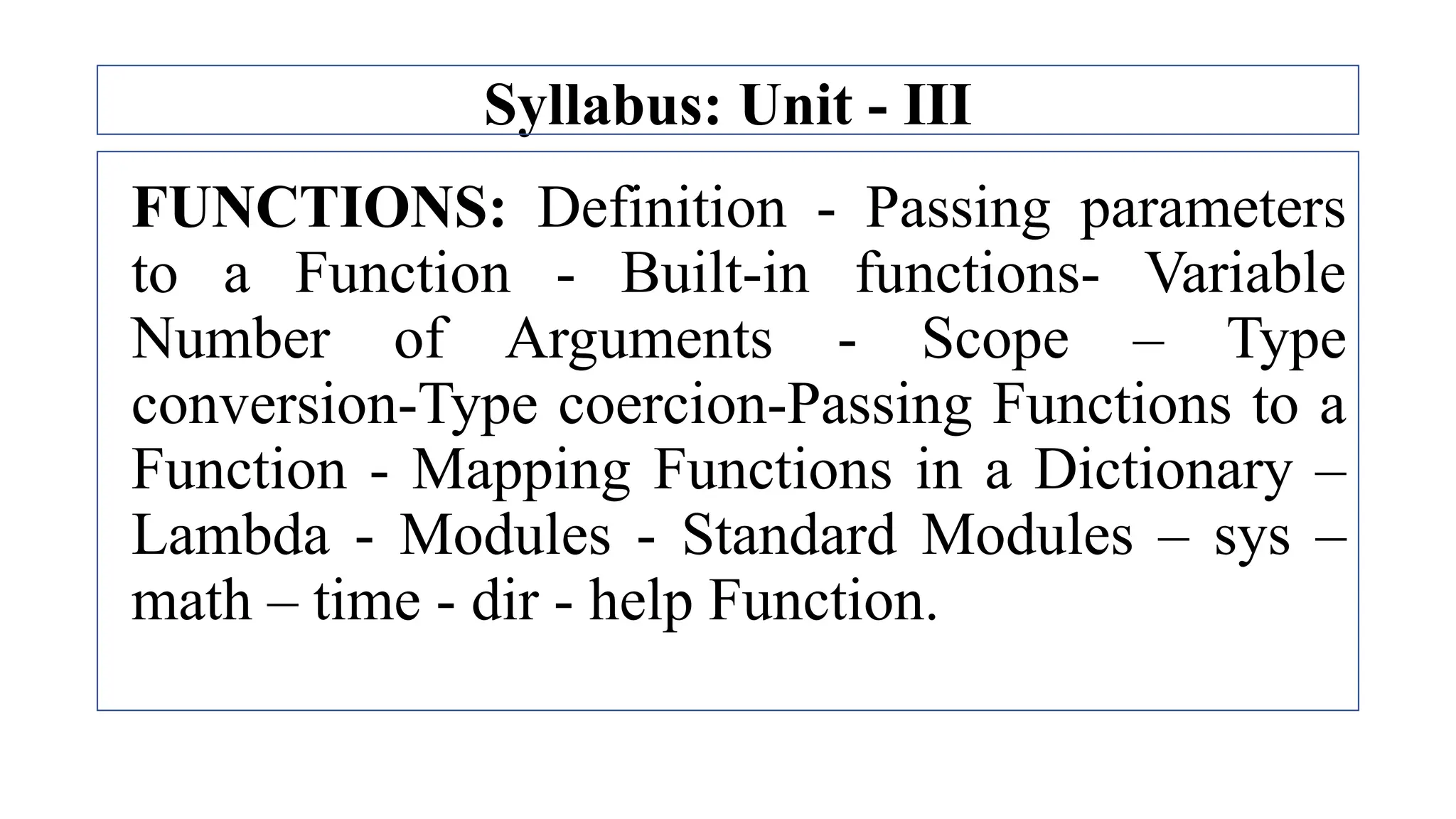
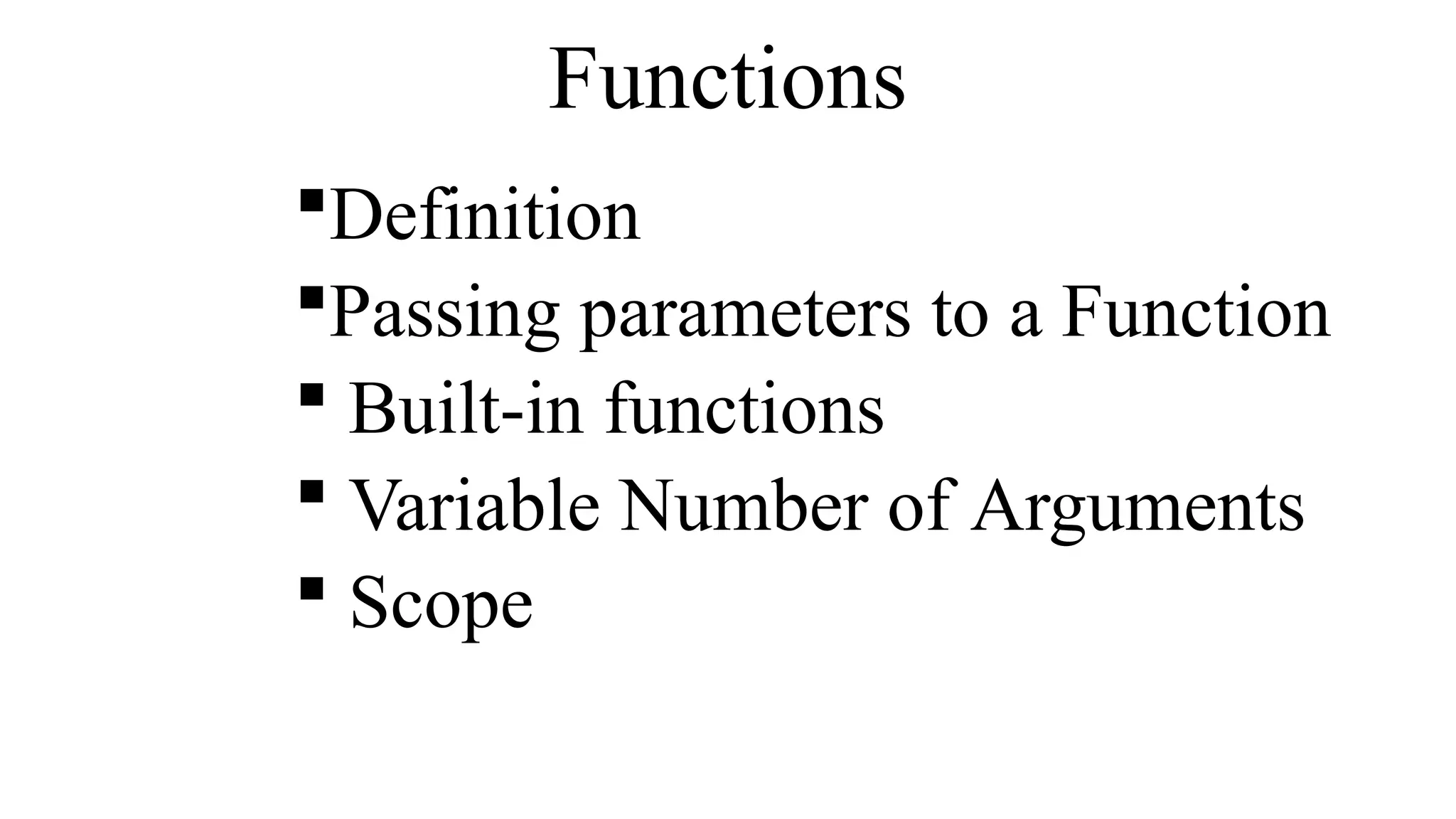
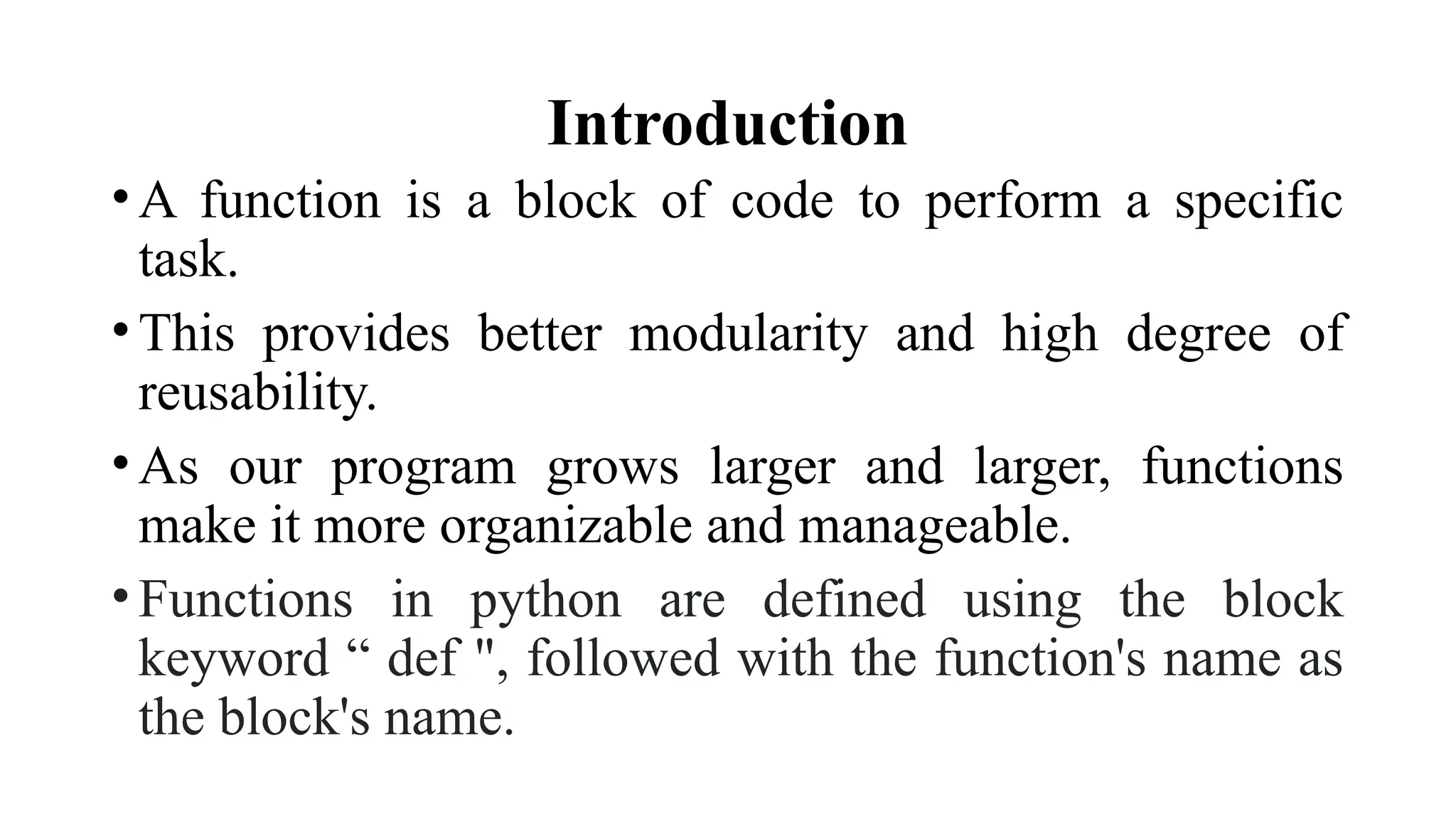
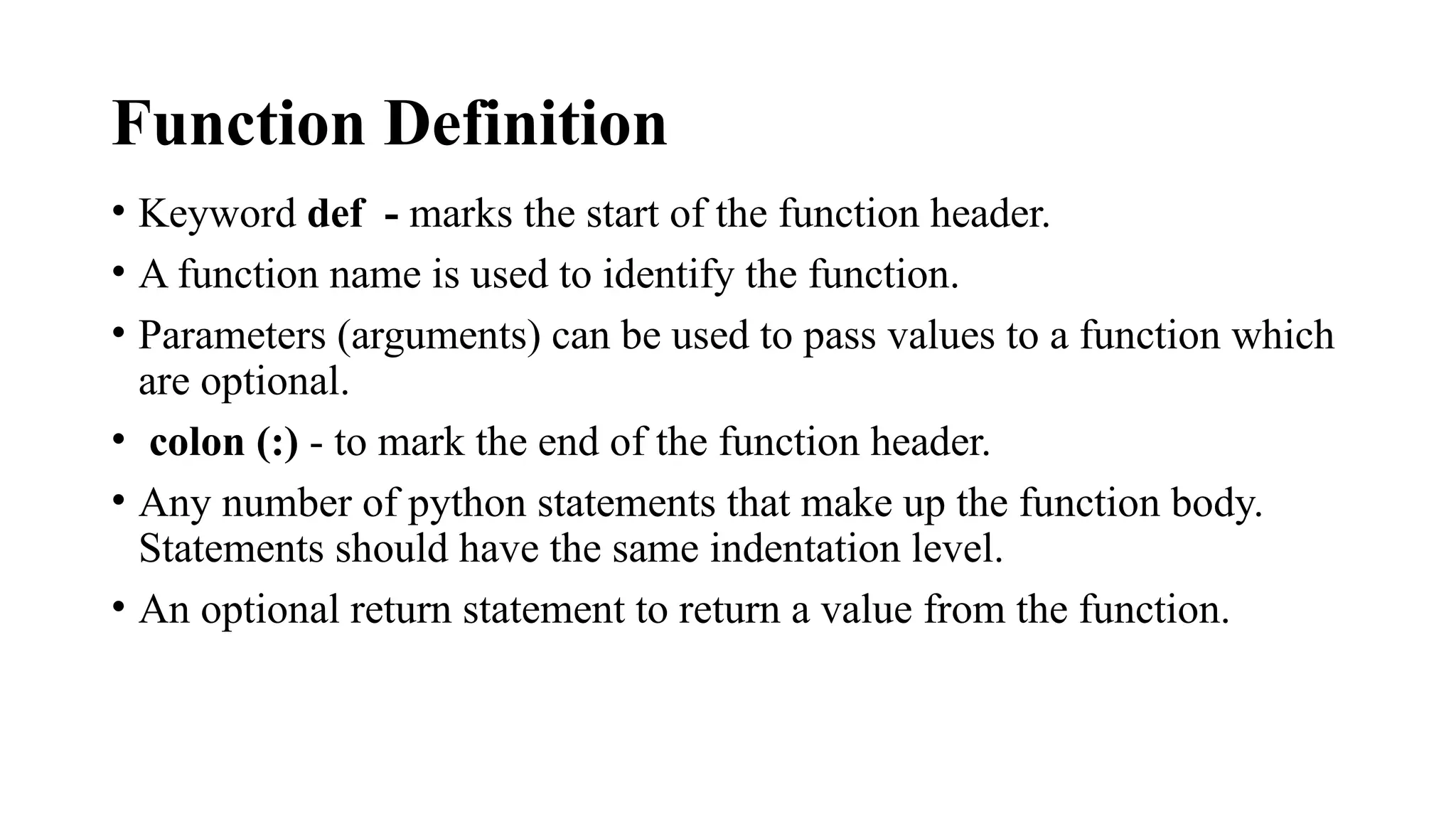
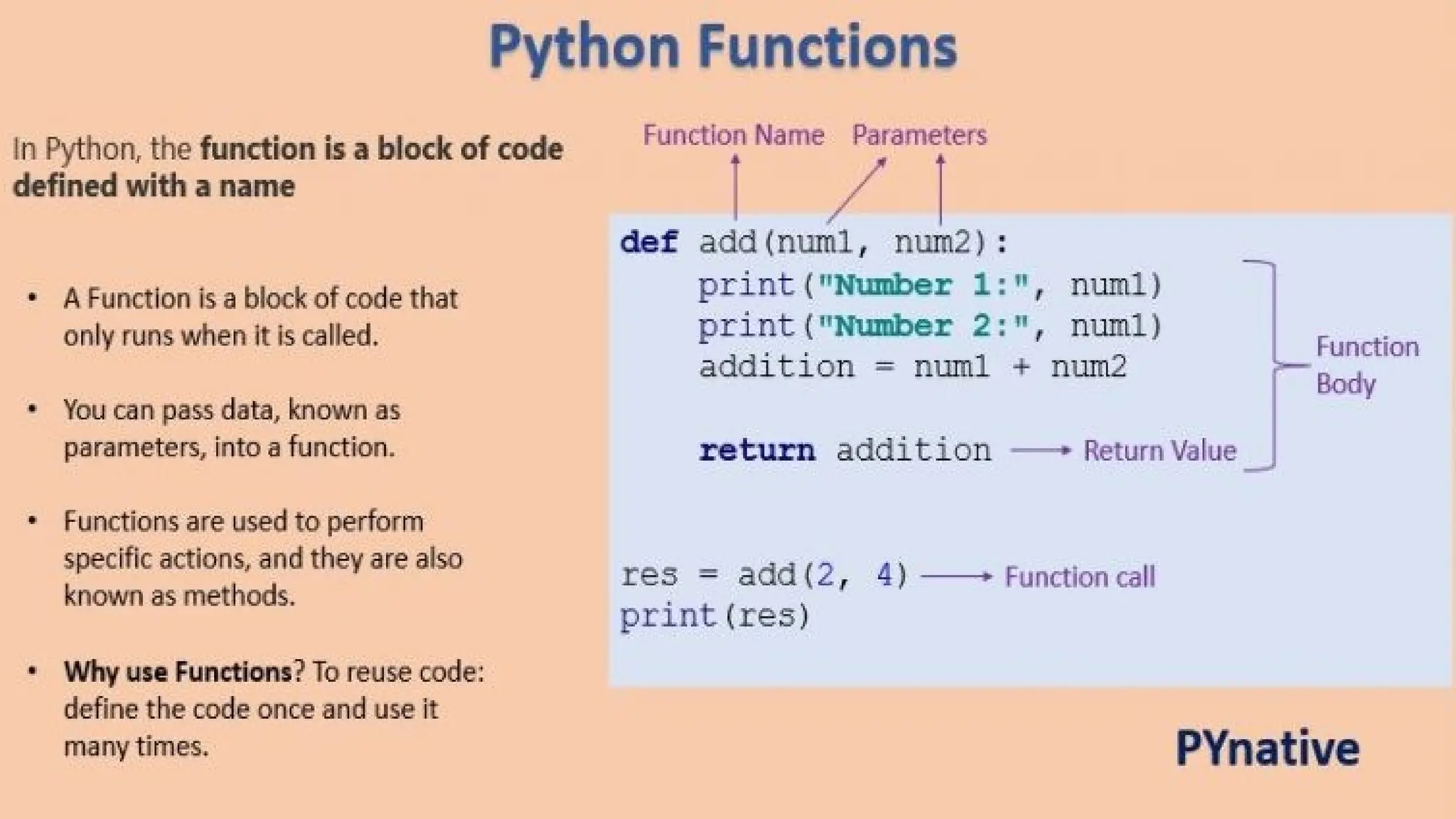
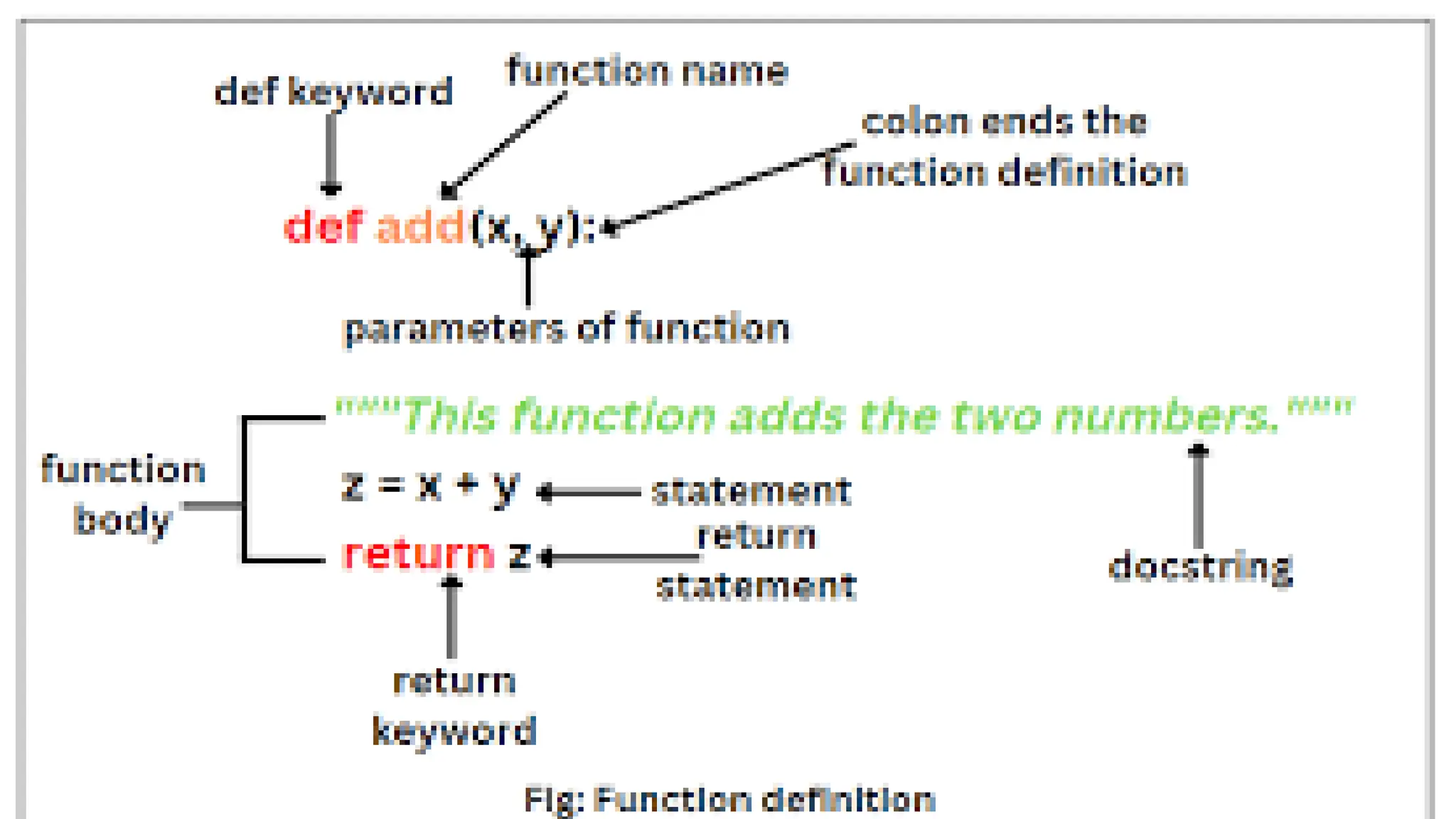
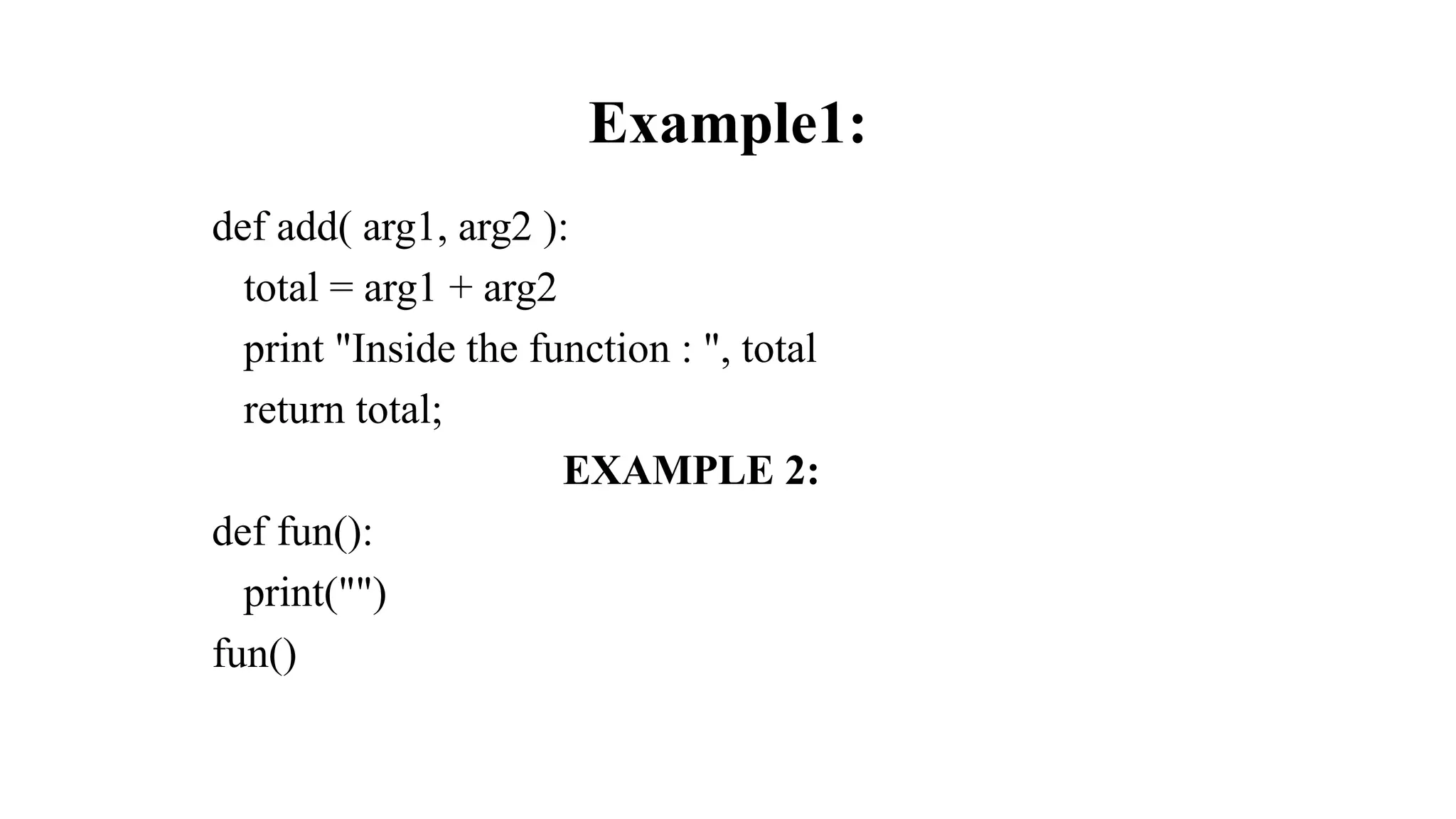
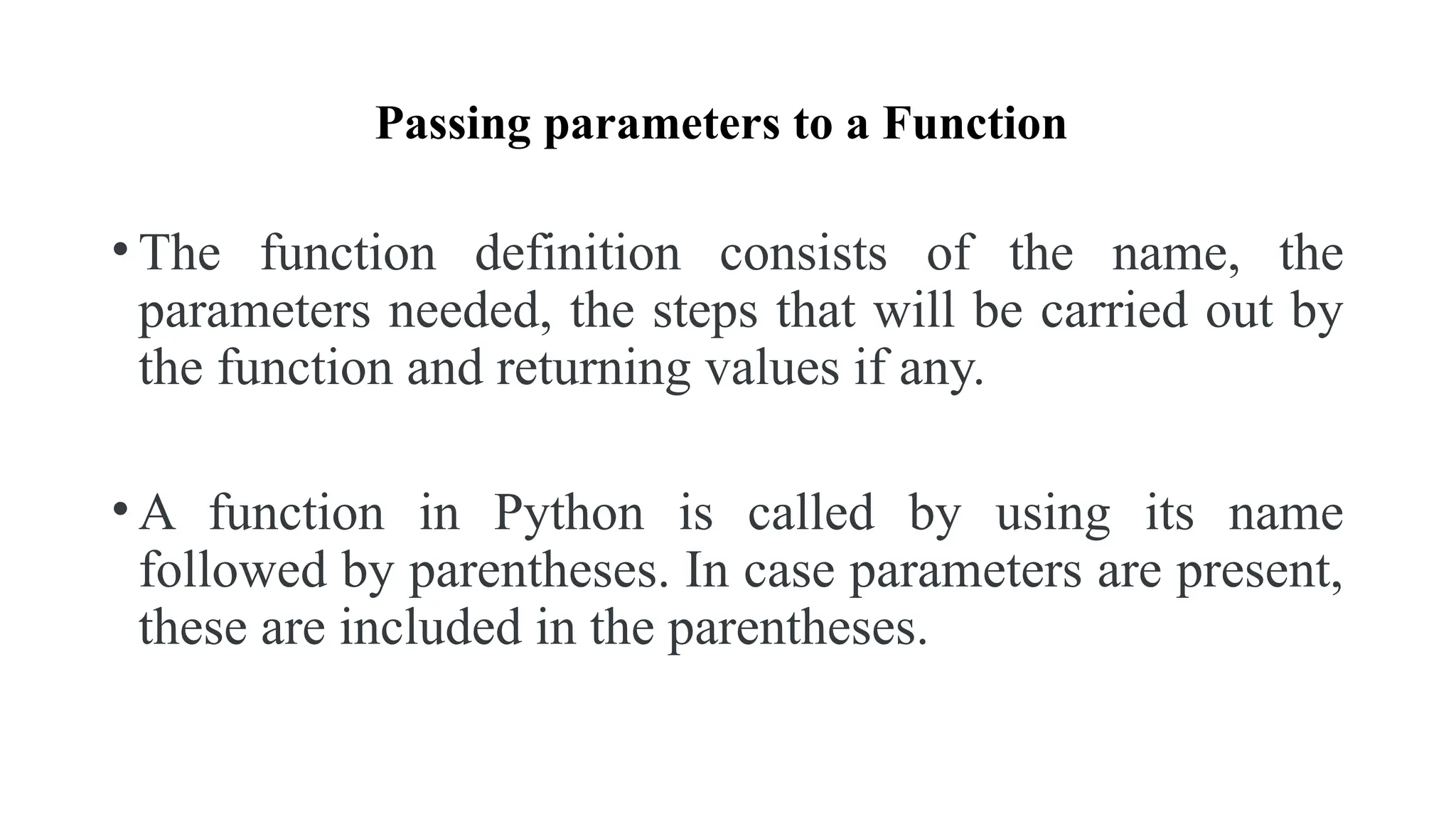
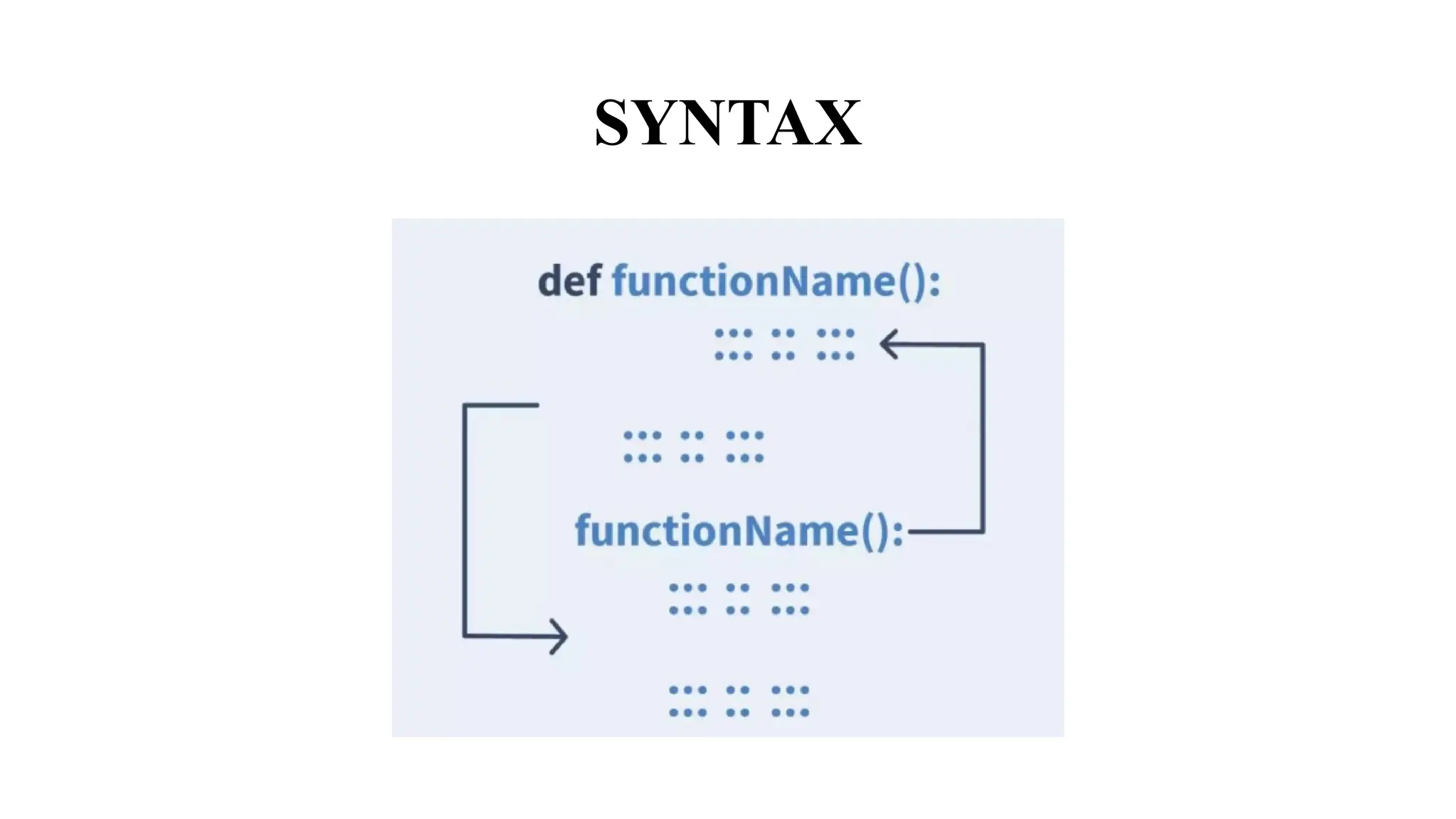
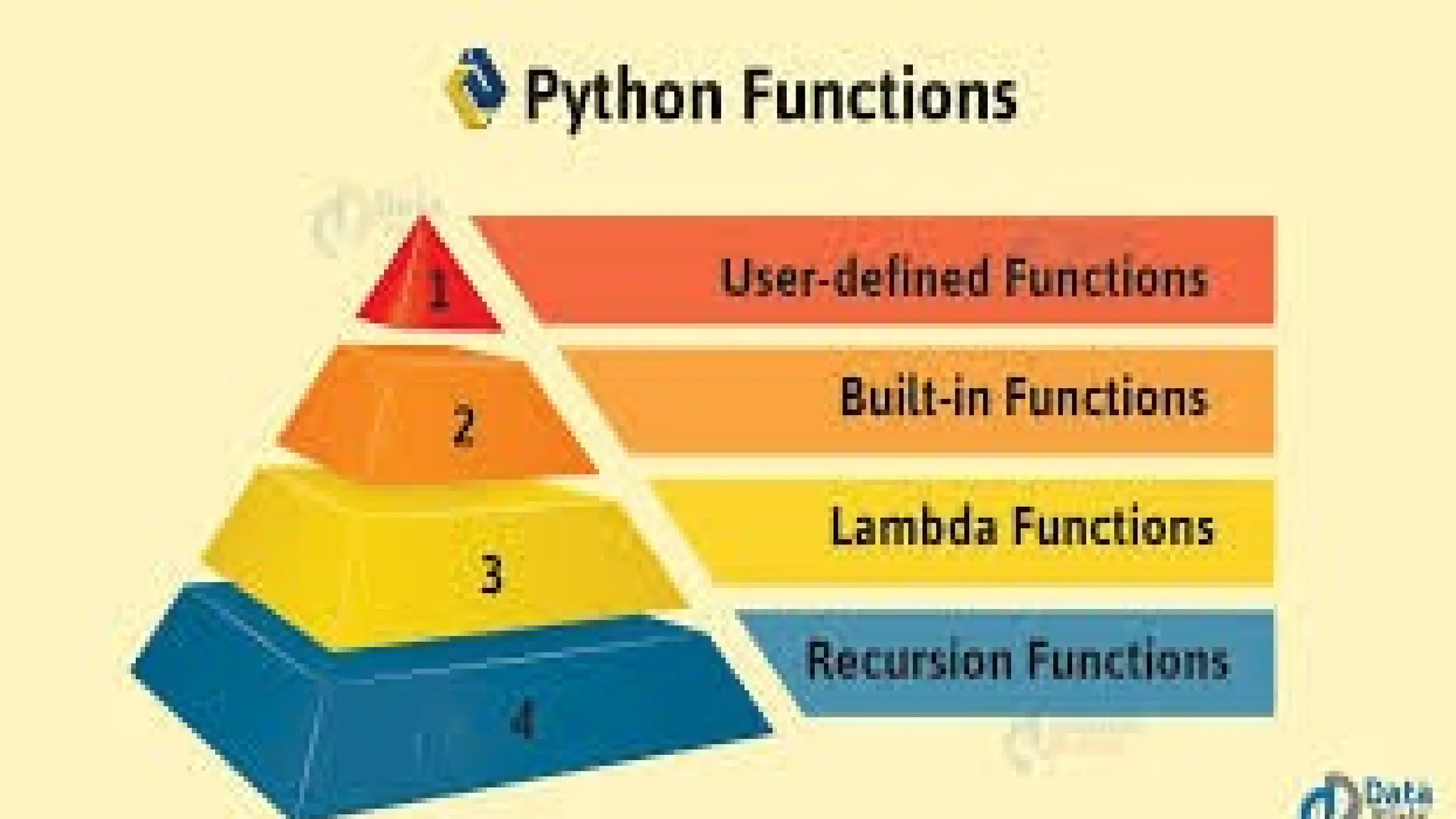
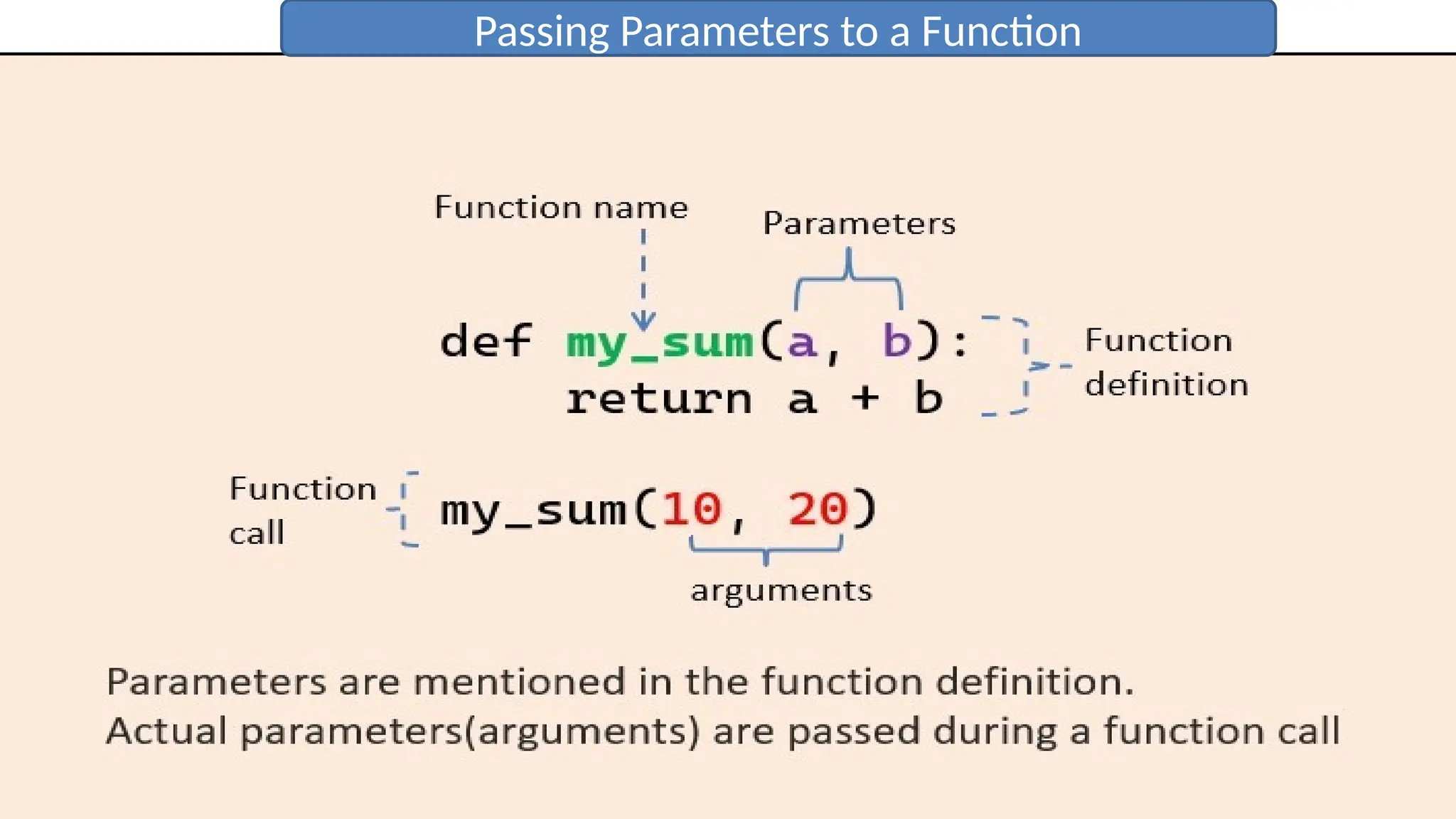
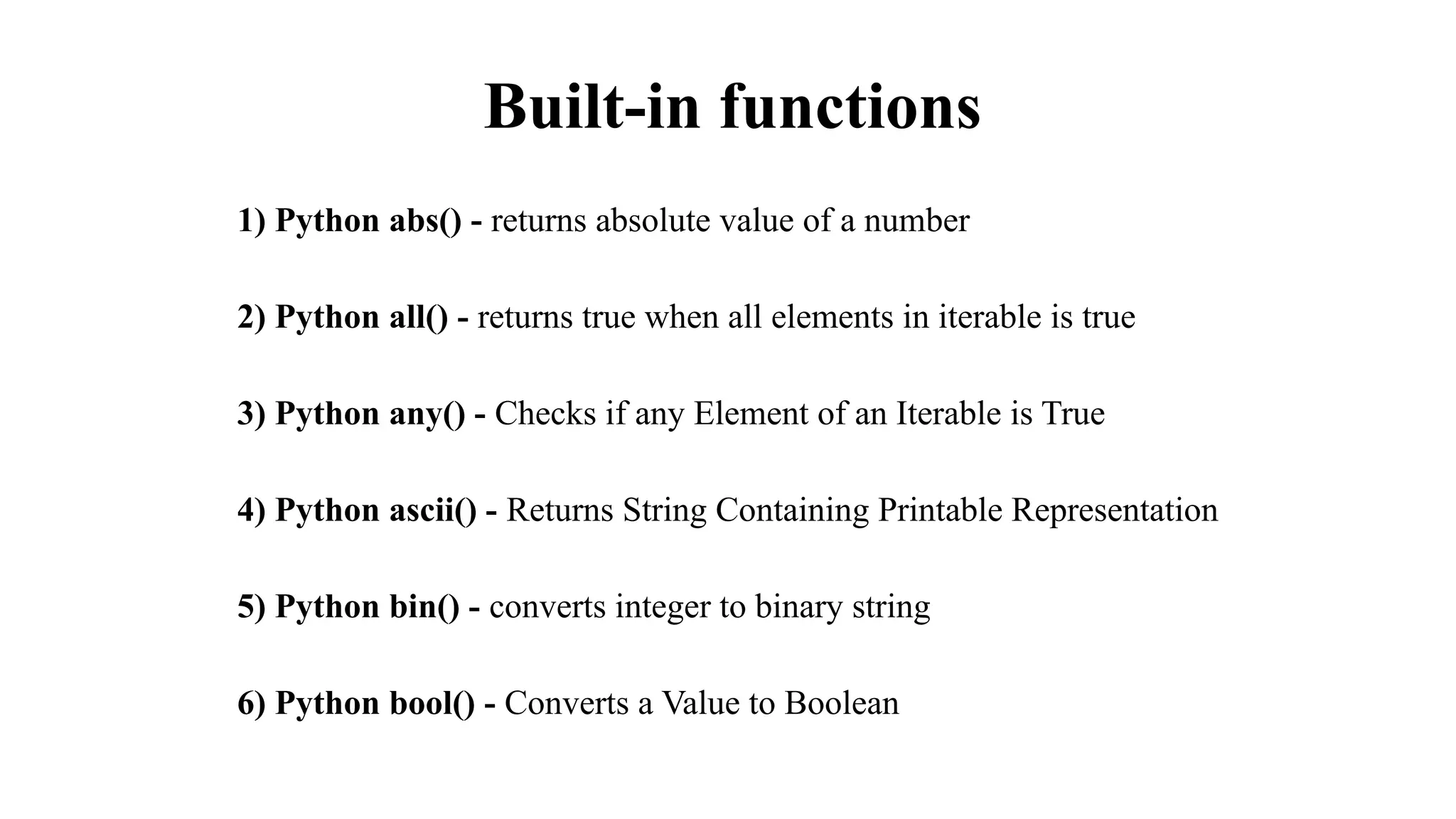
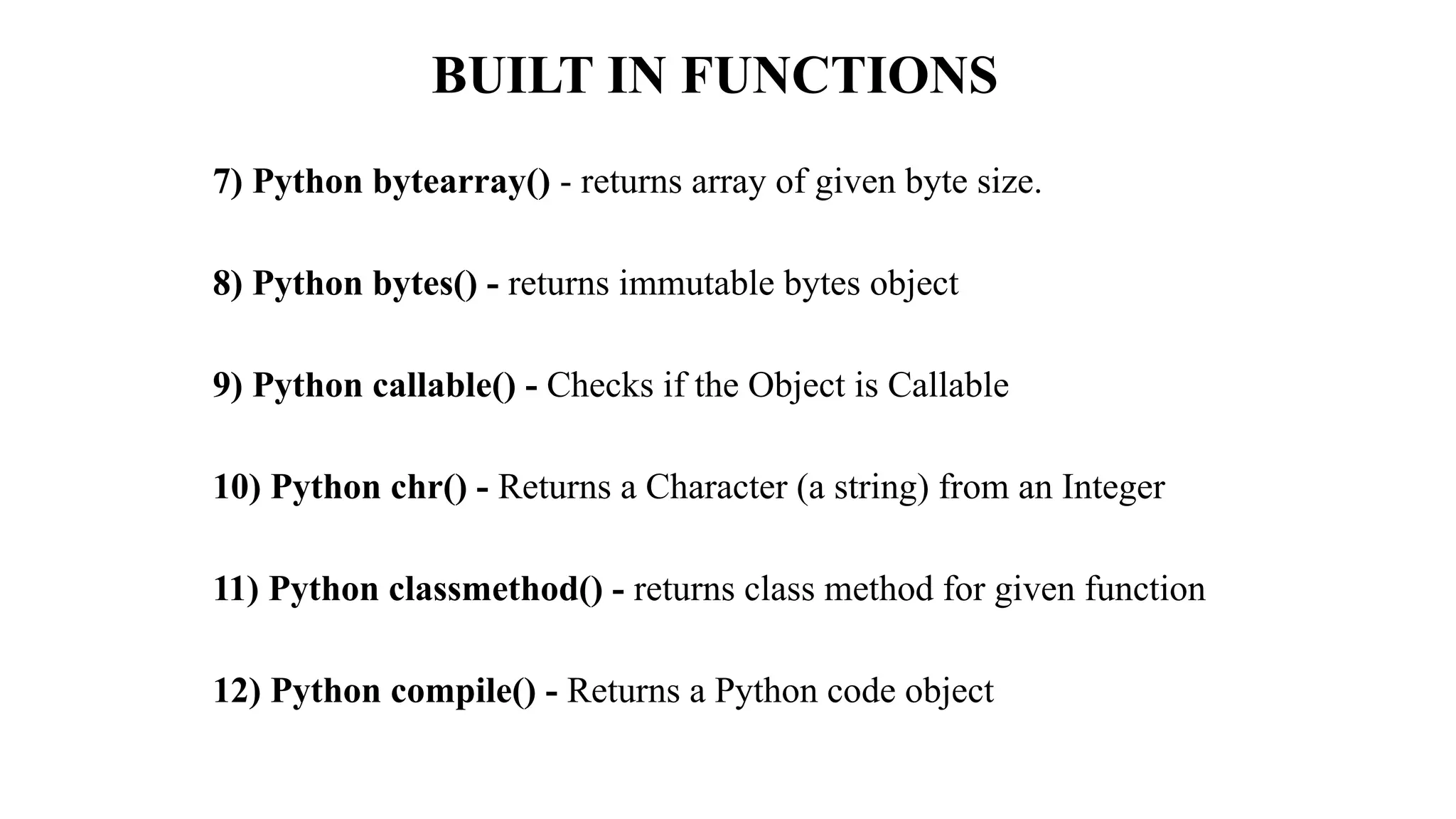
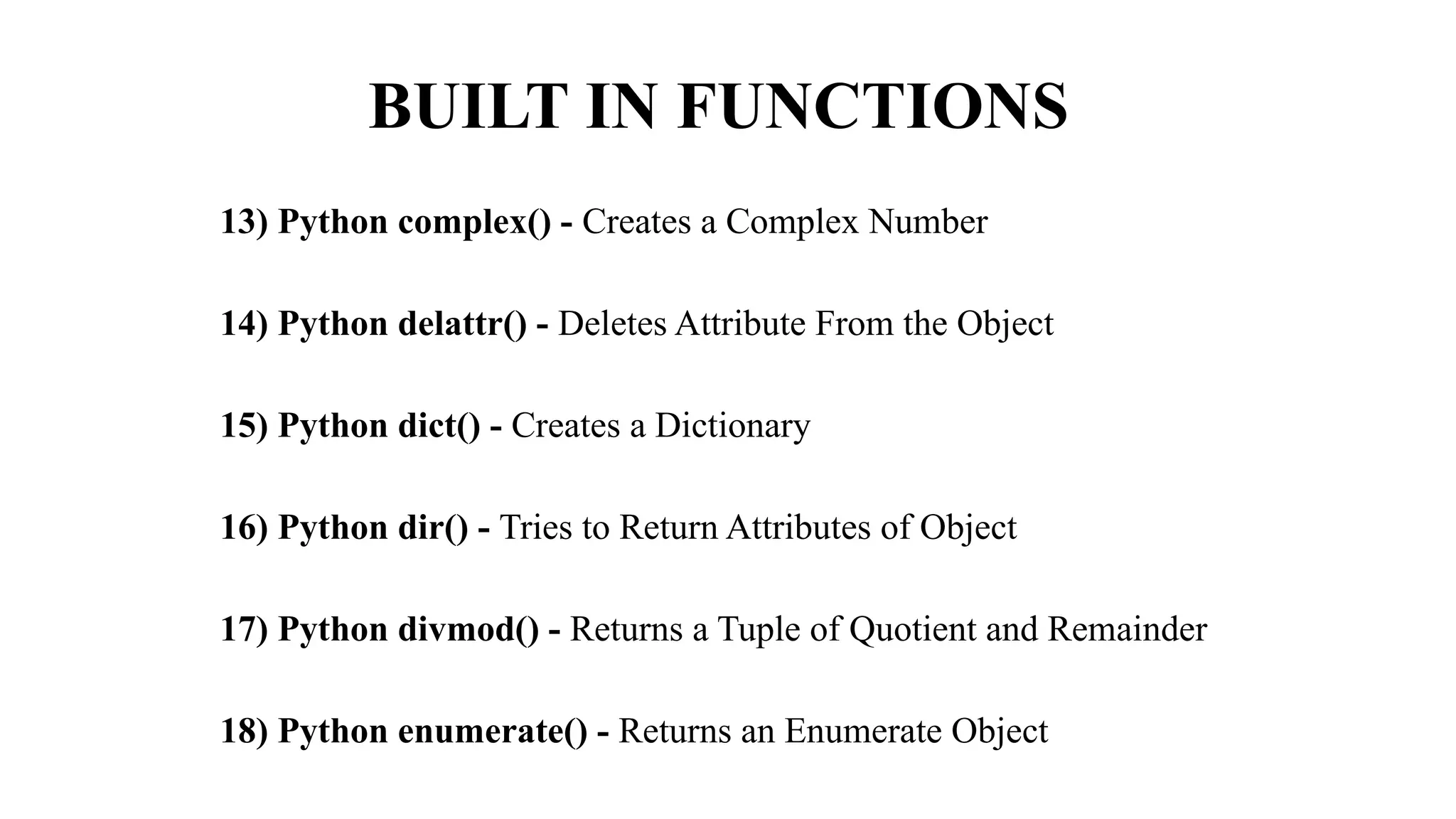
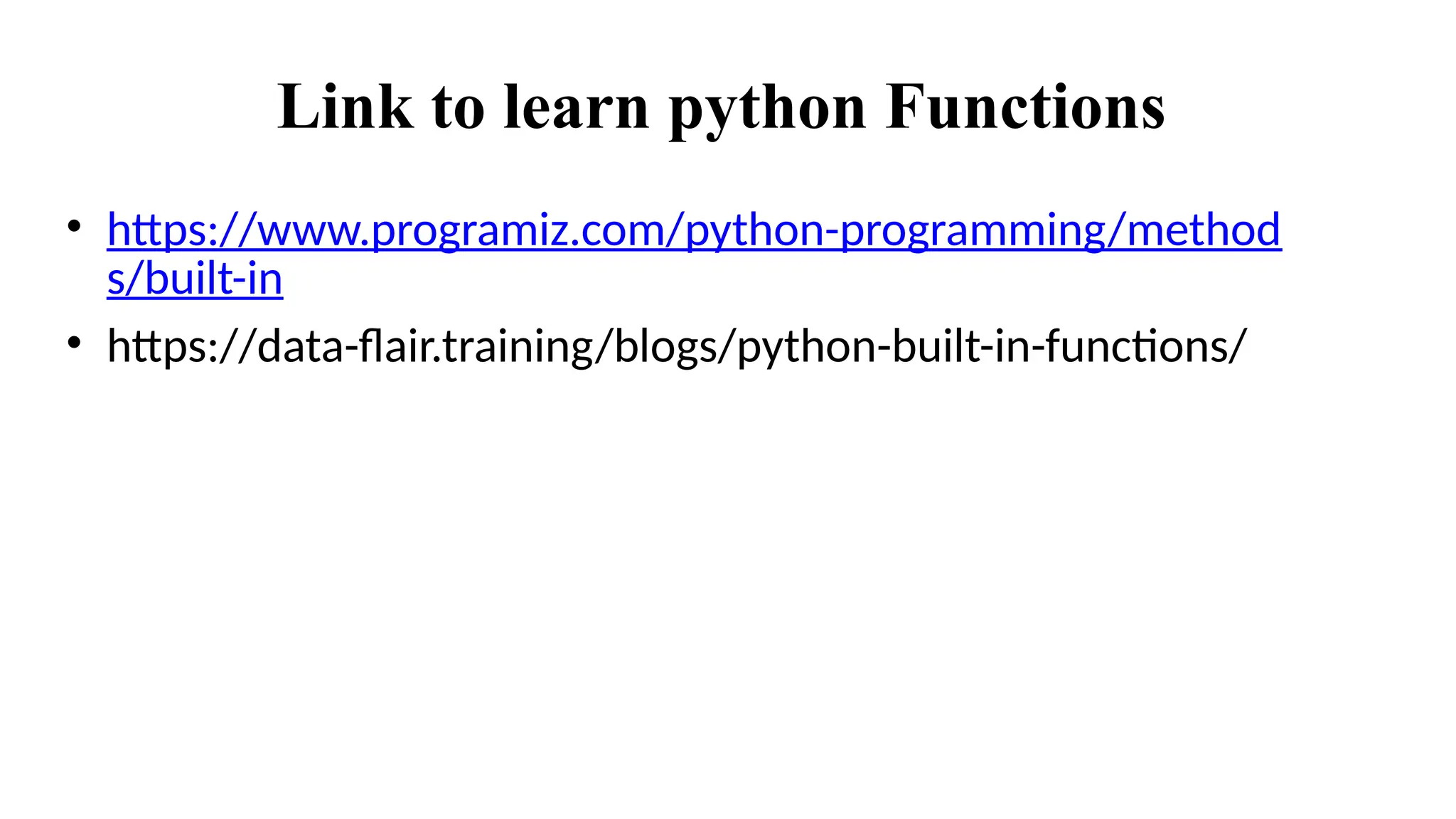
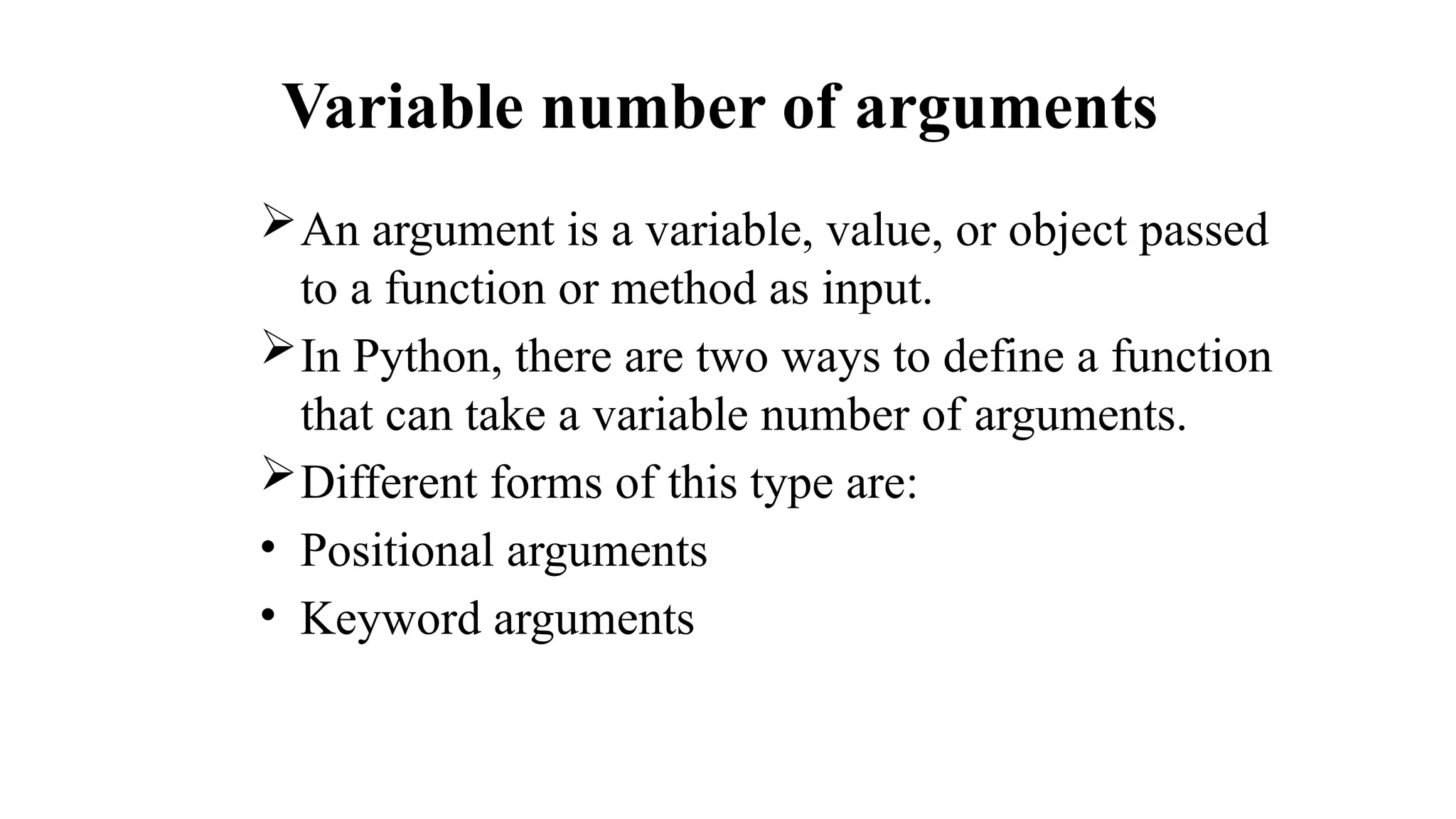
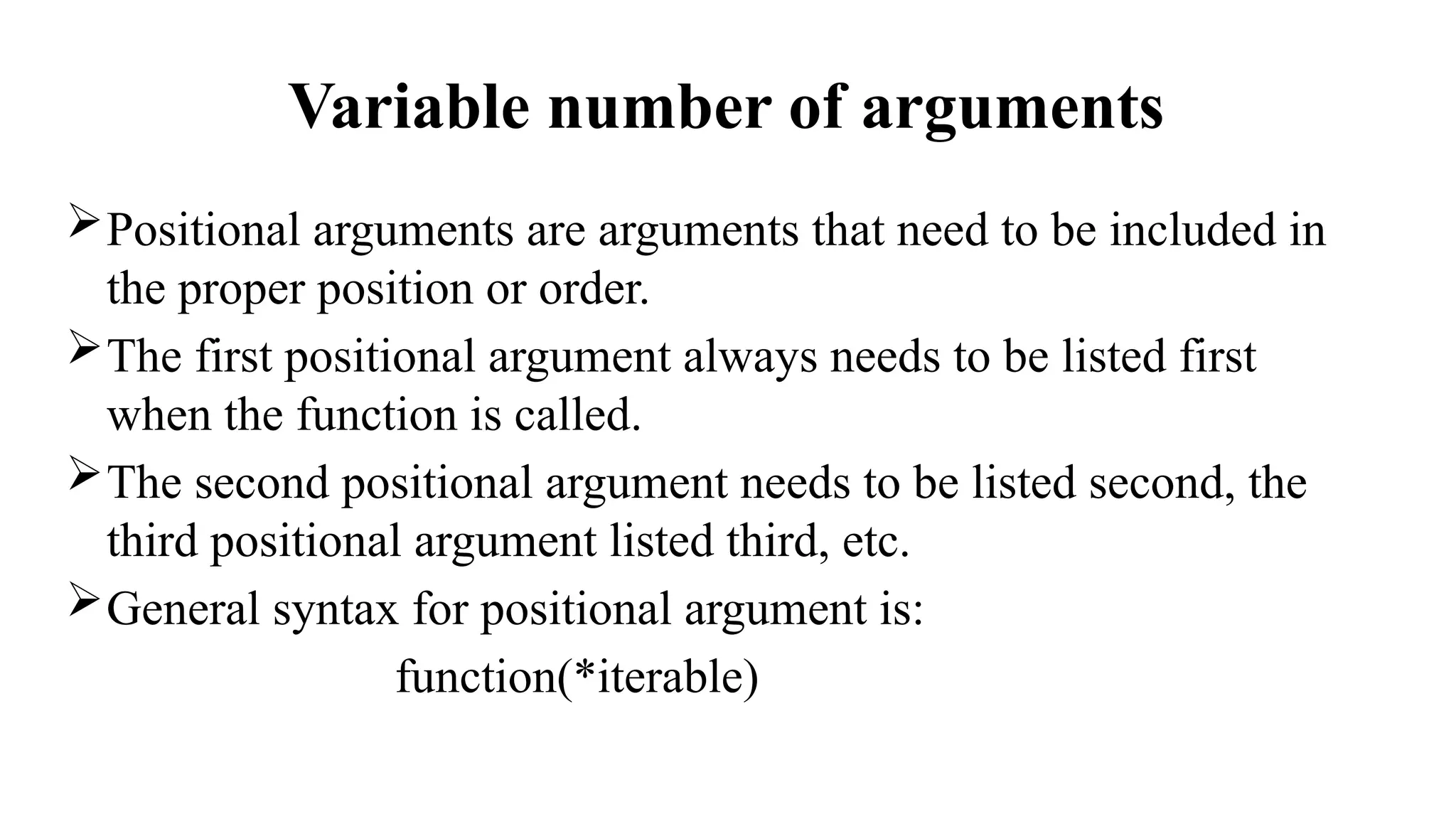
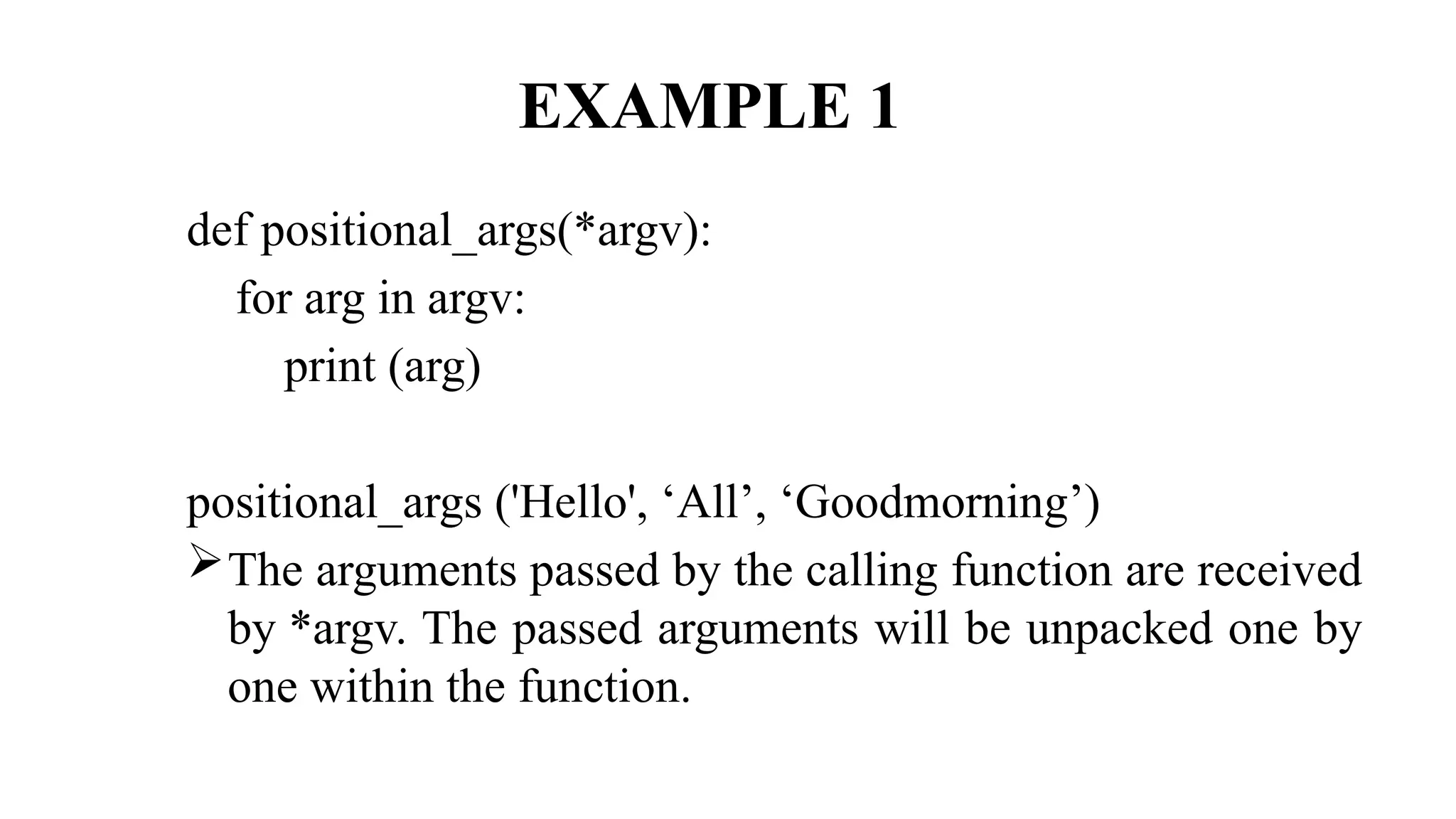
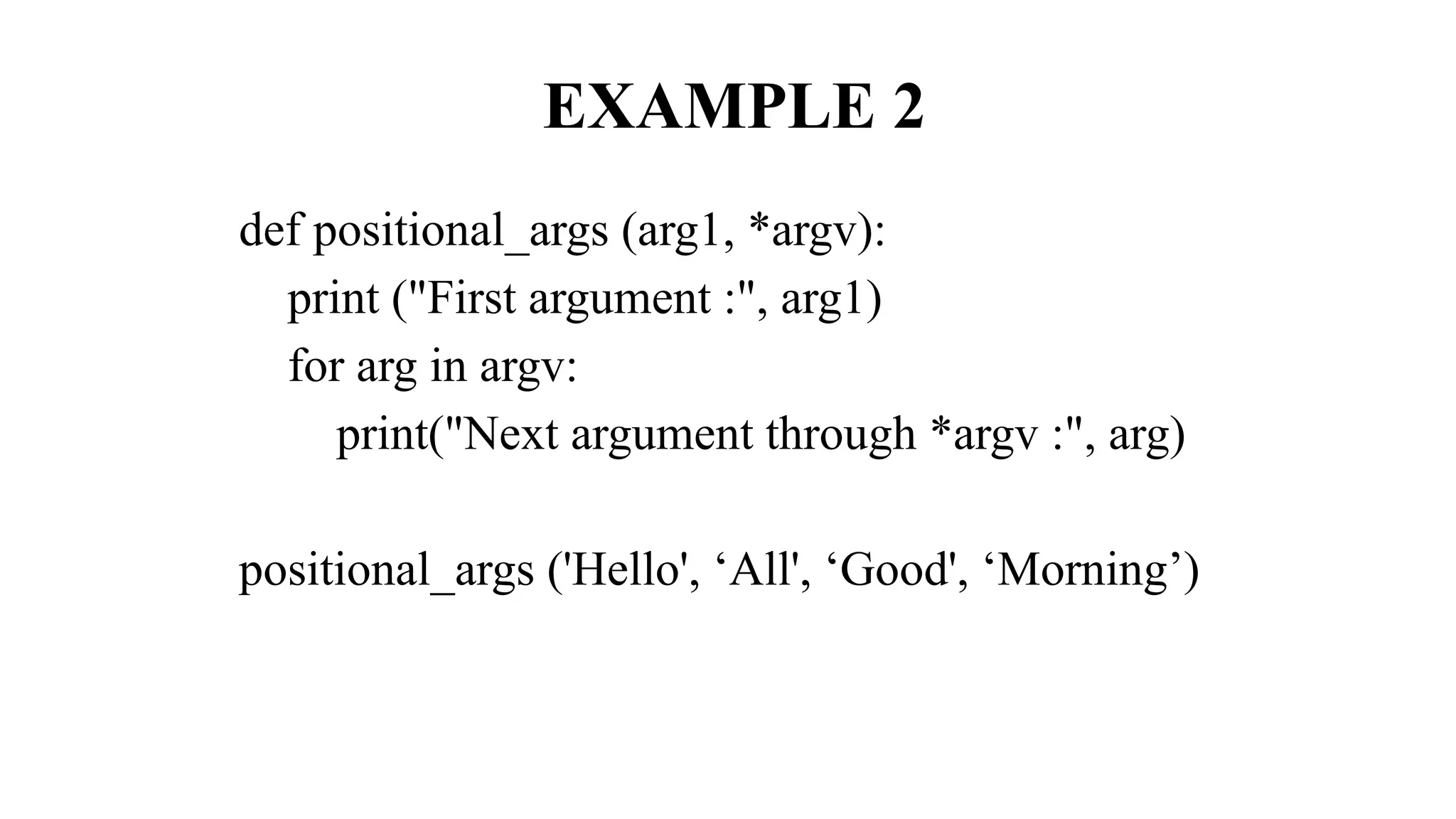
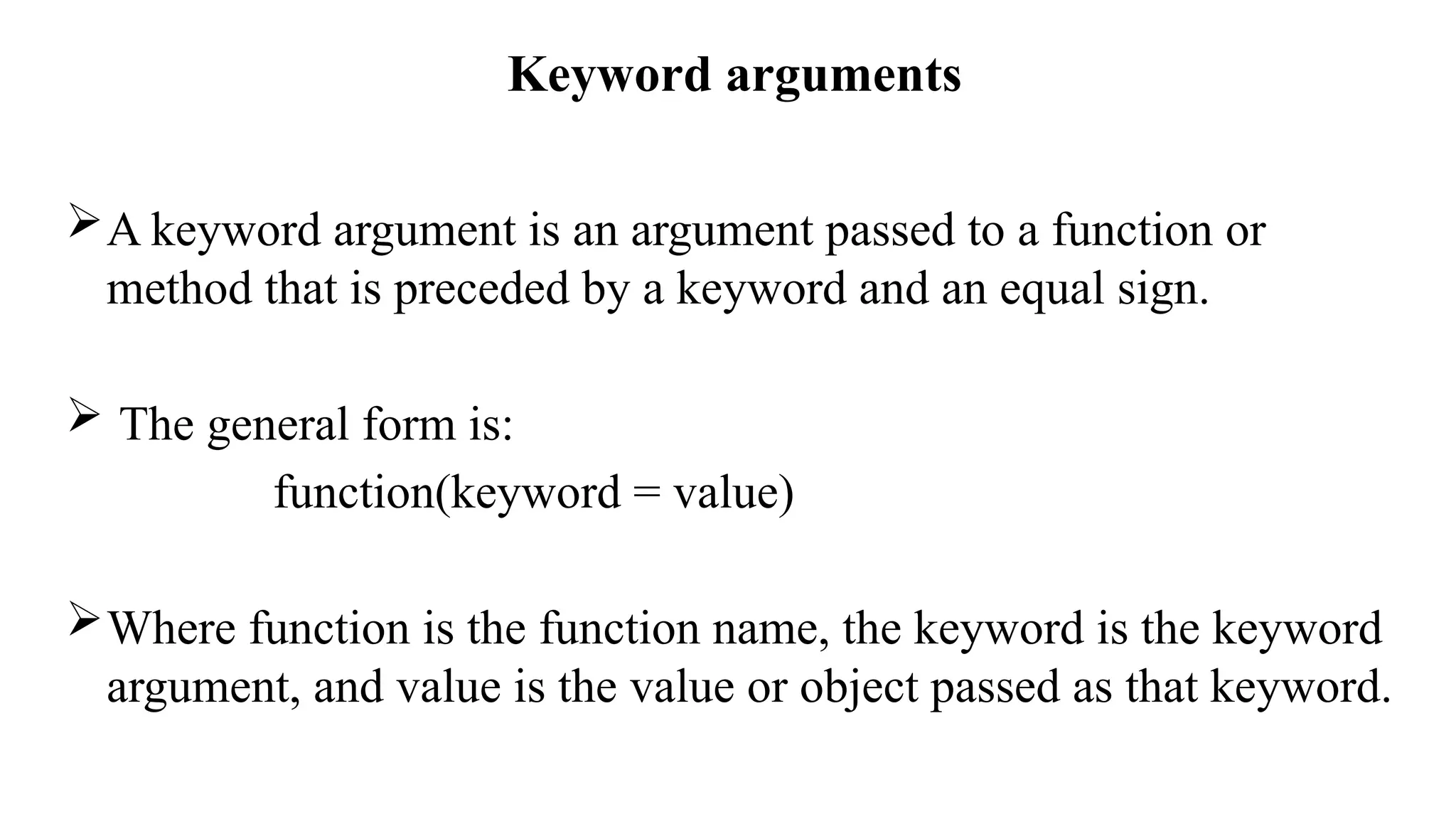
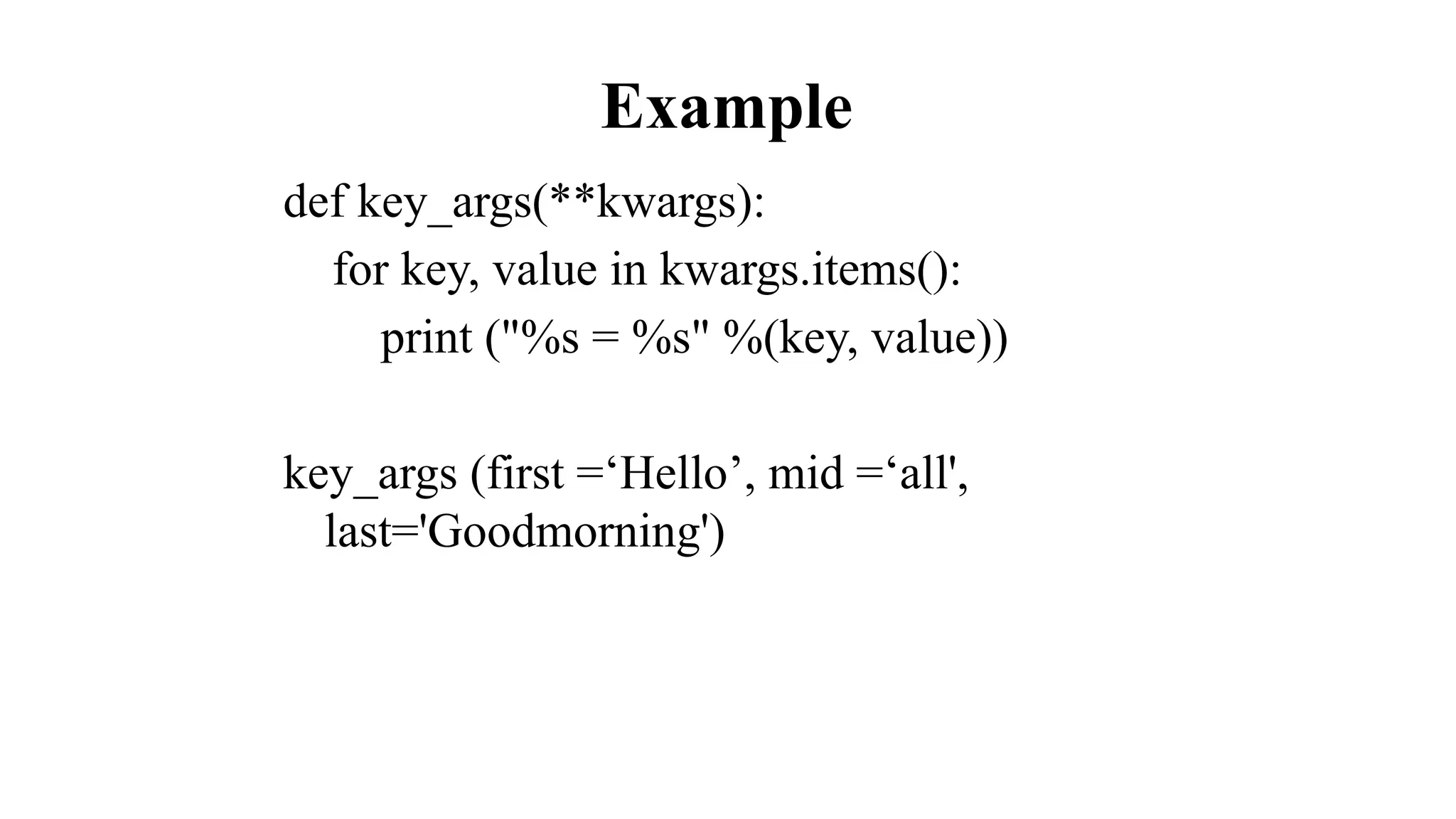
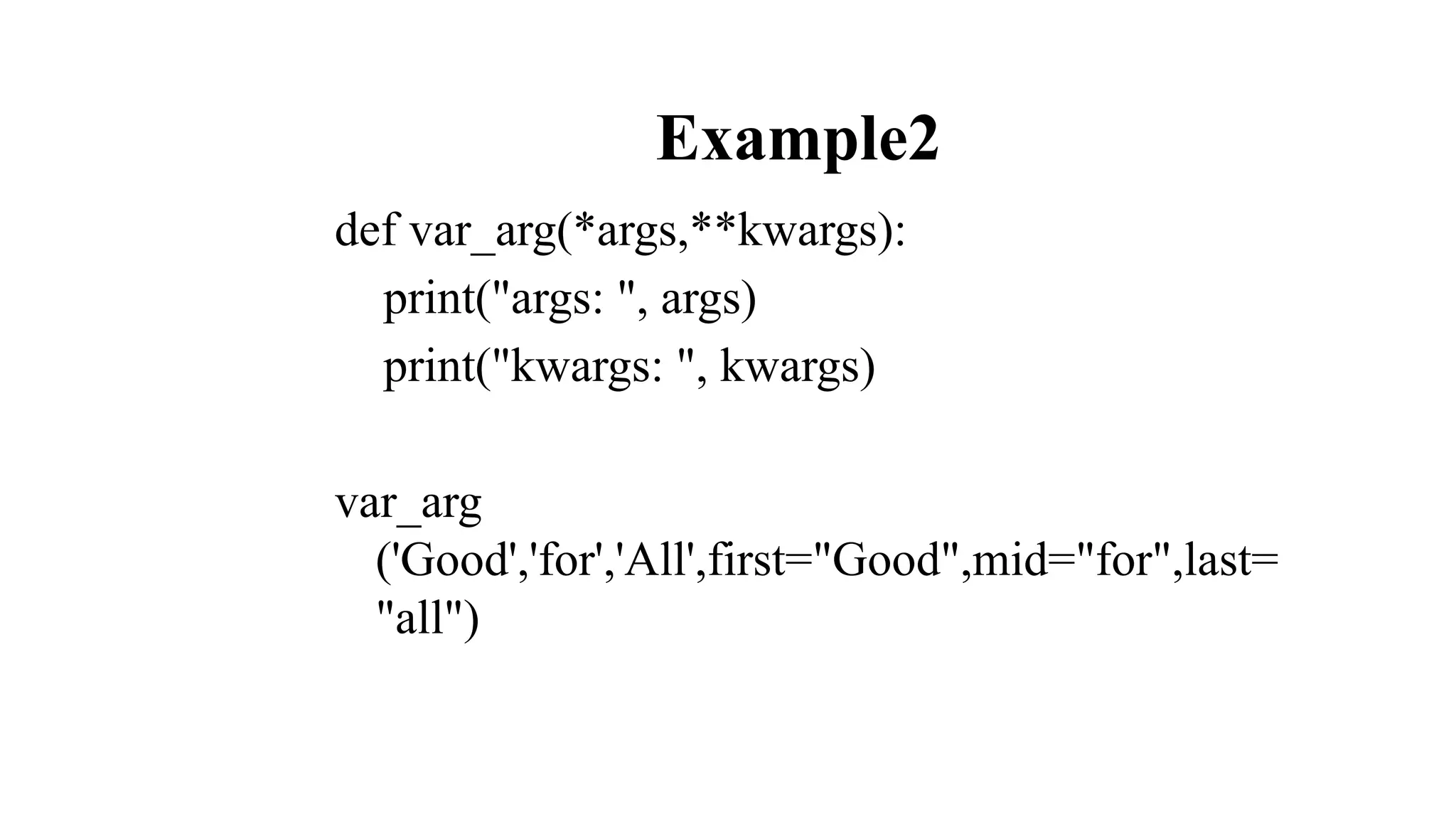
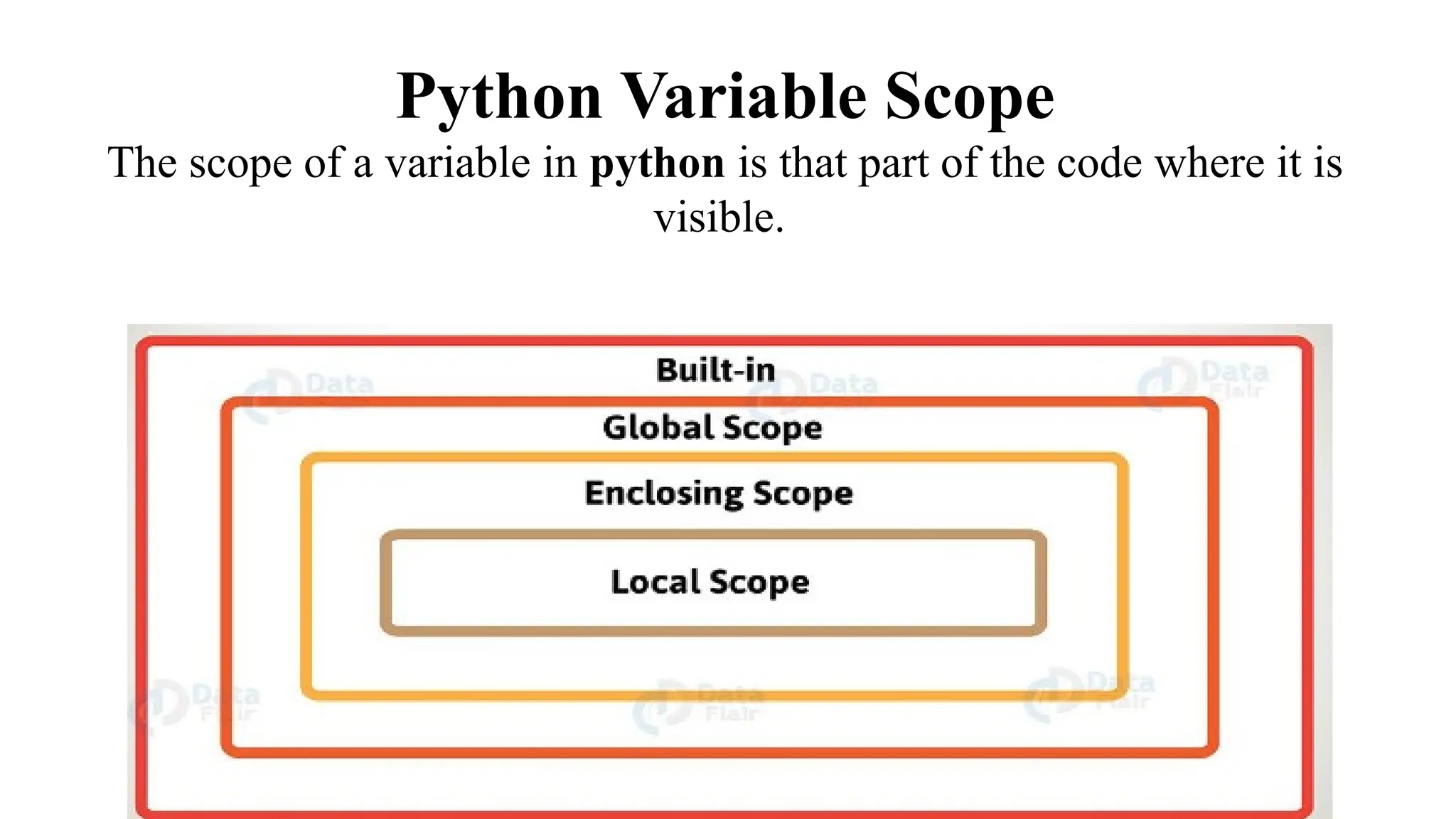
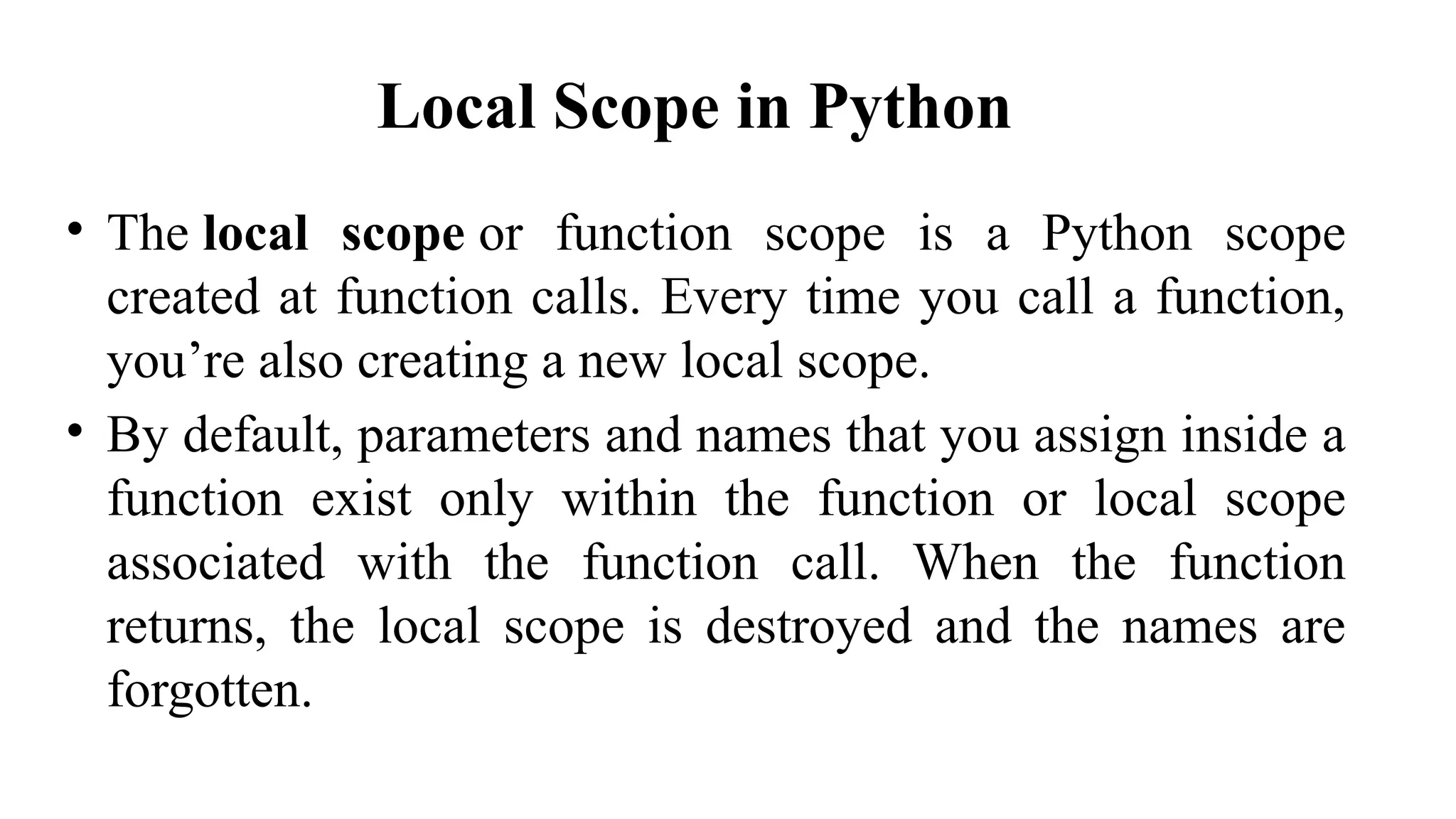
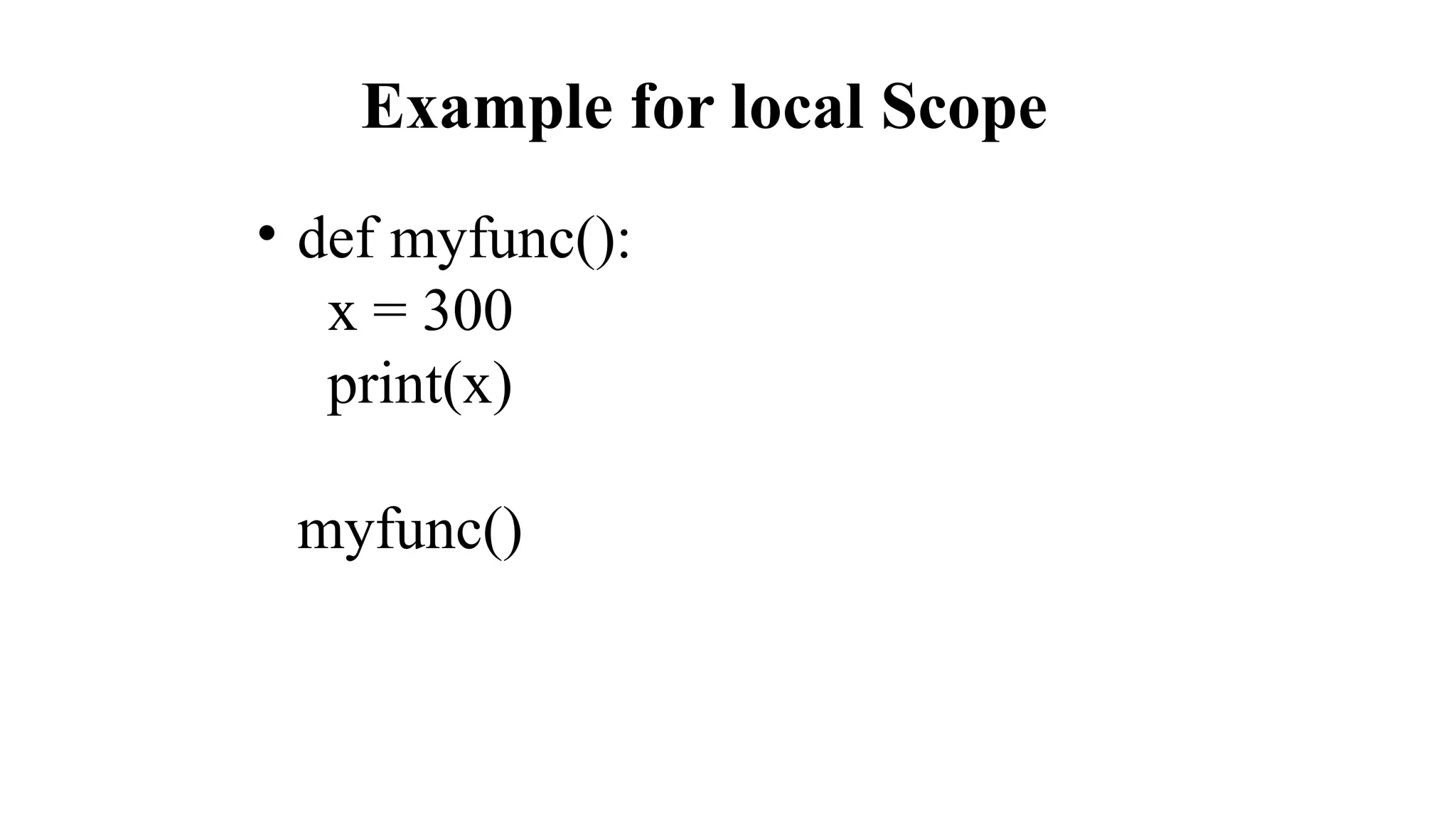
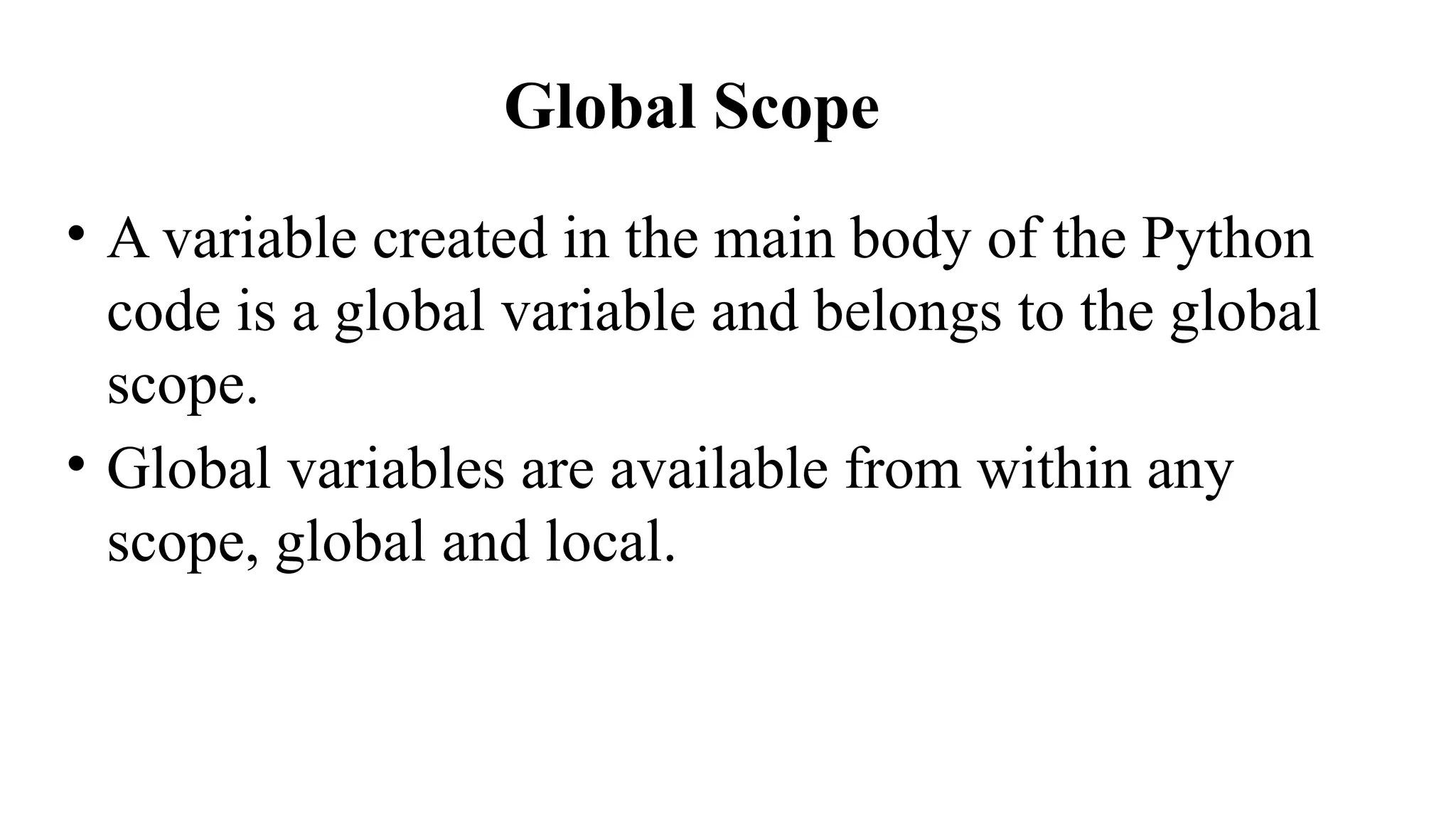
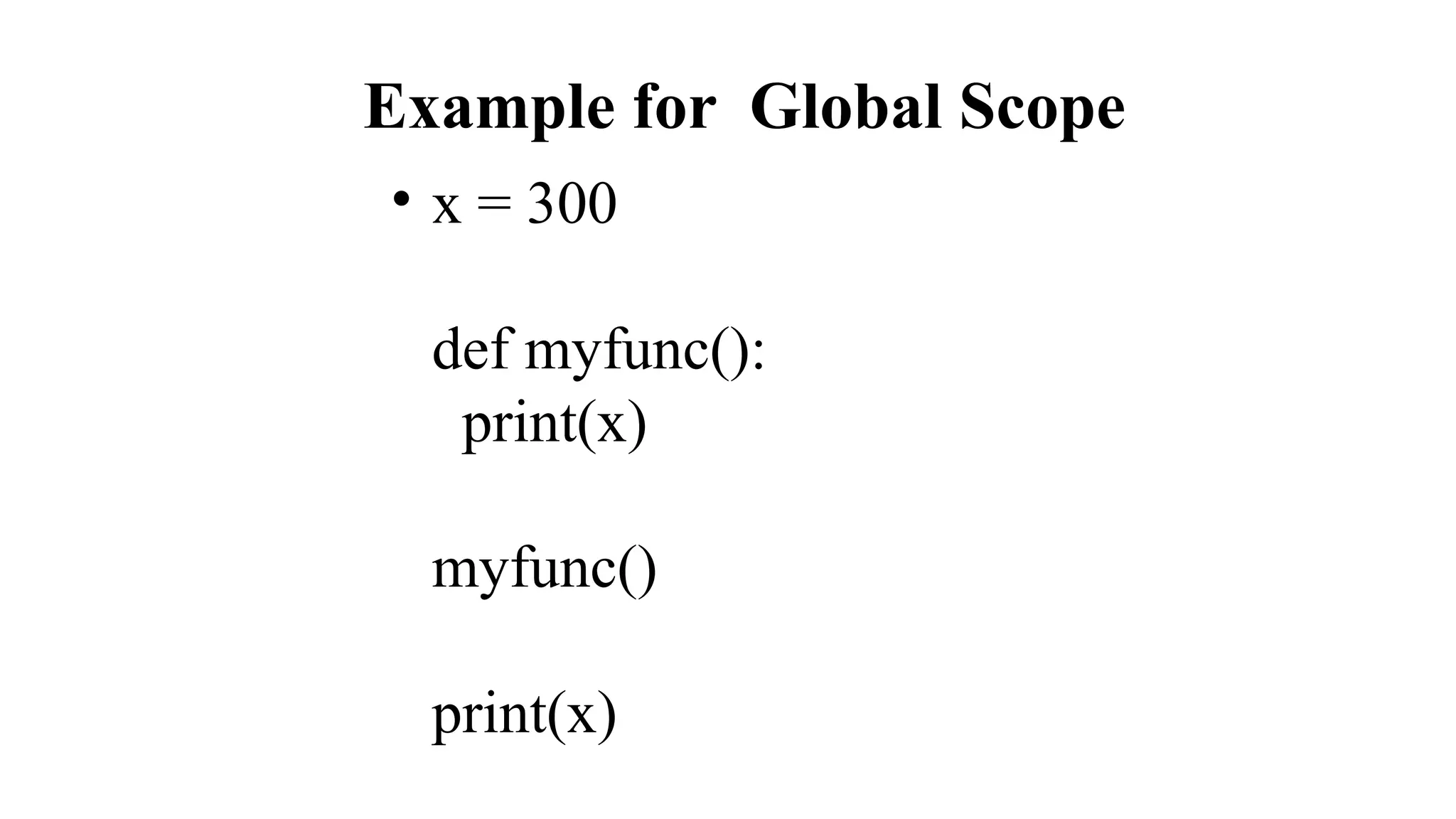
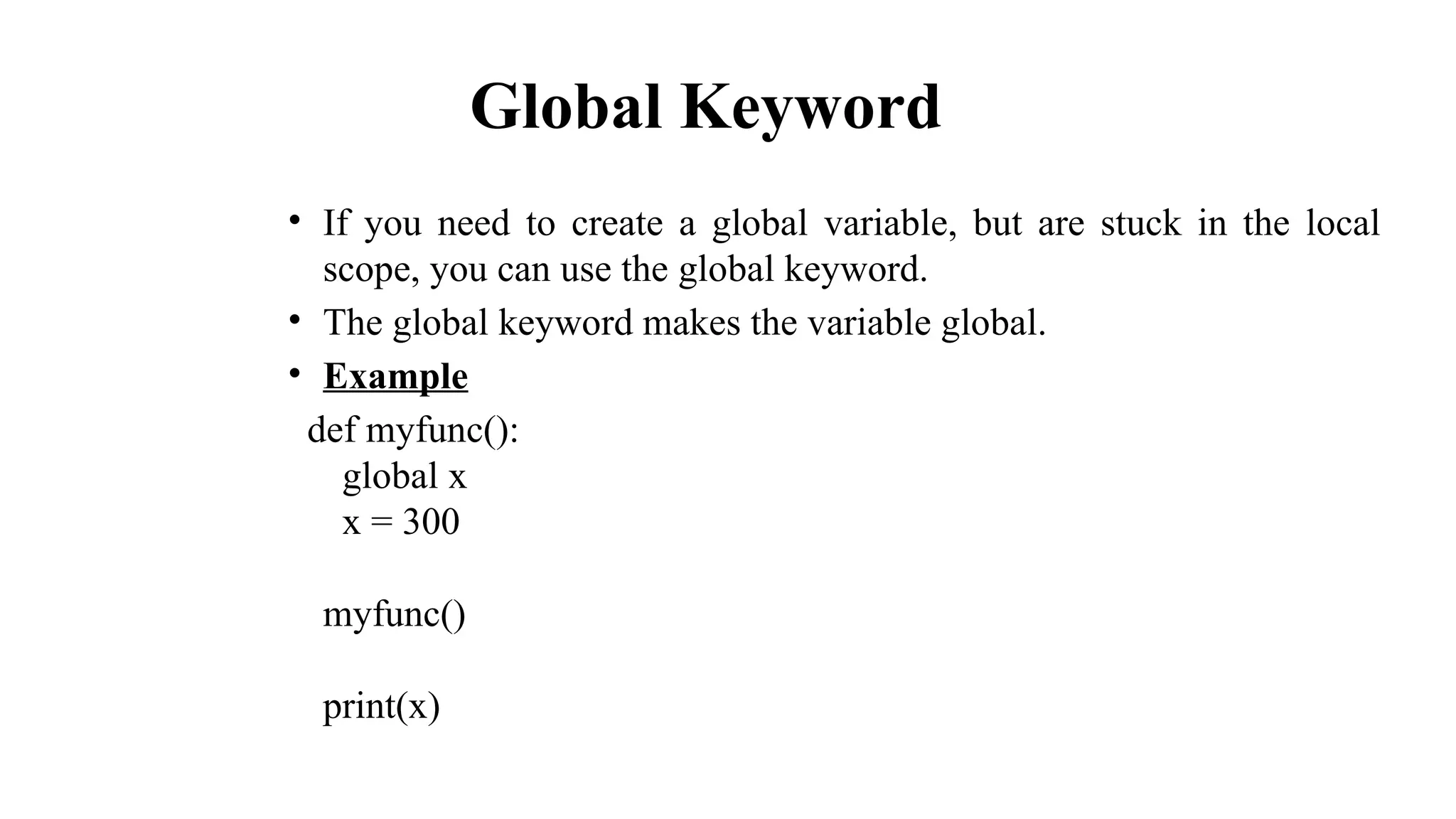
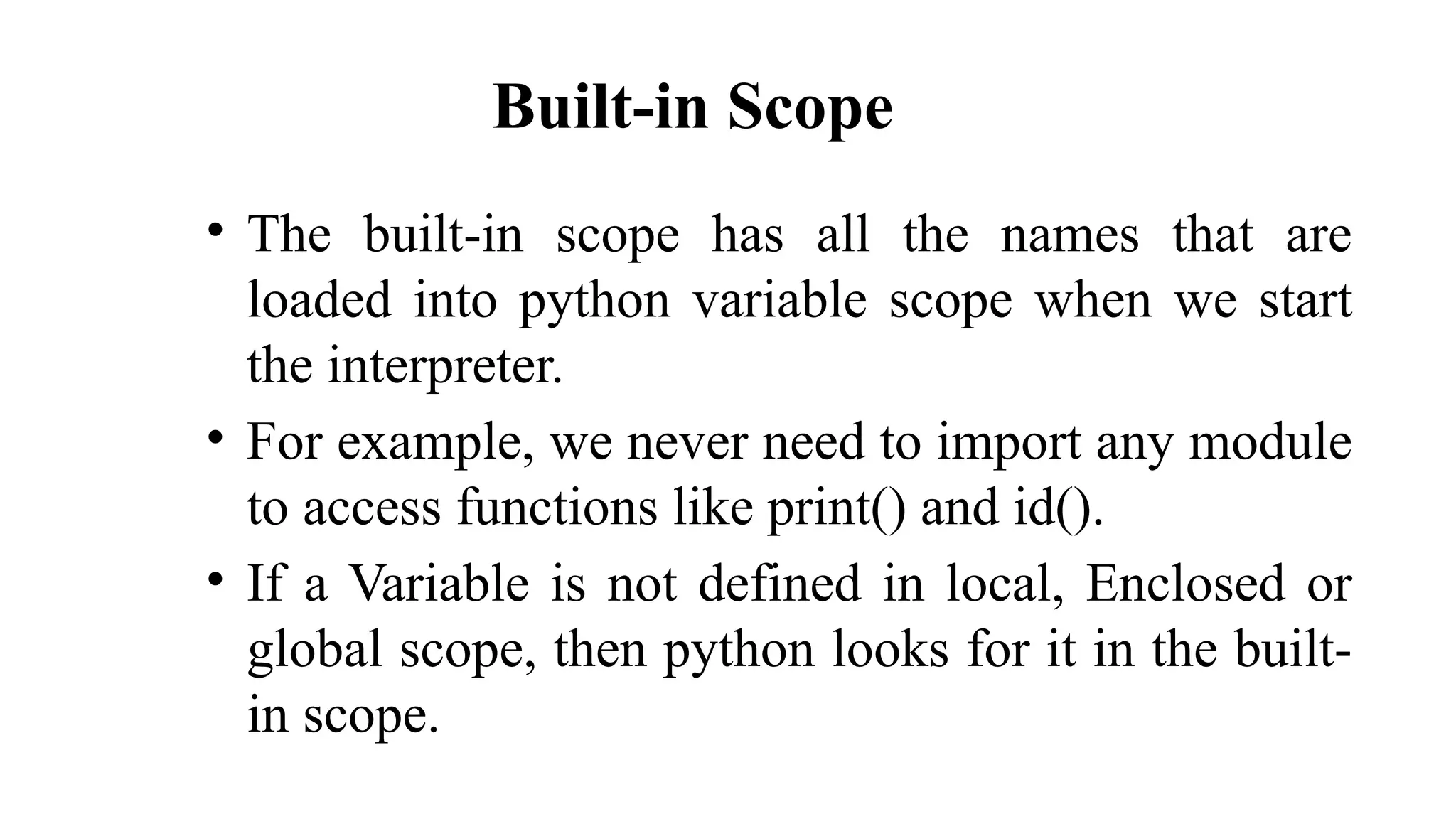
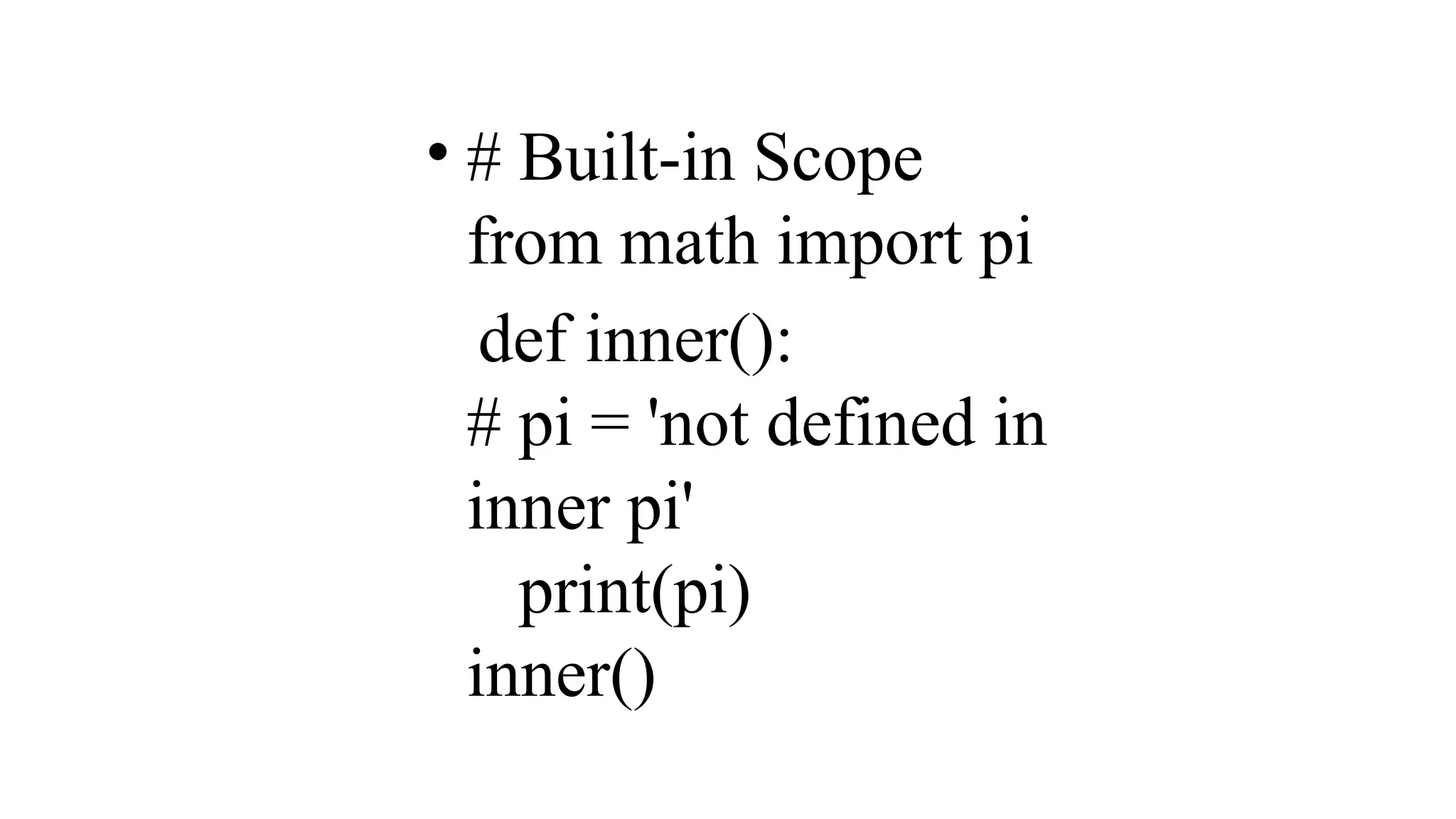
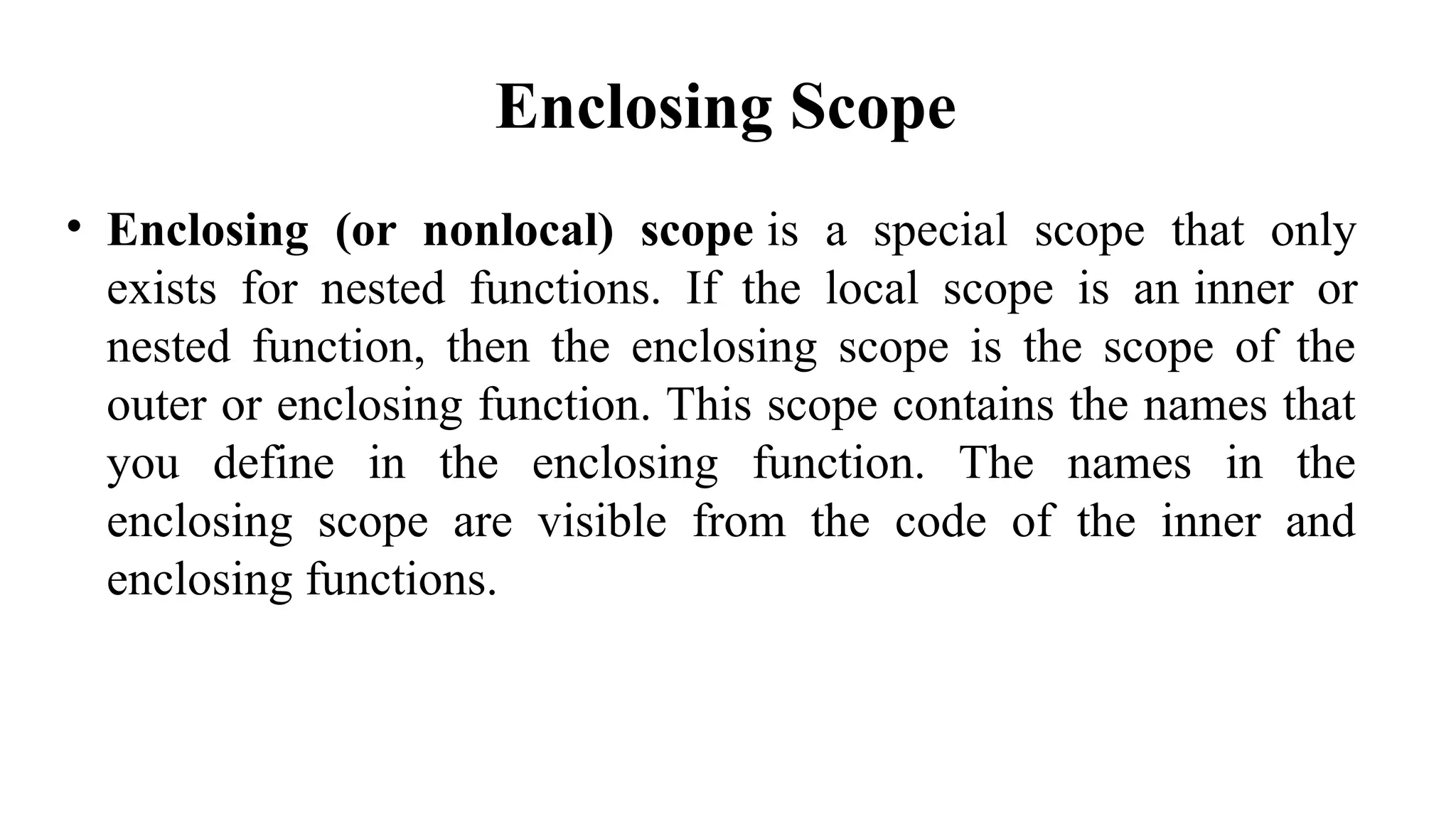
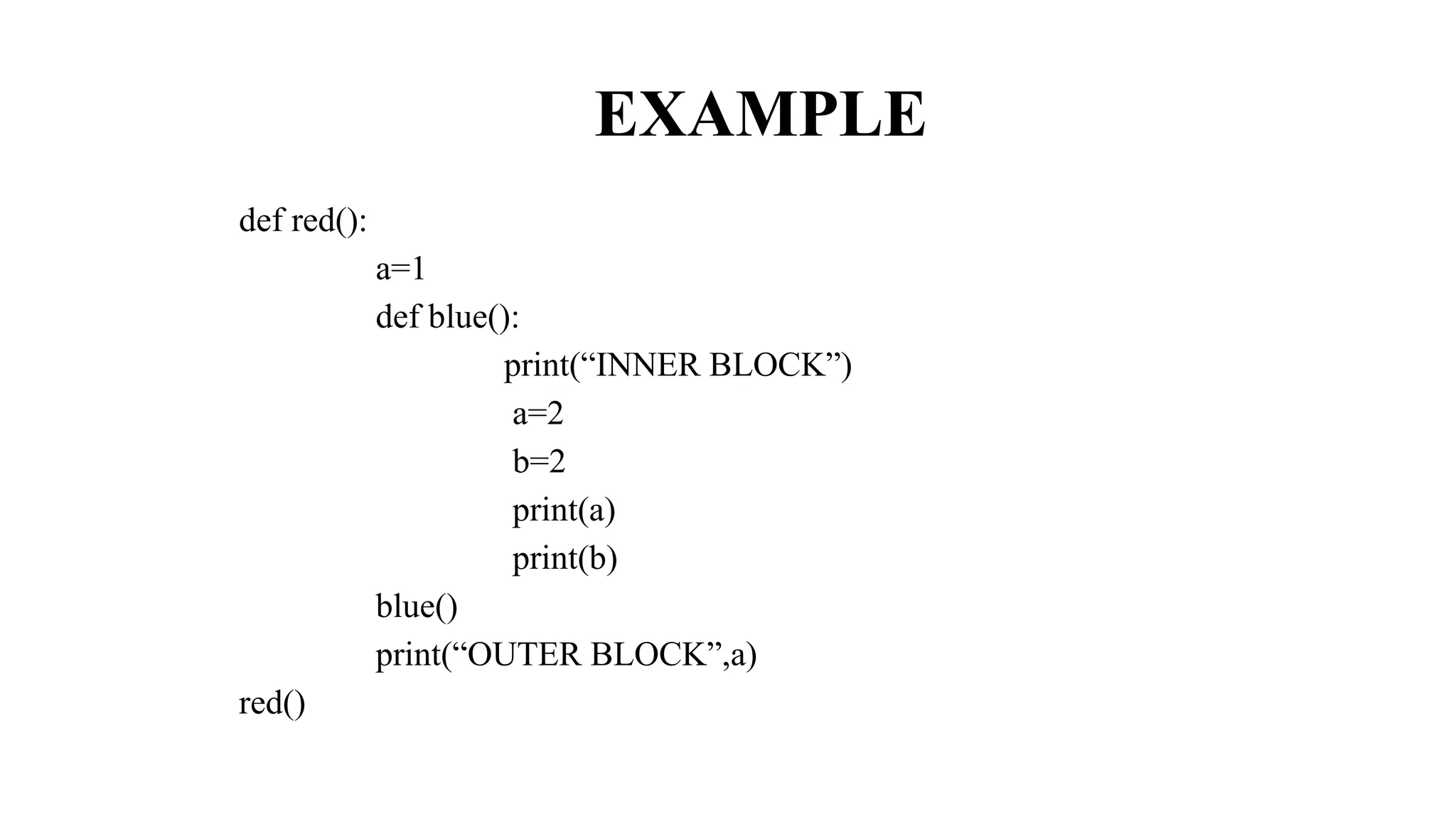
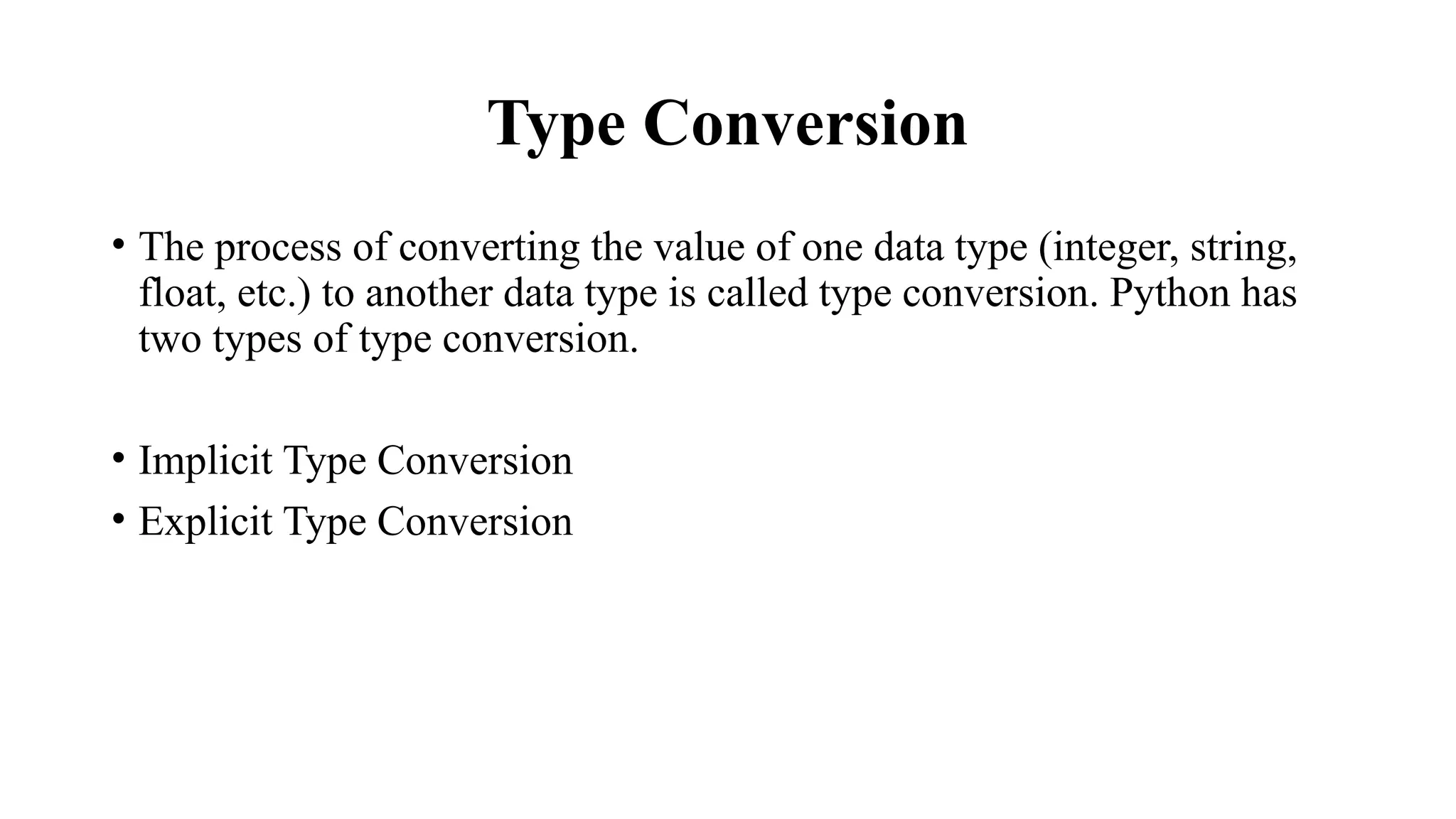
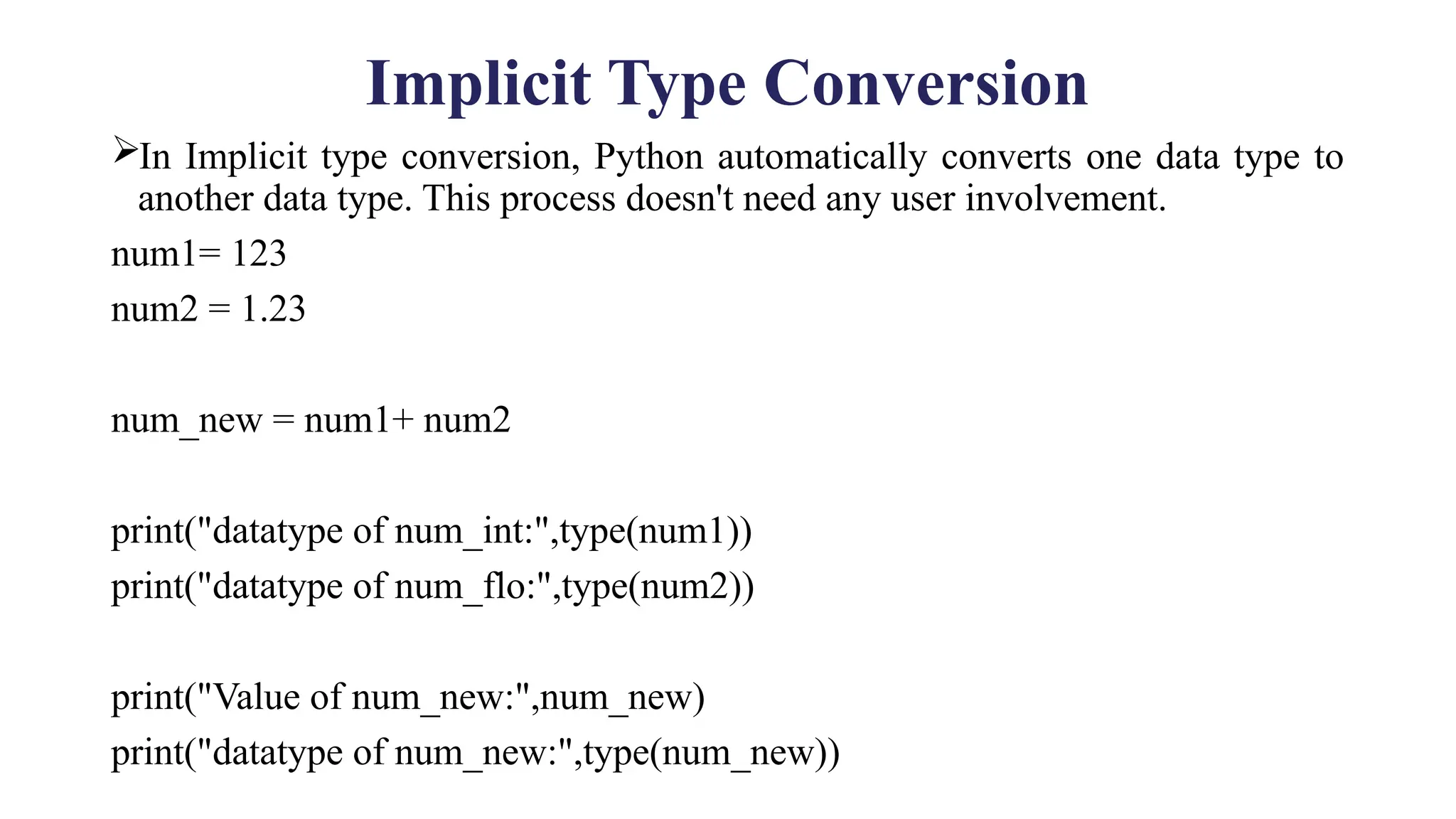
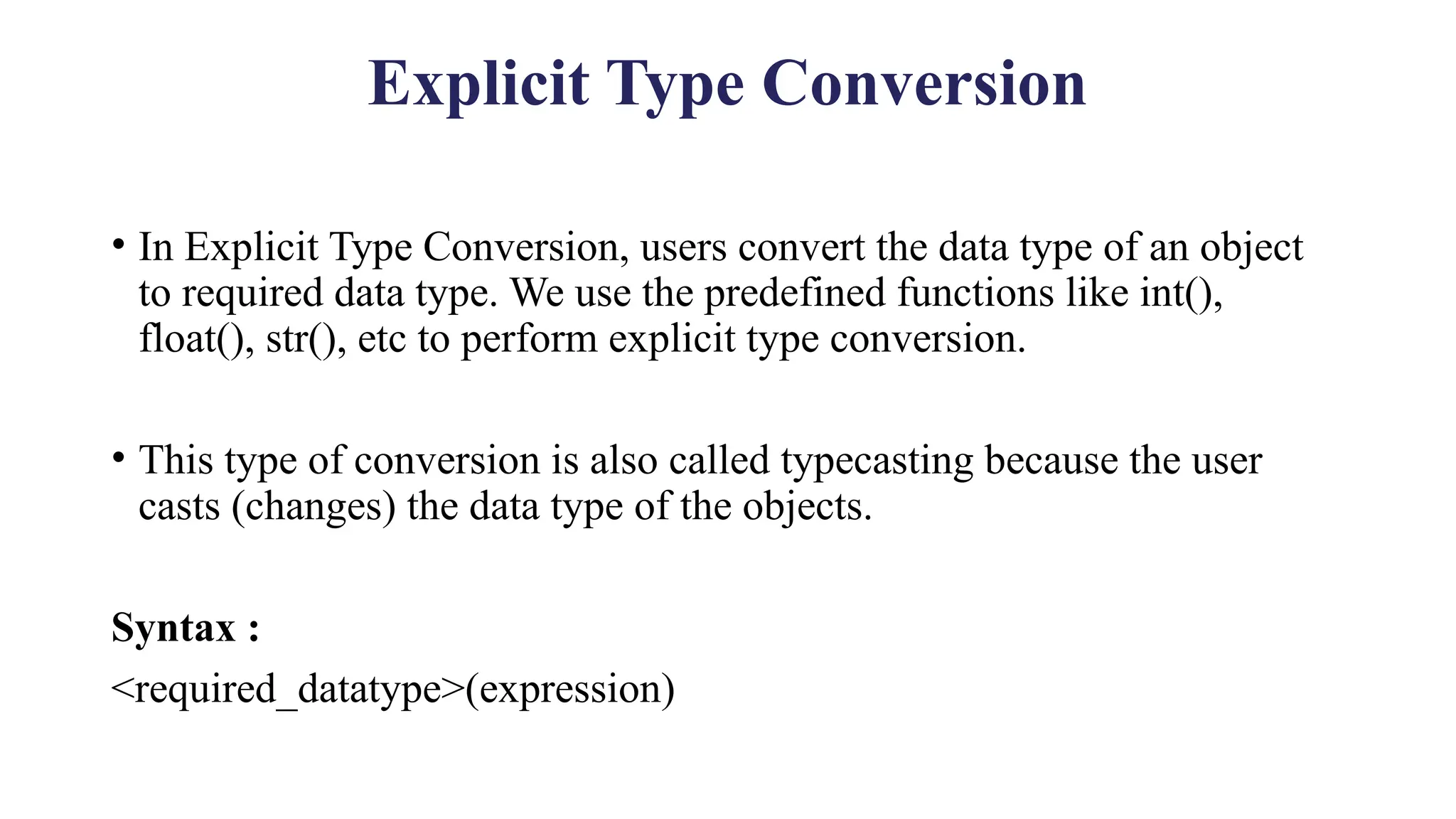
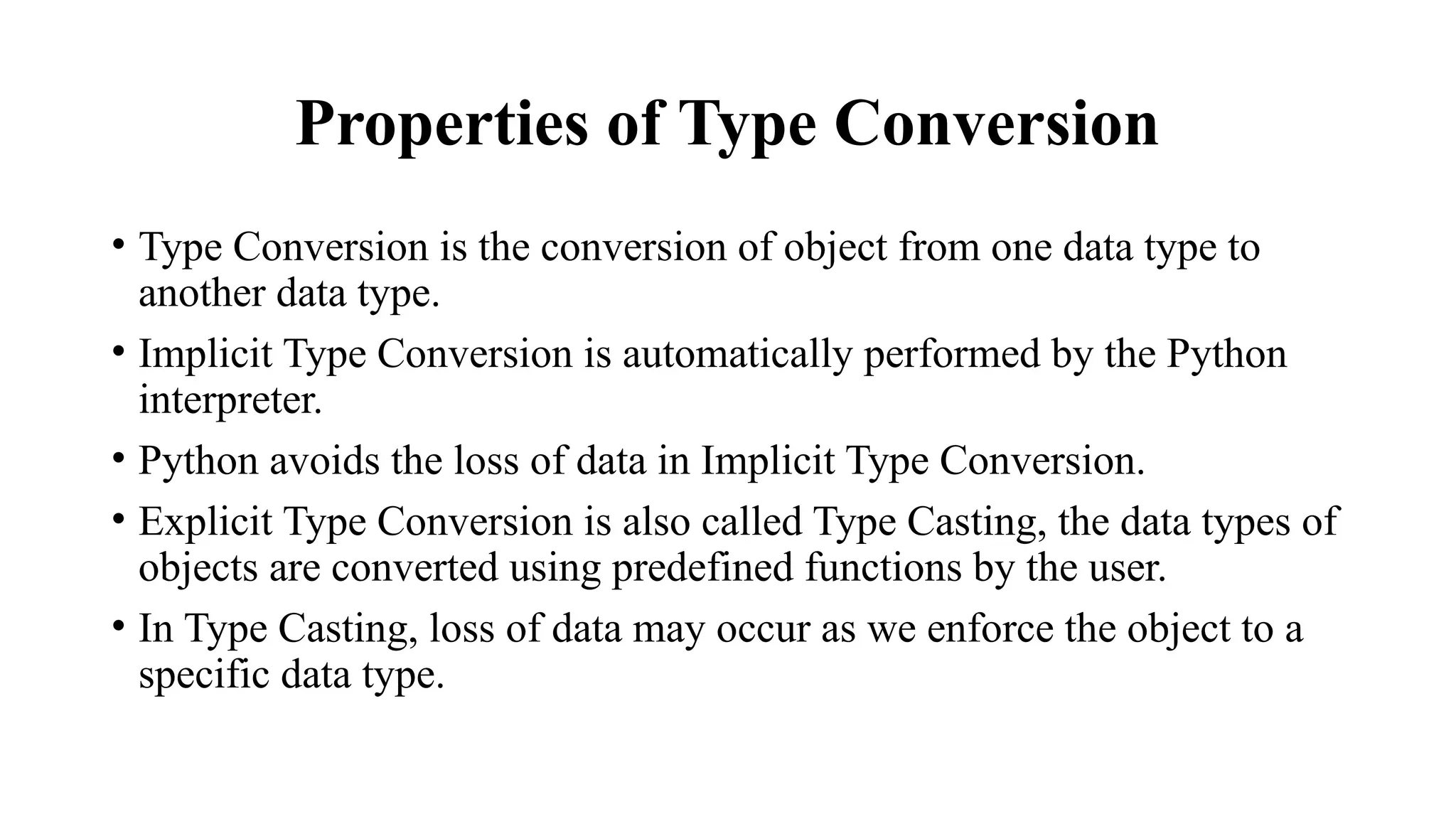
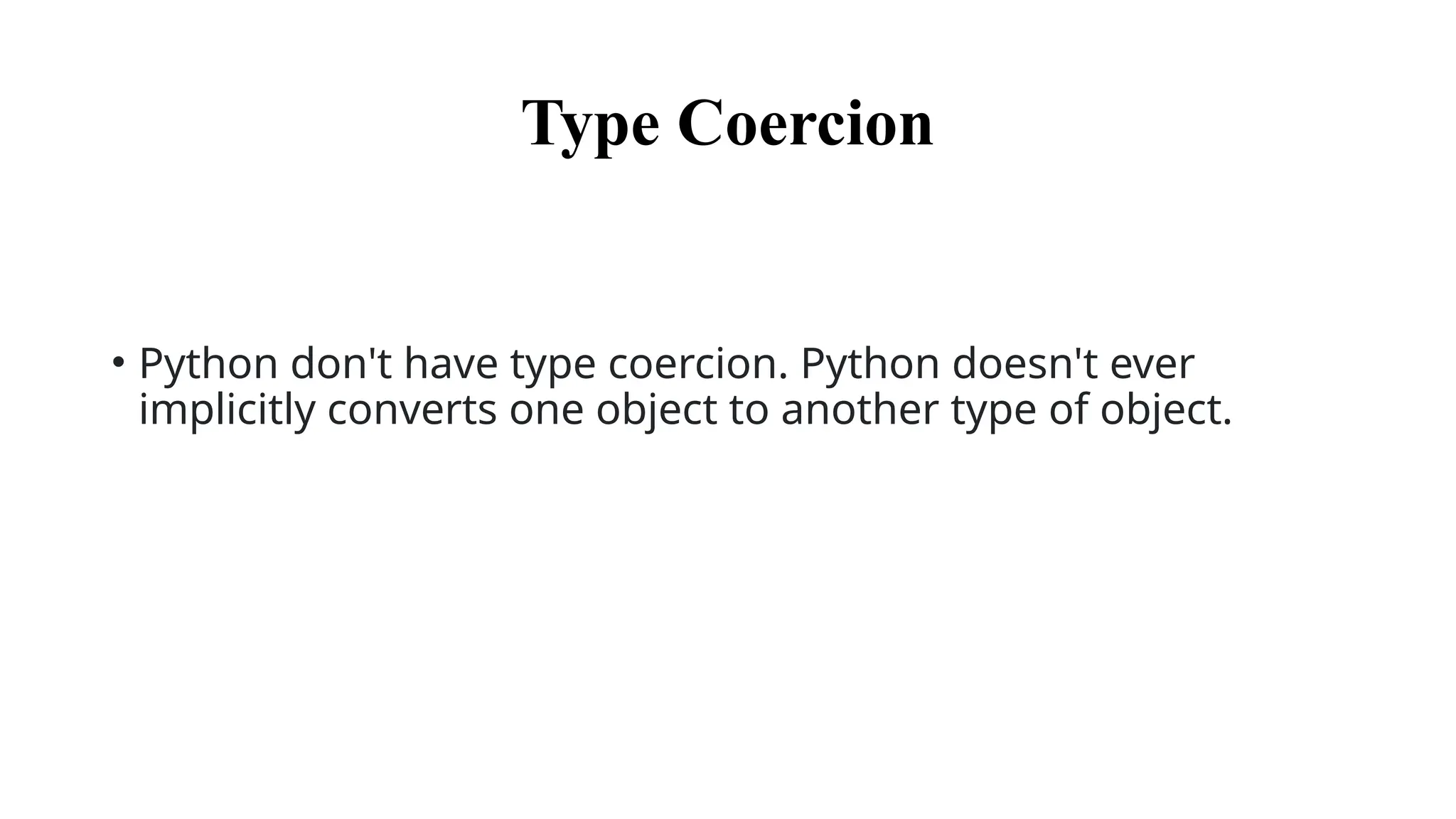
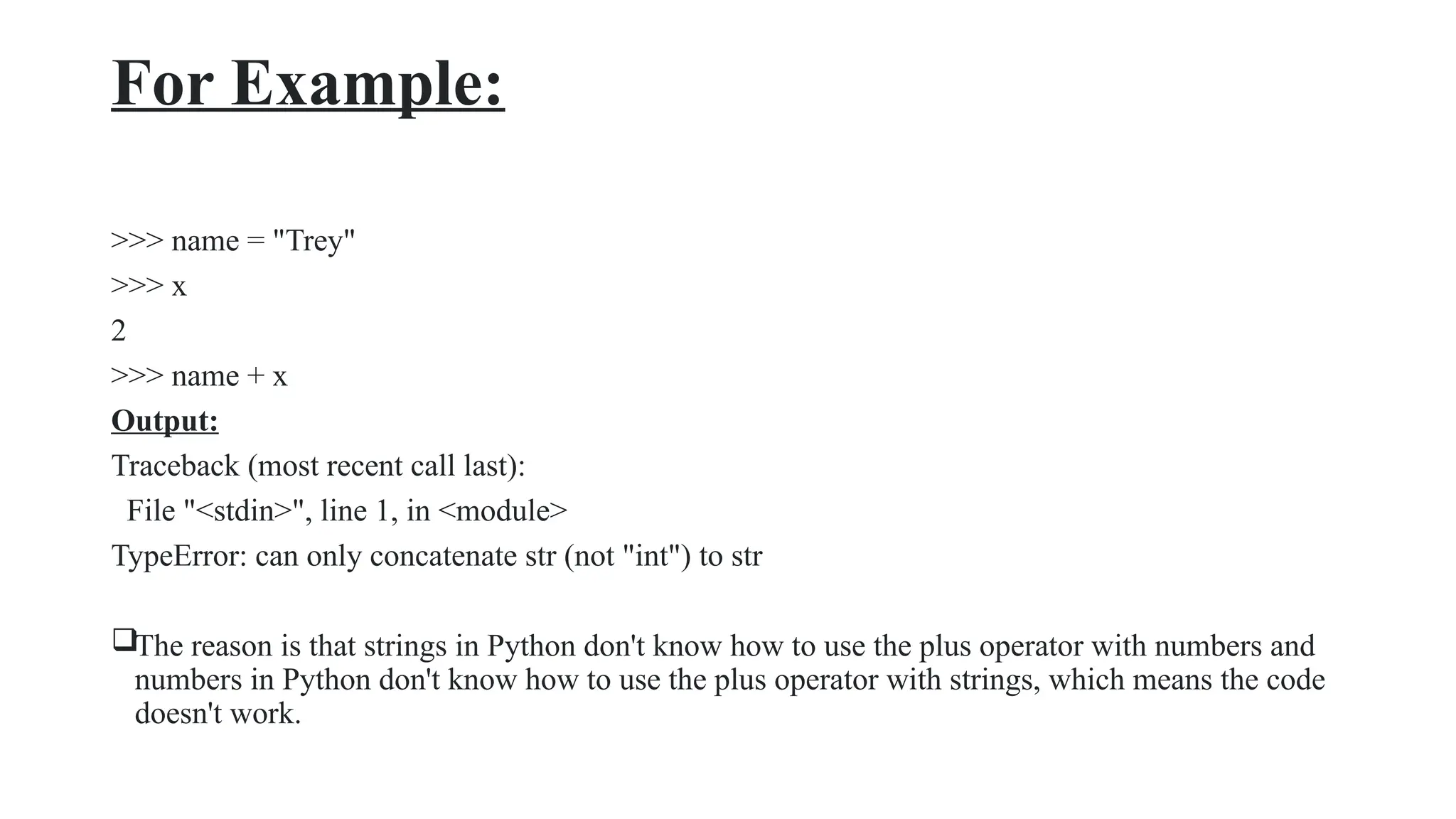
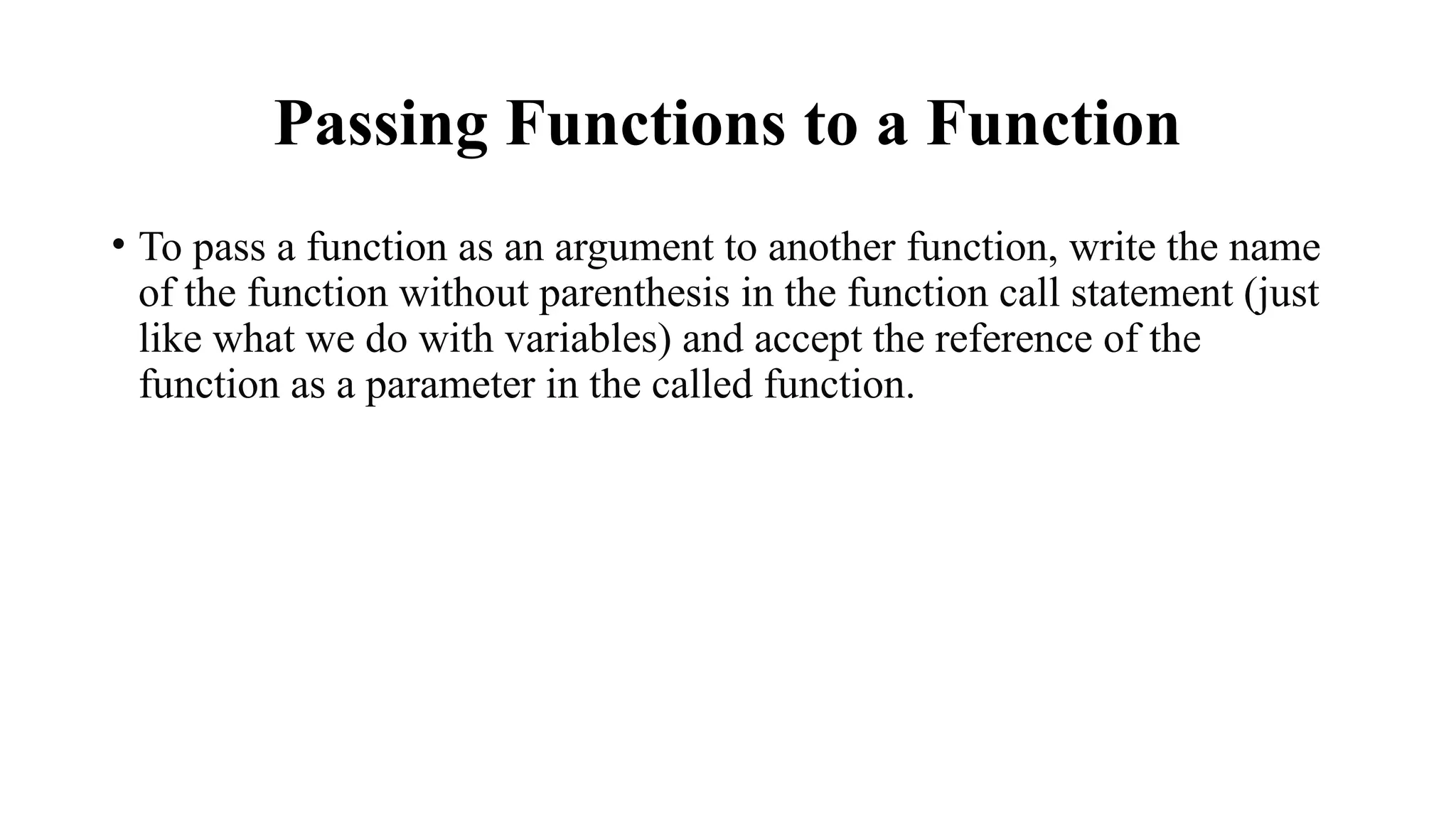
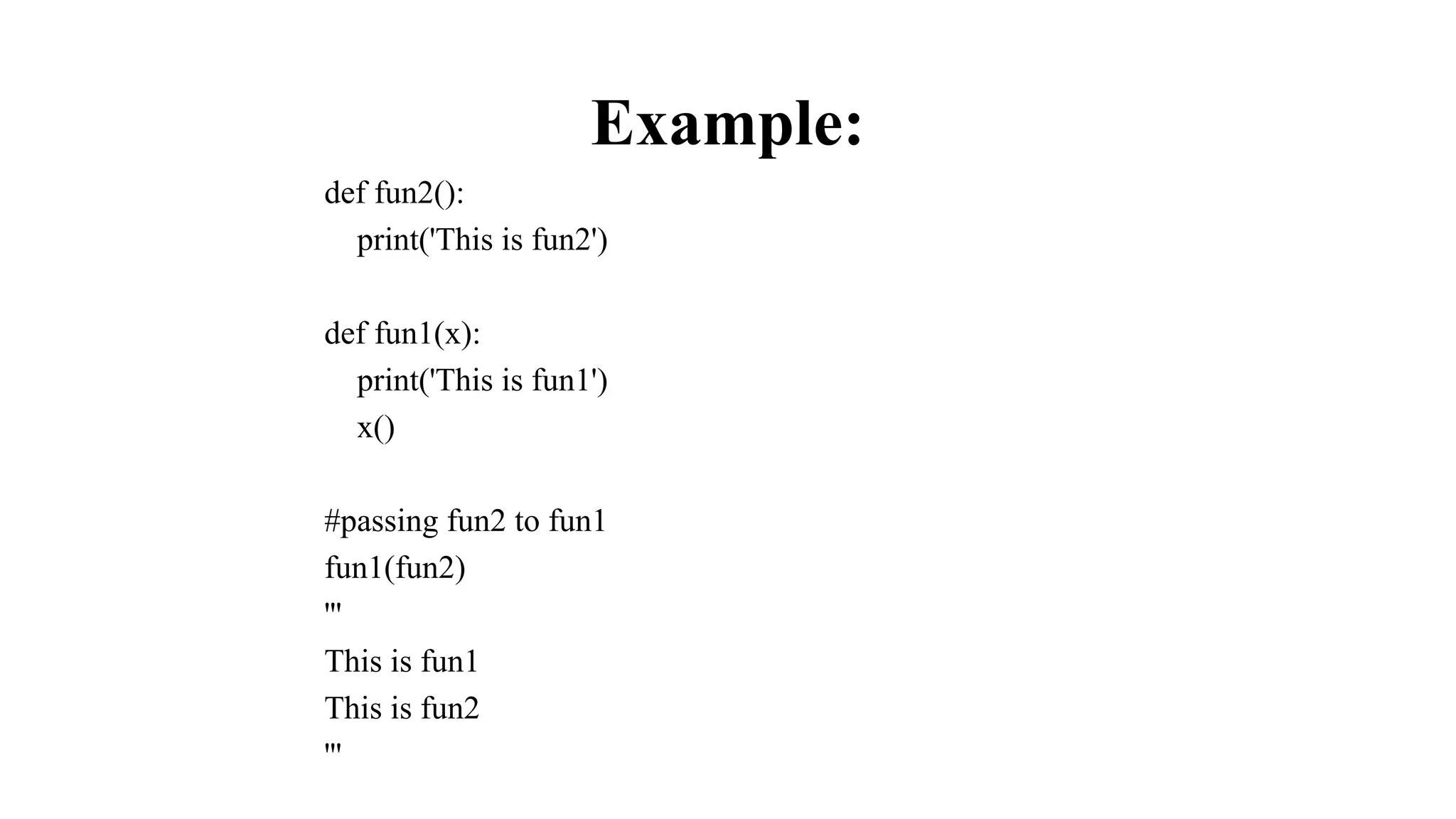
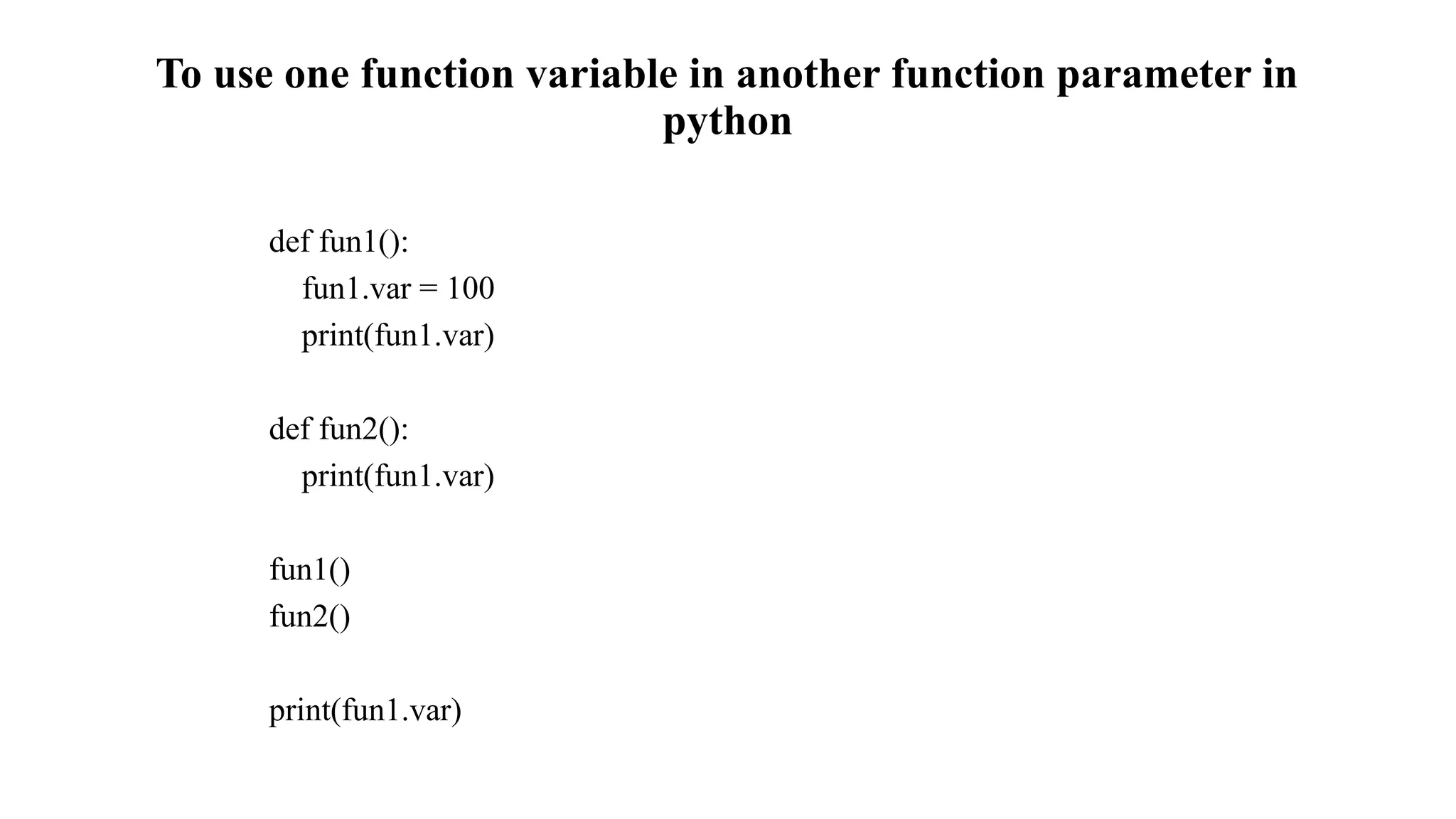
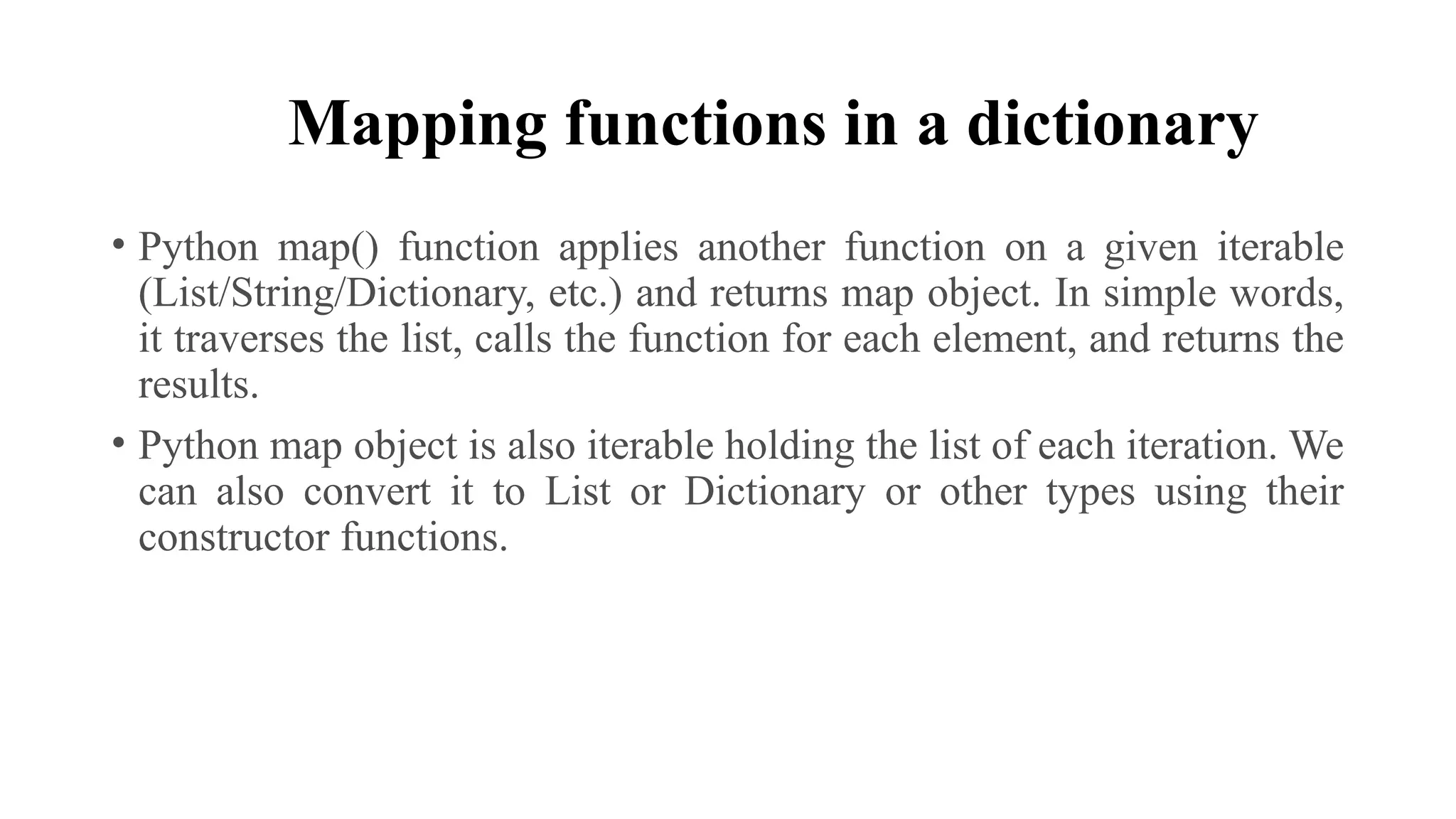
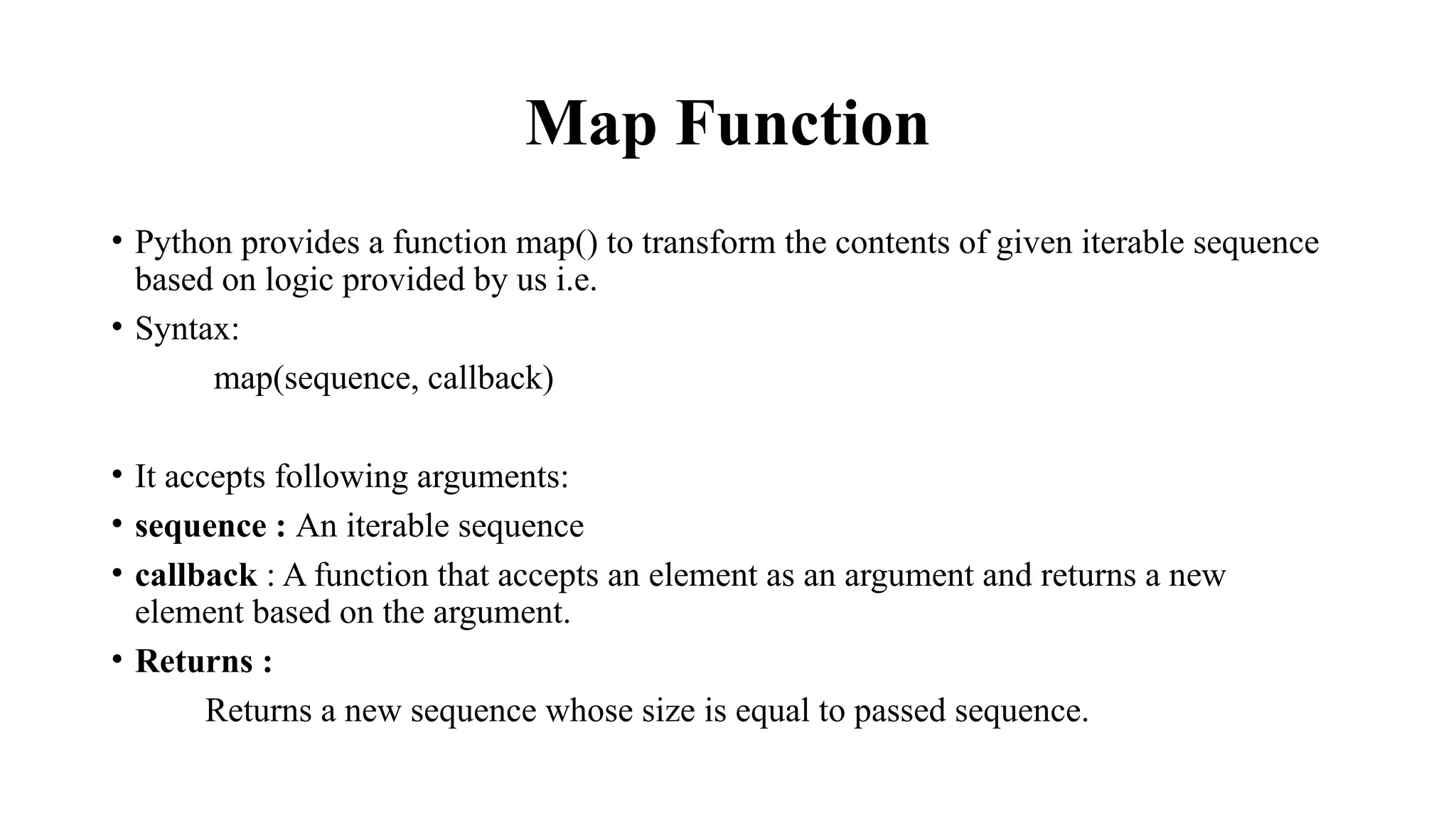
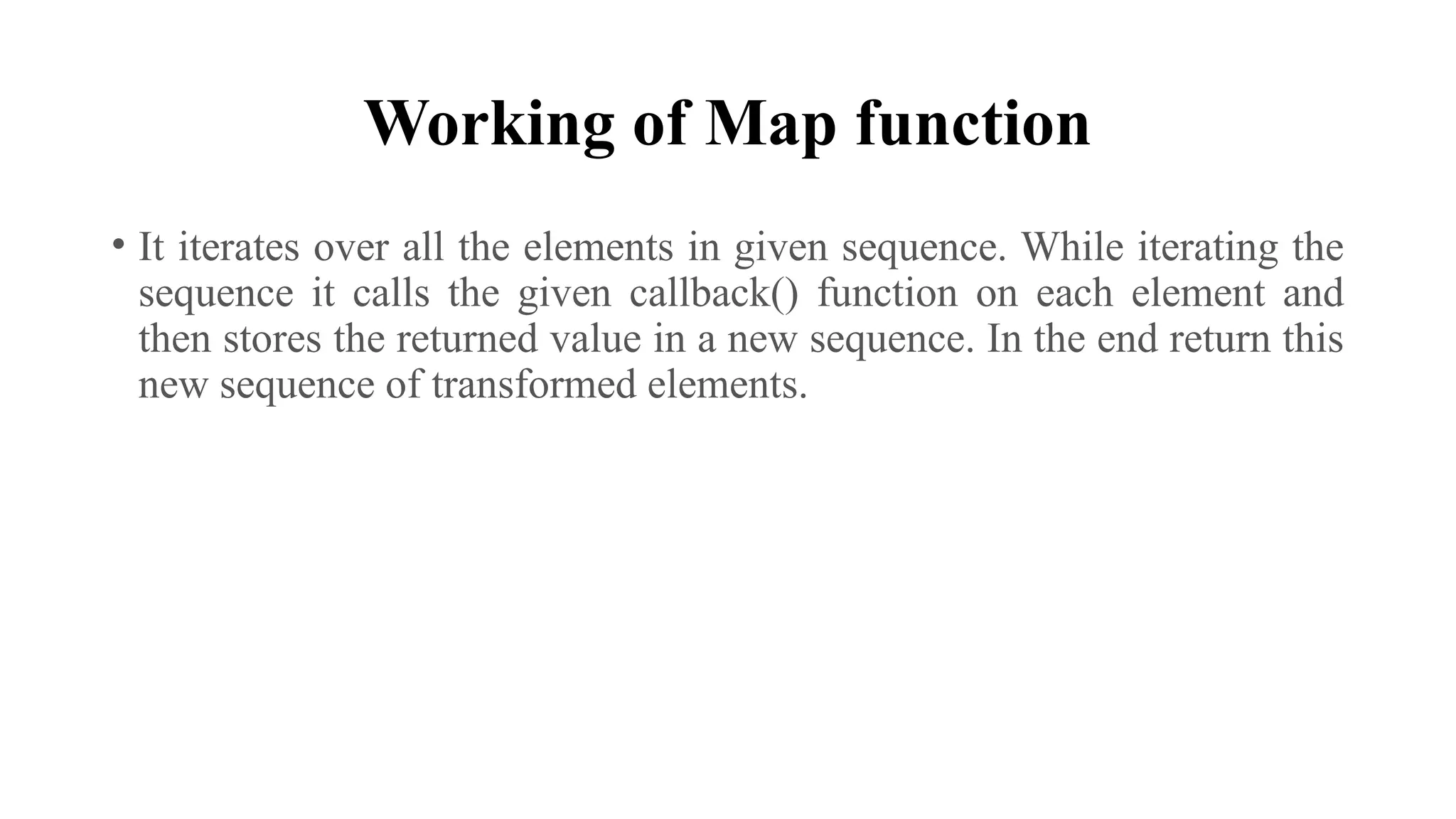
![Use map() function with lambda function
• In the map() function along with iterable sequence we can also the lambda function.
• Let’s use lambda function to reverse each string in the list like we did above using global function,
listOfStr = ['hi', 'this' , 'is', 'a', 'very', 'simple', 'string' , 'for', 'us']
• # Reverse each string in the list using lambda function & map()
modifiedList = list(map(lambda x : x[::-1], listOfStr))
print('Modified List : ', modifiedList)
• Output:
Modified List : ['ih', 'siht', 'si', 'a', 'yrev', 'elpmis', 'gnirts', 'rof', 'su']
• It iterates over the list of string and apply lambda function on each string element.
• Then stores the value returned by lambda function to a new sequence for each element.
• Then in last returns the new sequence of reversed string elements.](https://image.slidesharecdn.com/python-unit3-updated-250926154750-075bd96a/75/Python-Mastering-python-Tips-and-techniques-46-2048.jpg)
![Using map() function to transform Dictionaries in Python
• Suppose we have a dictionary i.e.
dictOfNames = {
7 : 'sam',
8: 'john',
9: 'mathew',
10: 'riti',
11 : 'aadi',
12 : 'sachin'
}
• Now we want to transform the values in dictionary by appending ‘_’ at the end of each value i.e.
# add an '_' to the value field in each key value pair of dictionary
dictOfNames = dict(map(lambda x: (x[0], x[1] + '_'), dictOfNames.items() ))
print('Modified Dictionary : ')
print(dictOfNames)](https://image.slidesharecdn.com/python-unit3-updated-250926154750-075bd96a/75/Python-Mastering-python-Tips-and-techniques-47-2048.jpg)
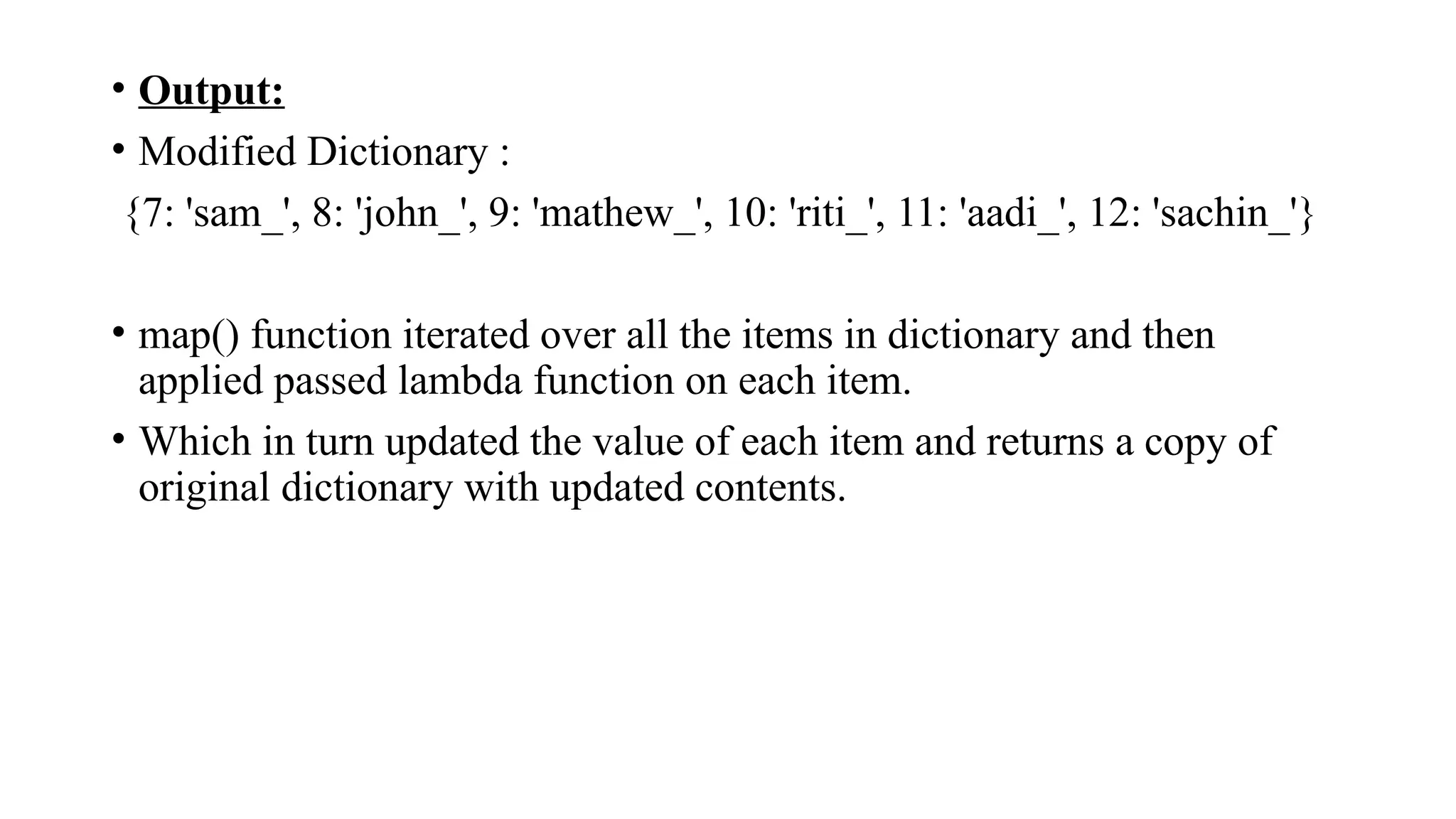
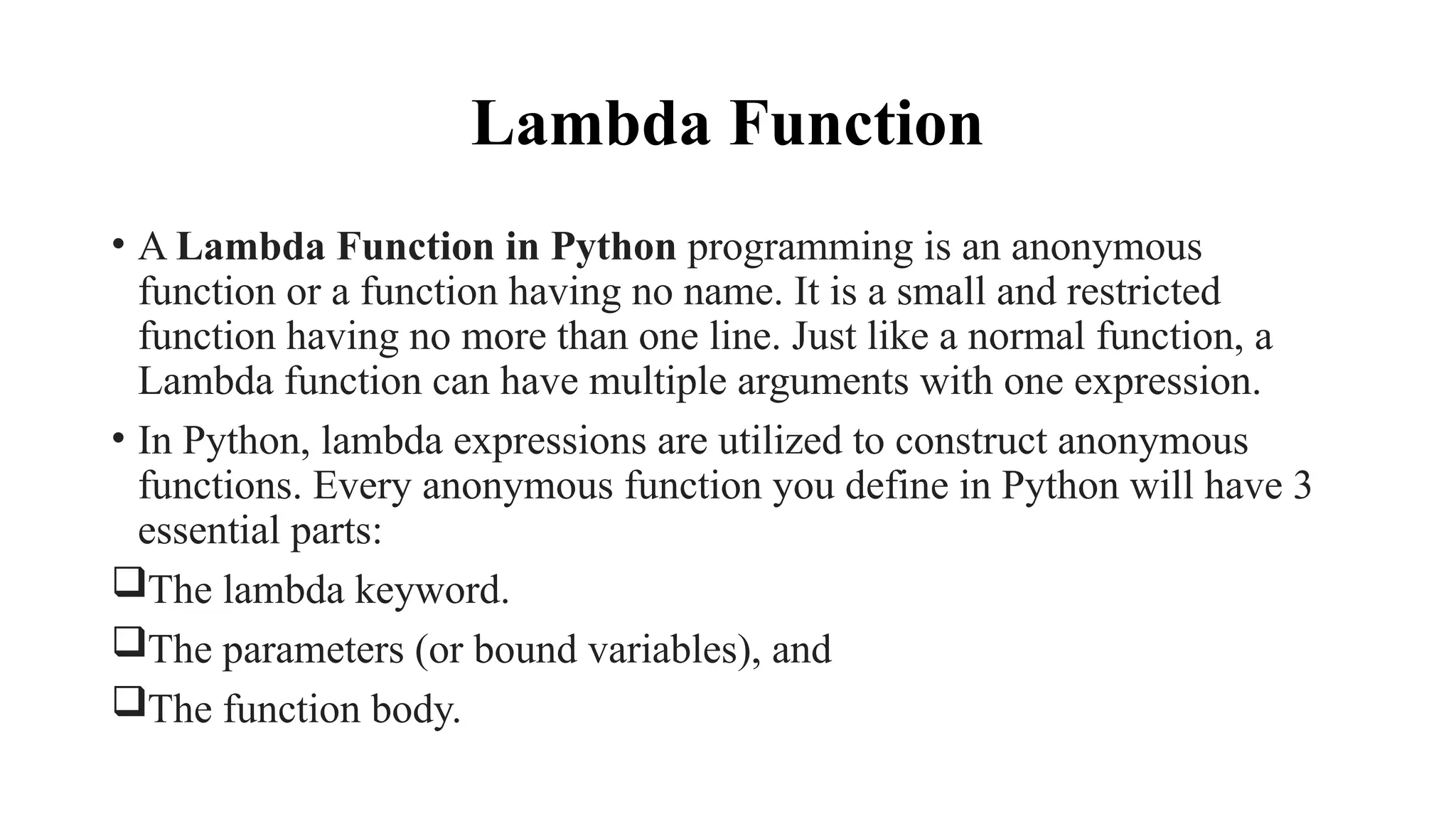
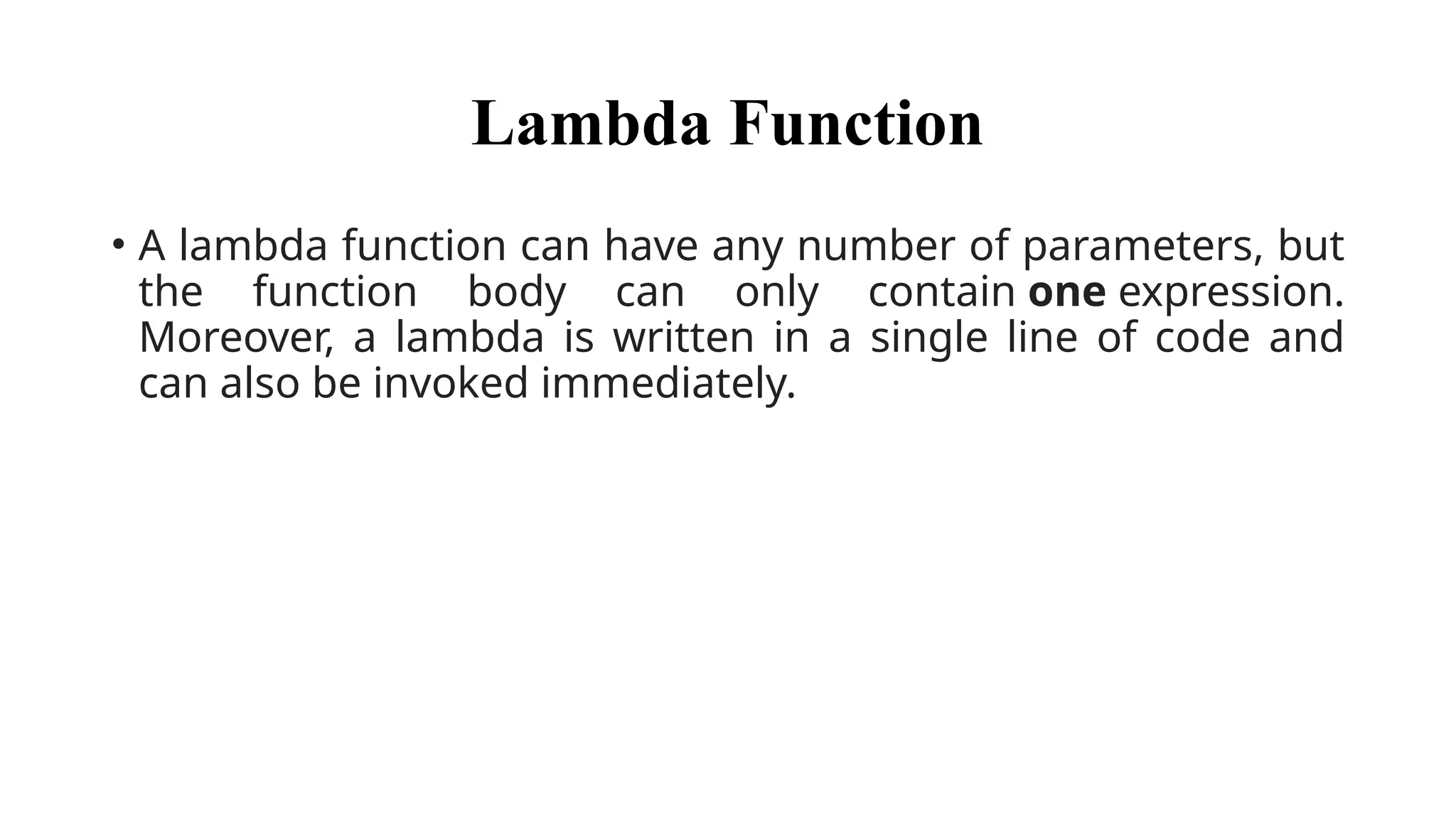
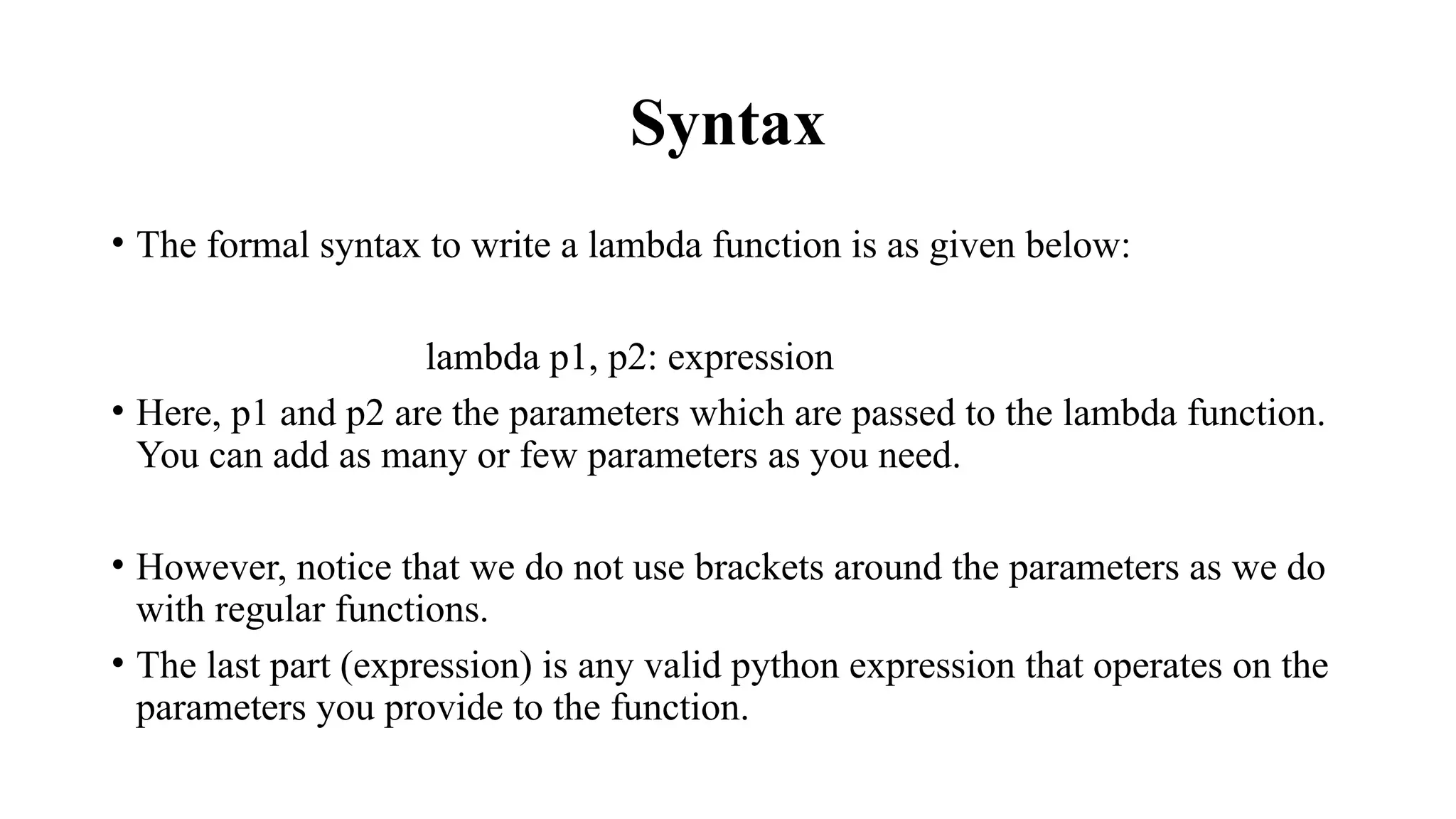
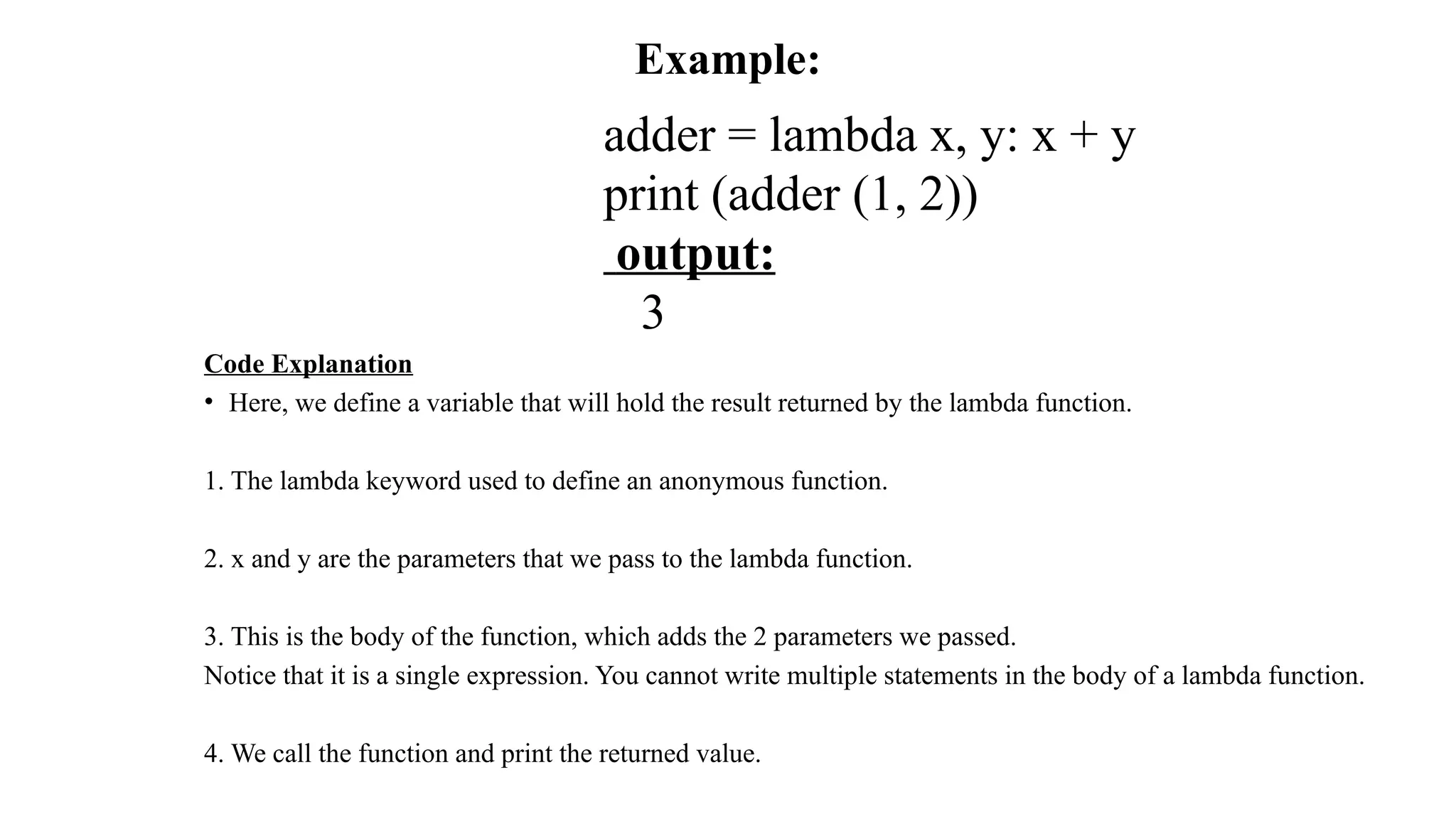
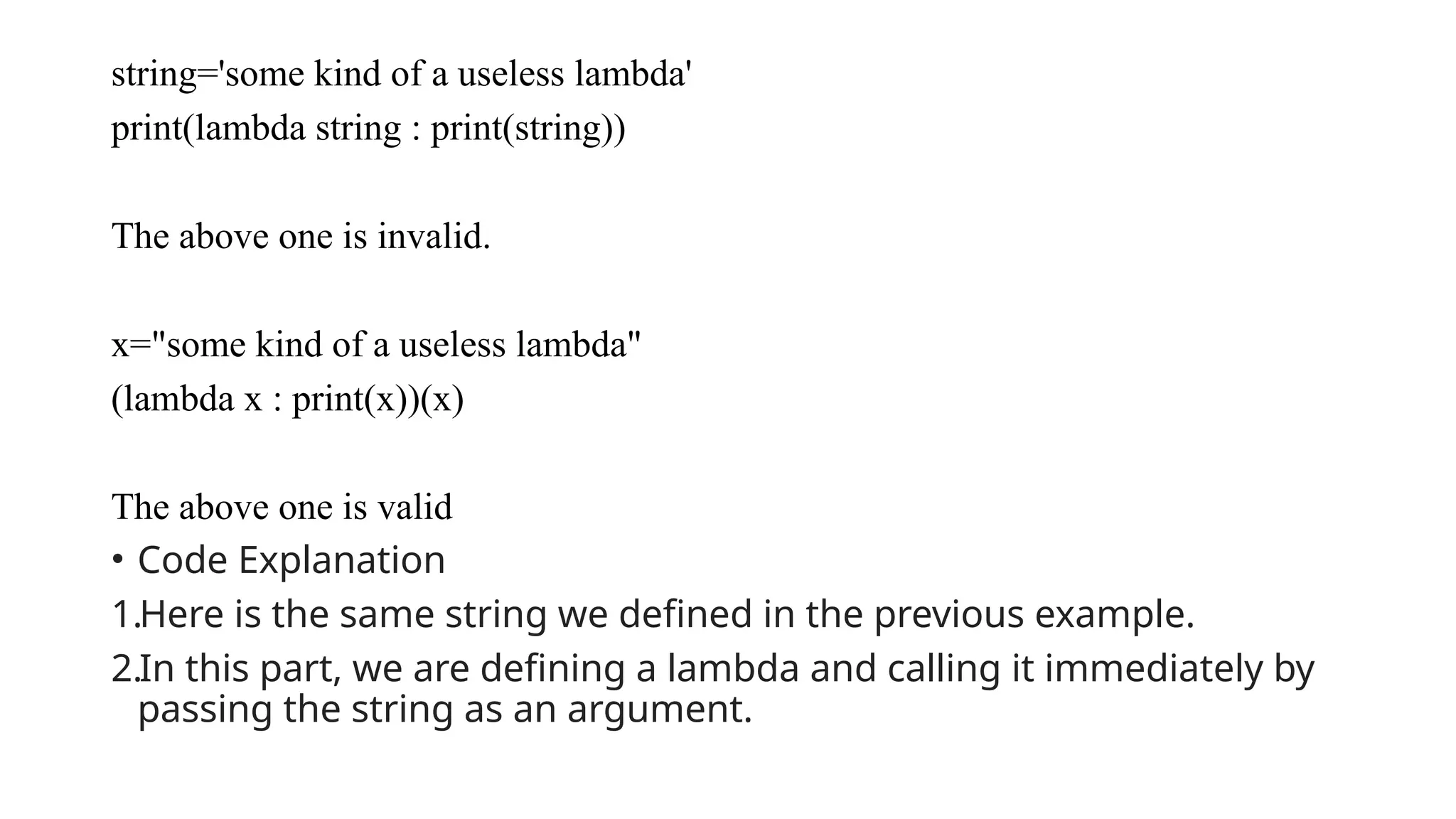
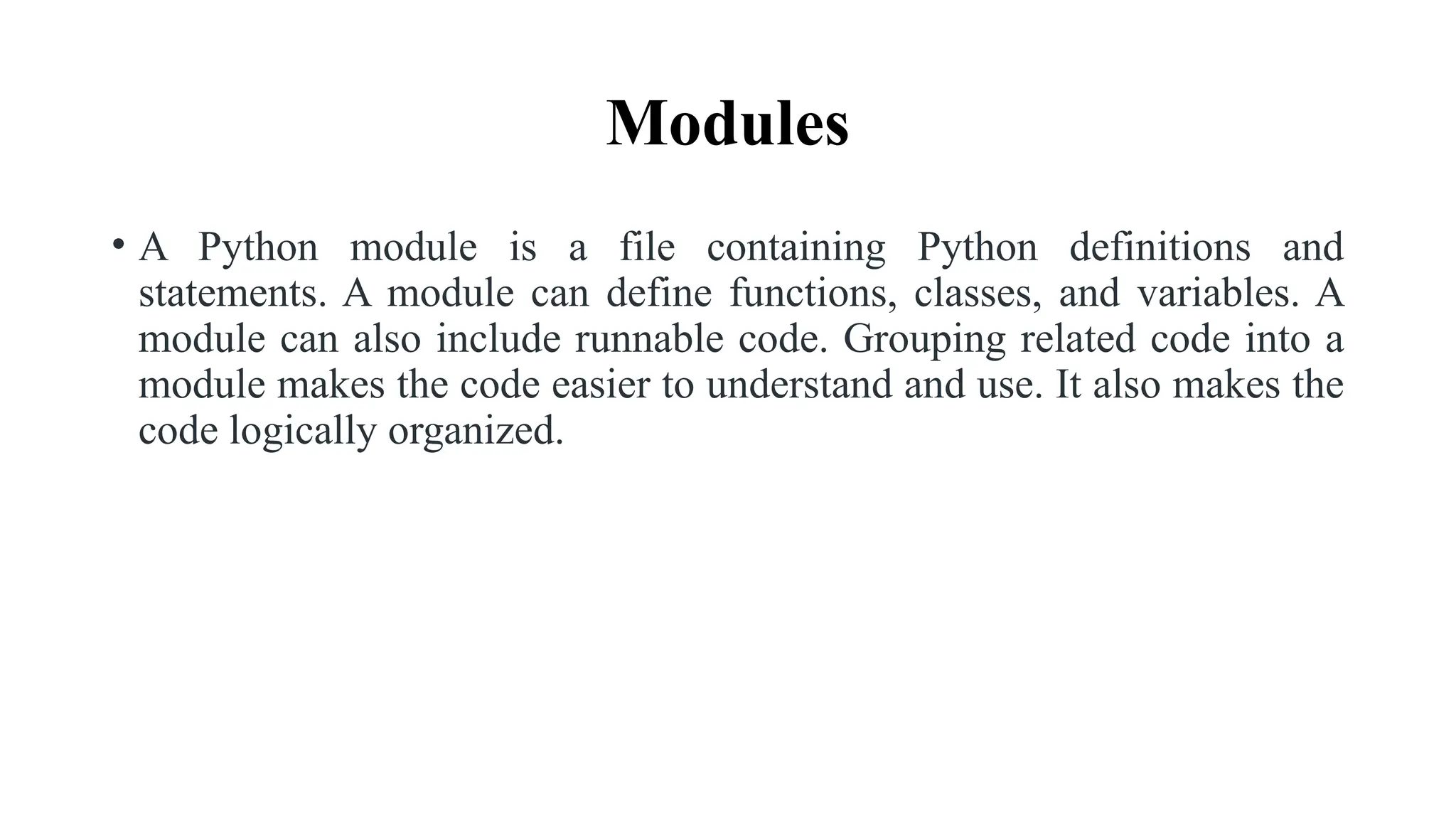
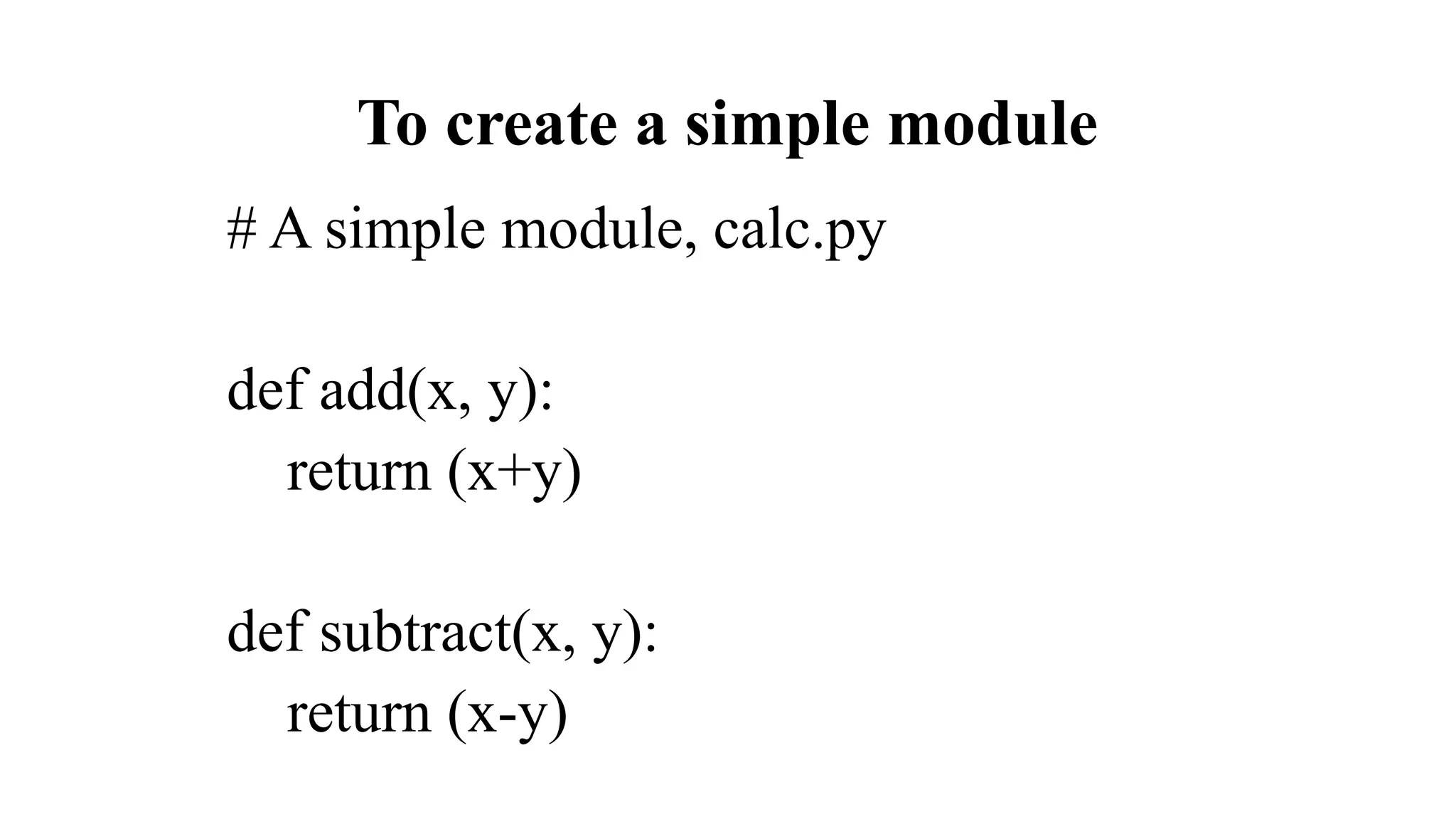
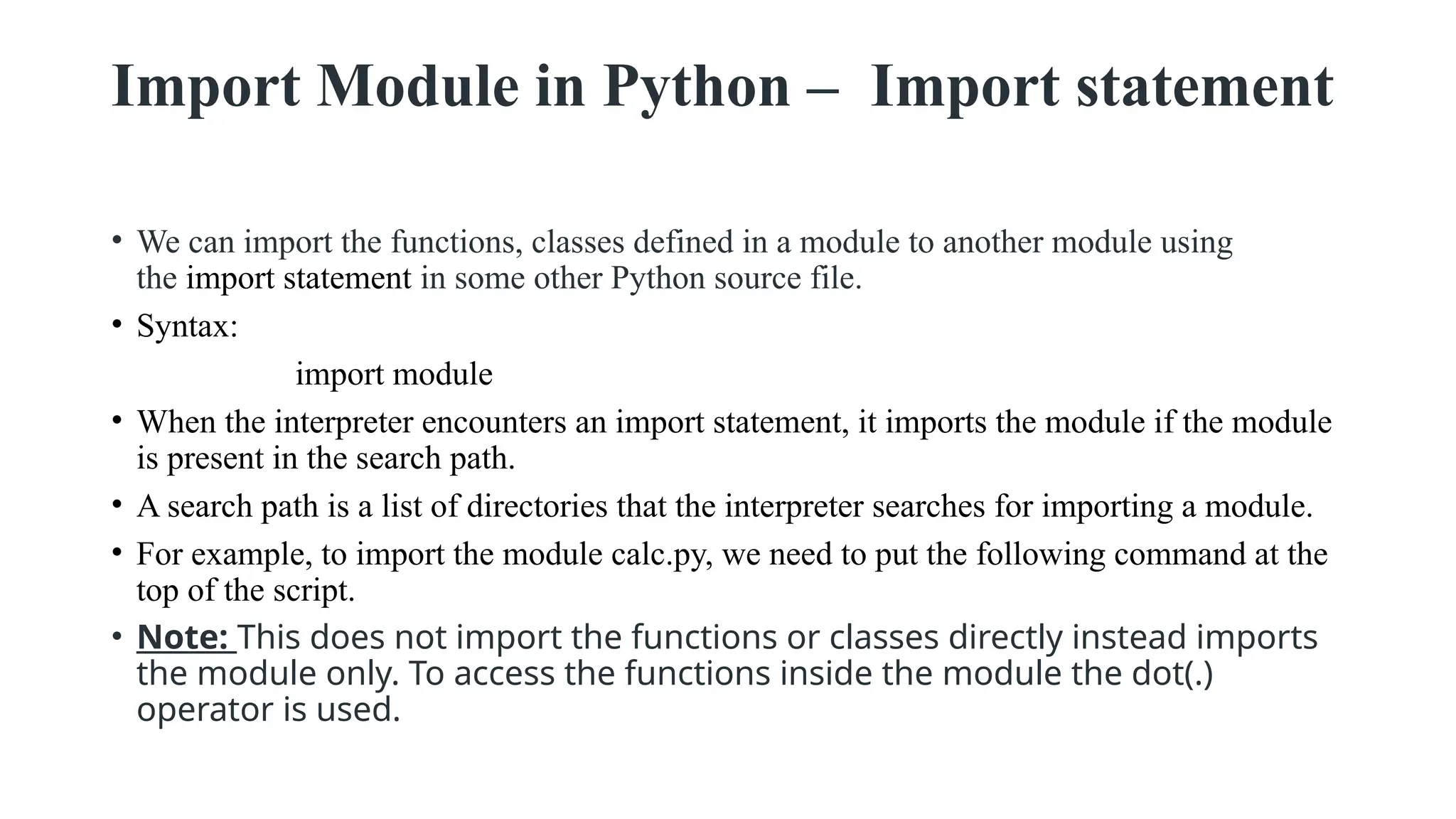
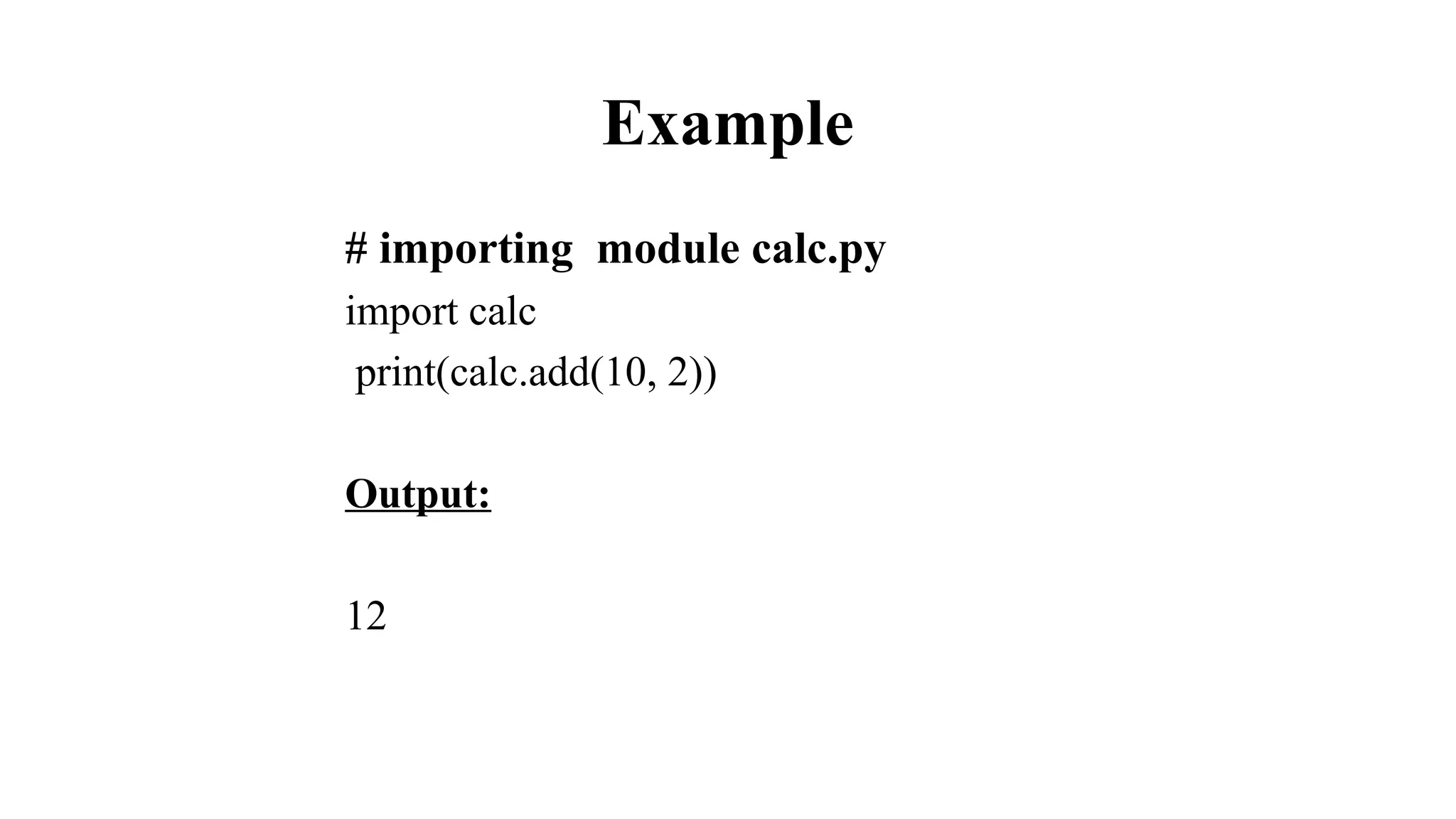
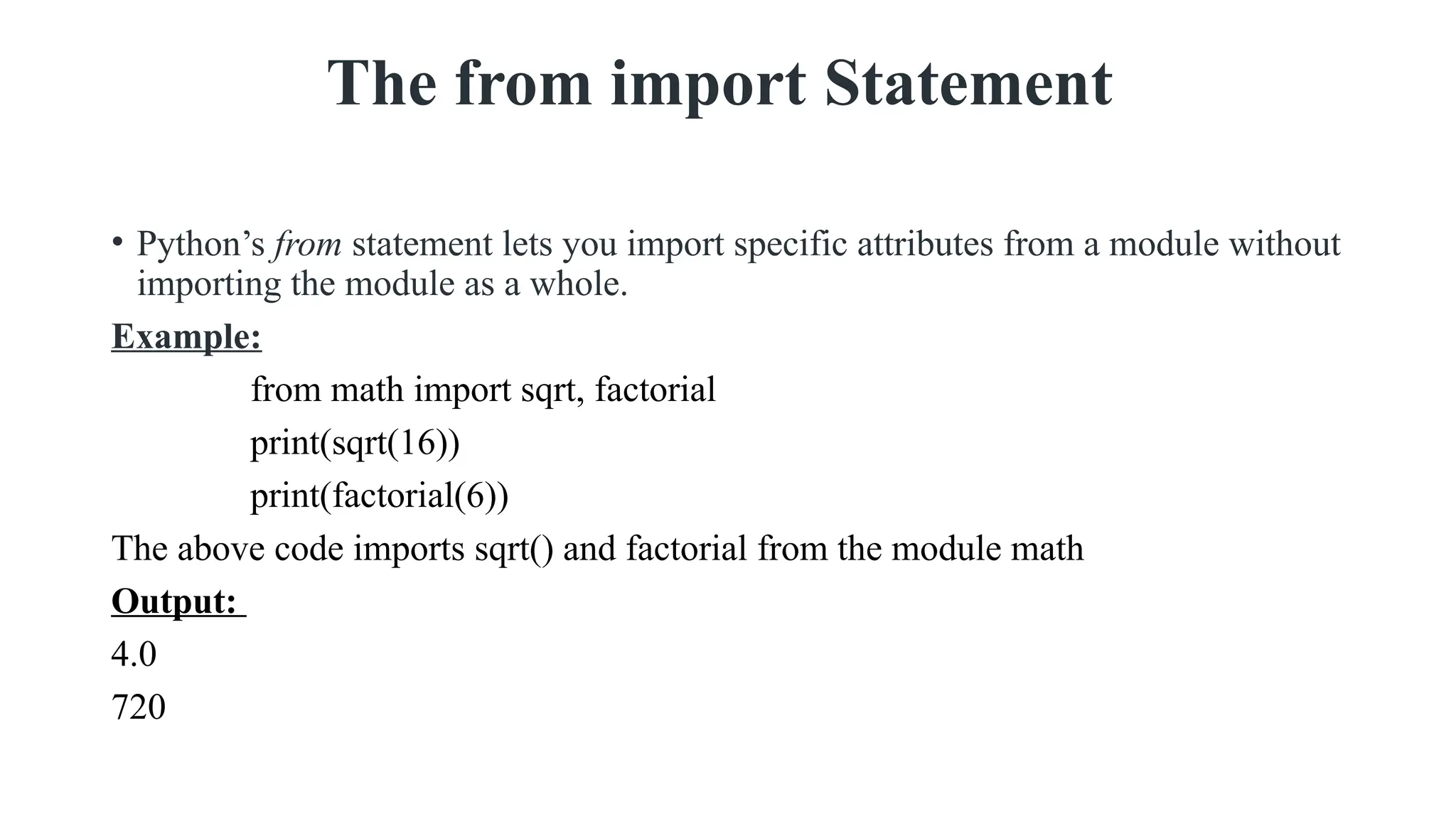
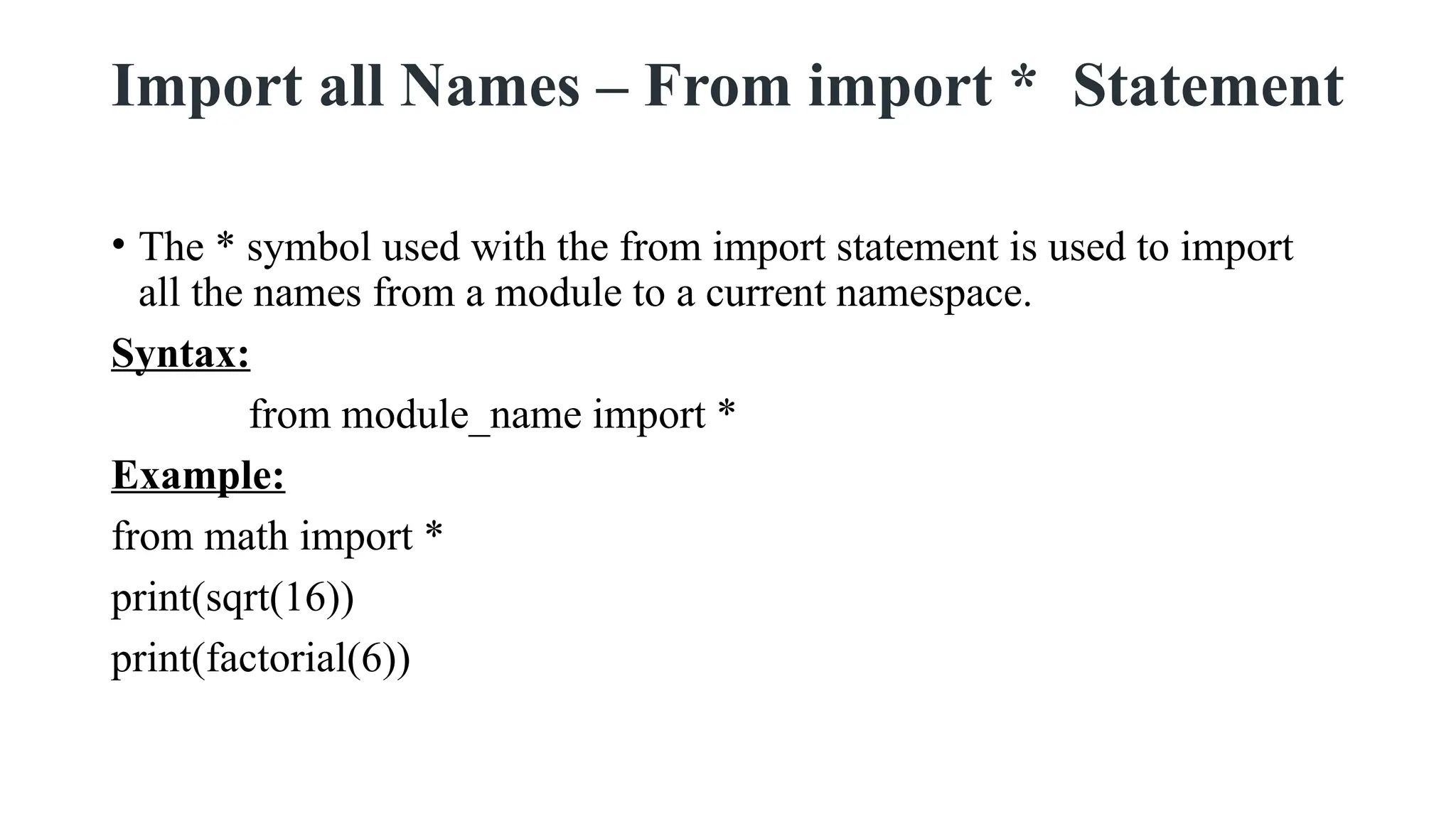
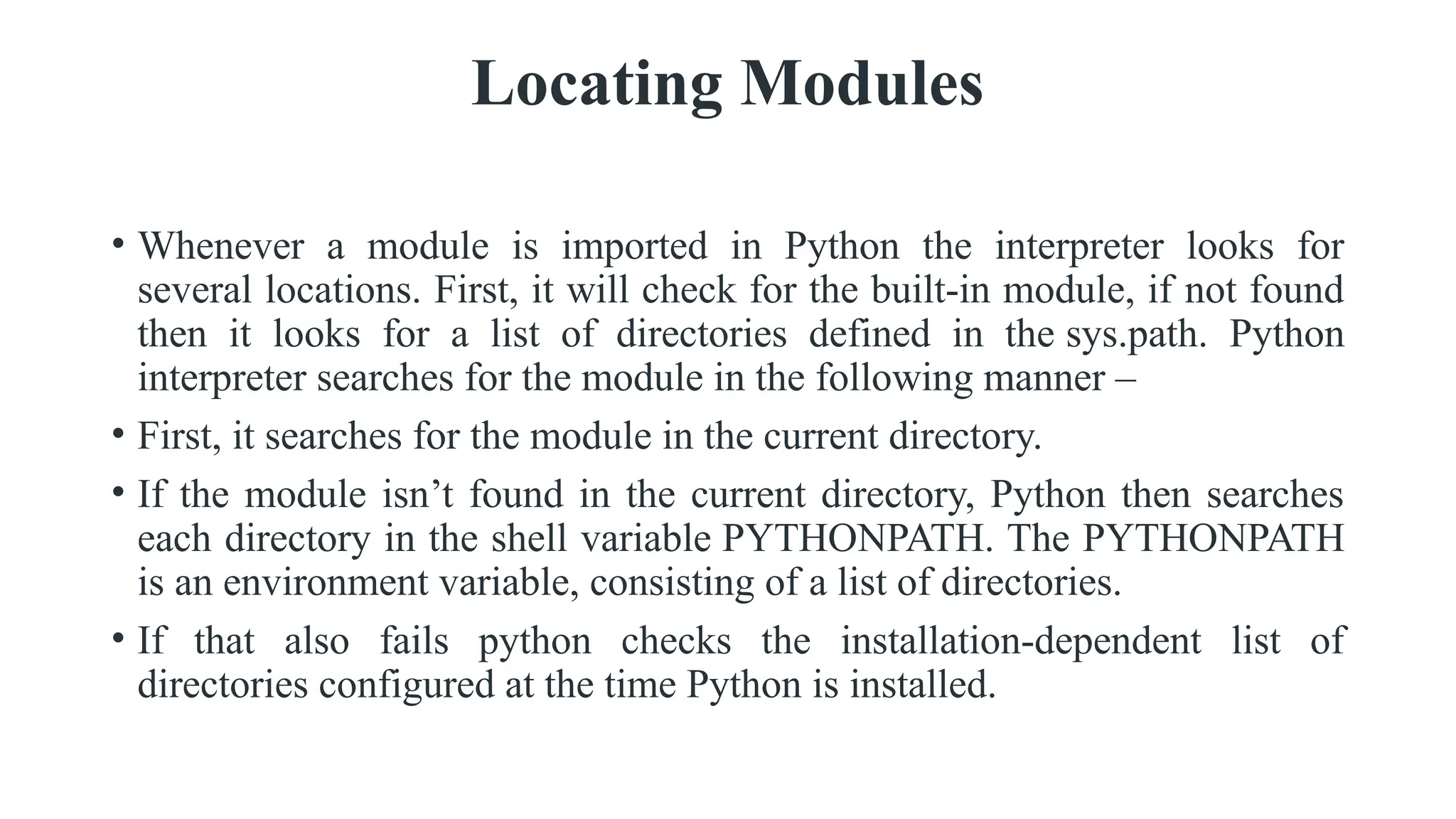
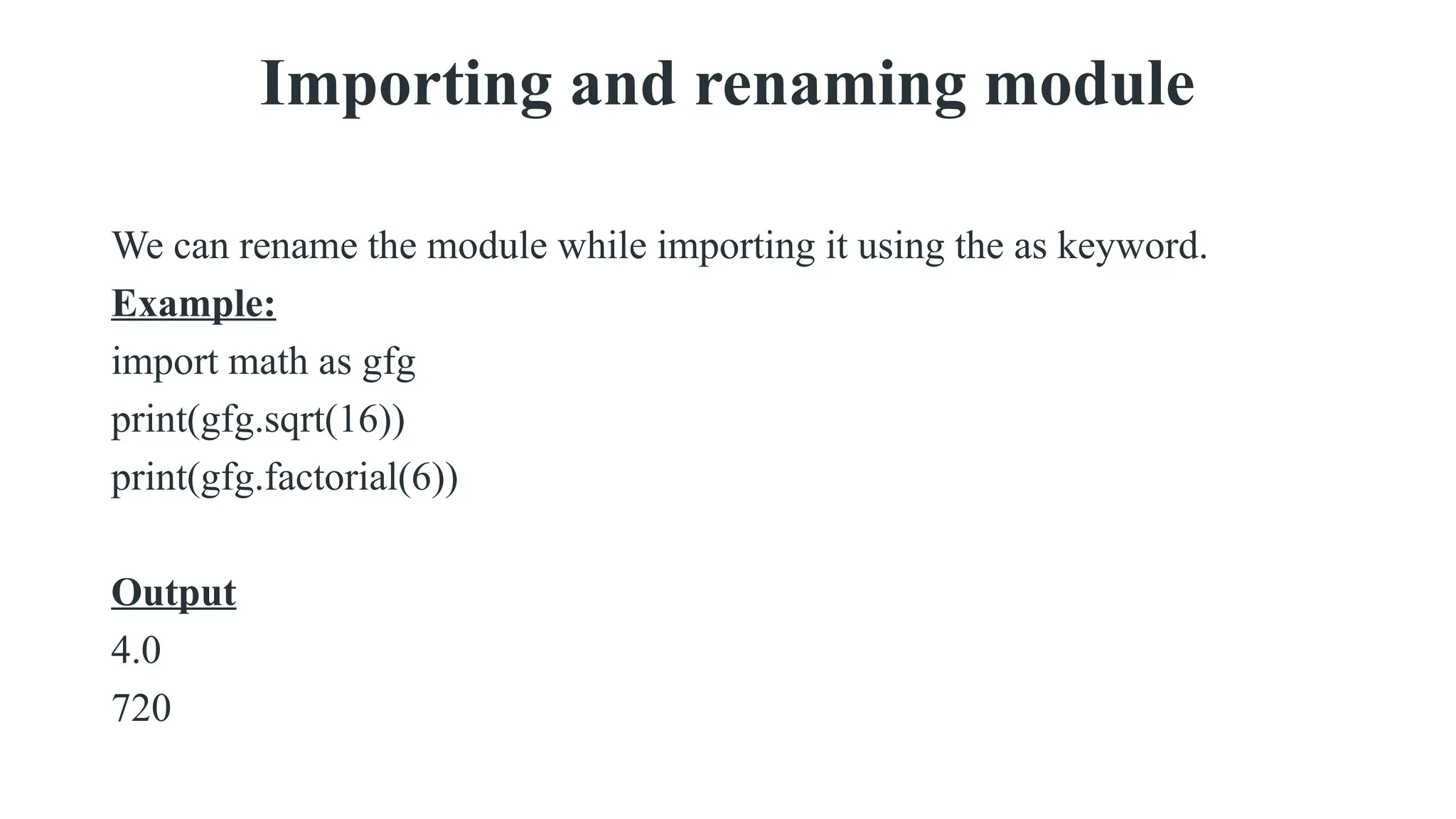
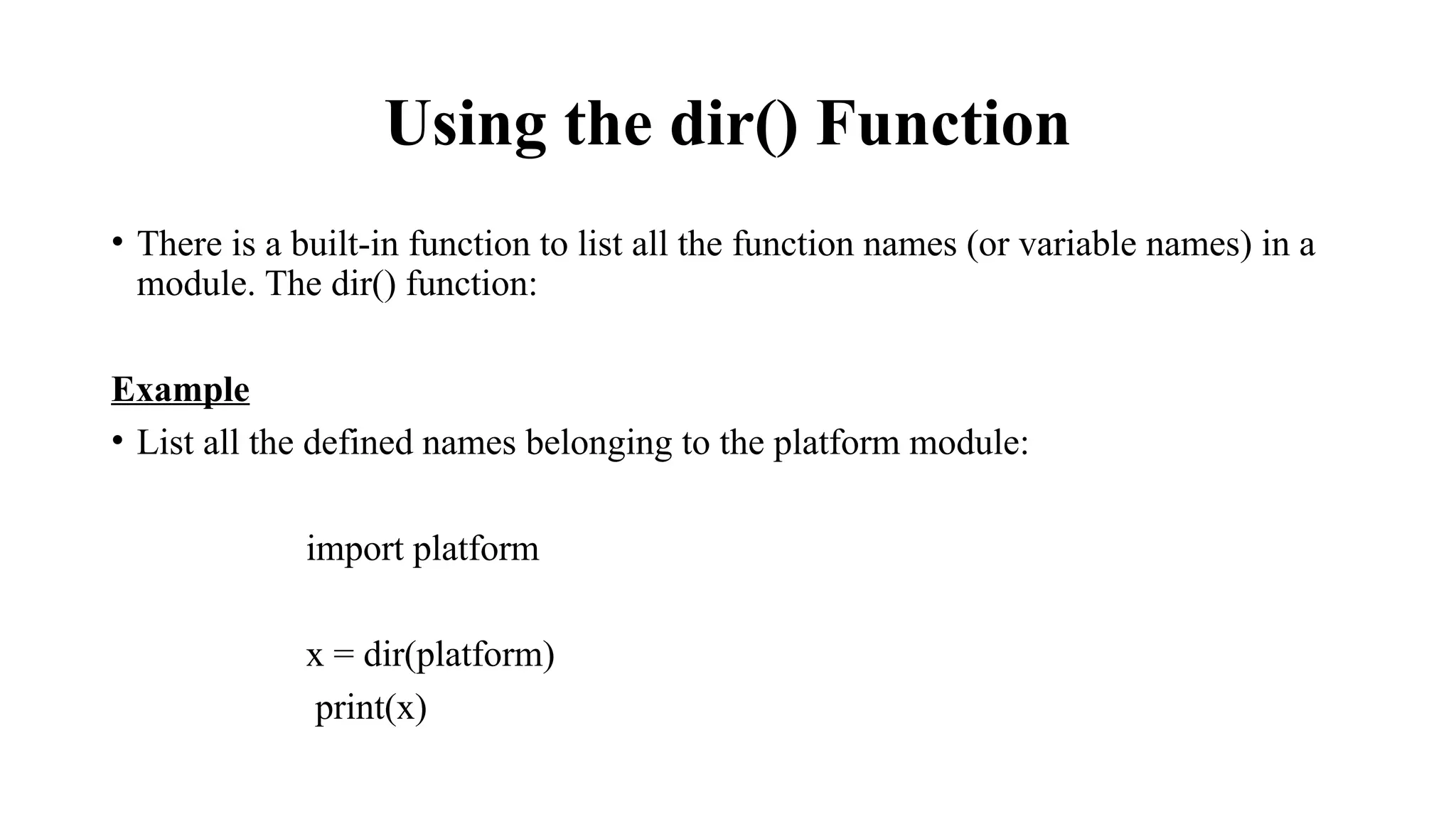
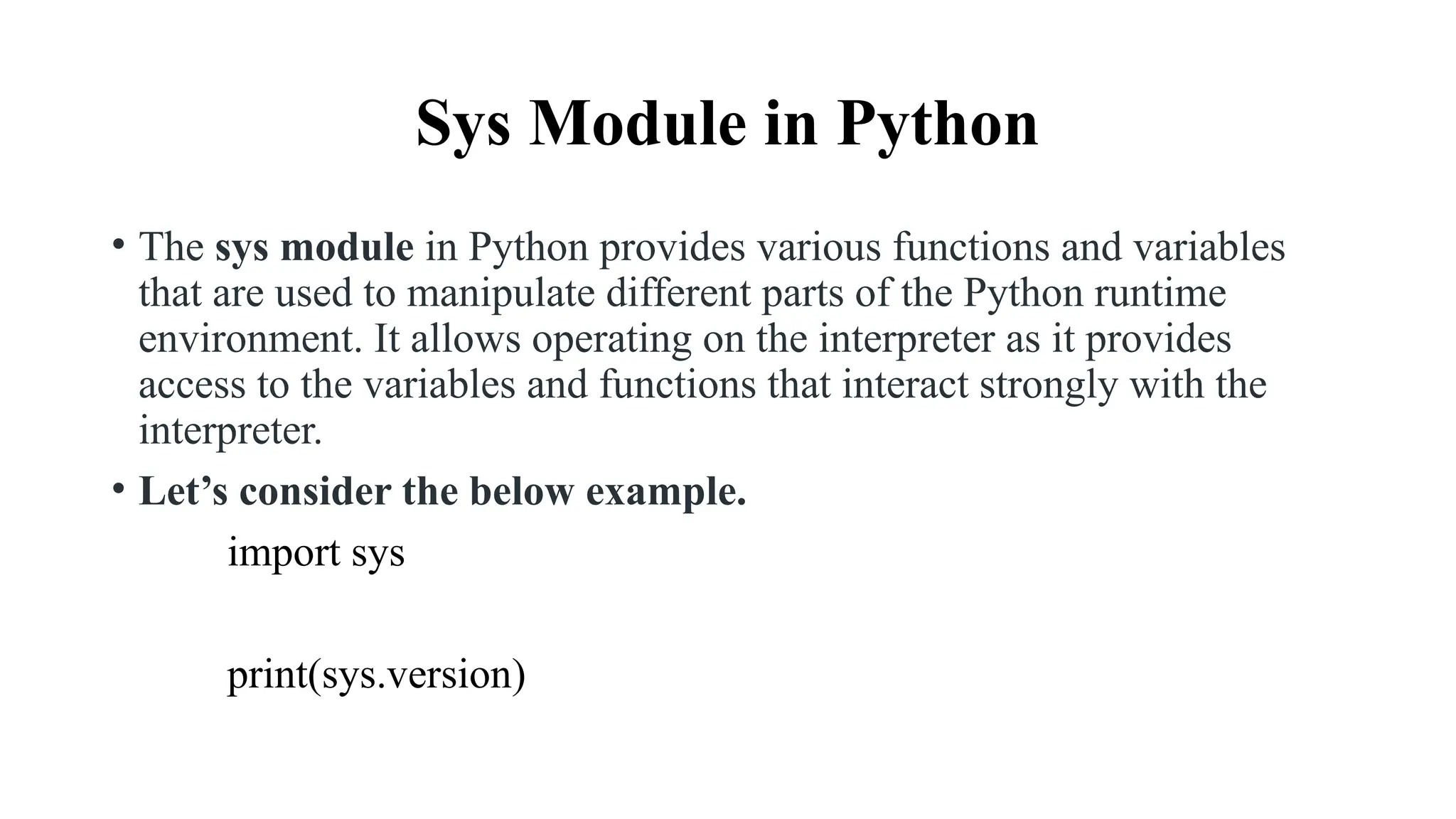
![Sys Module
Output:
3.6.9 (default, Oct 8 2020, 12:12:24
[GCC 8.4.0]
• In the above example, sys.version is used which returns a string
containing the version of Python Interpreter with some additional
information.
• This shows how the sys module interacts with the interpreter.](https://image.slidesharecdn.com/python-unit3-updated-250926154750-075bd96a/75/Python-Mastering-python-Tips-and-techniques-64-2048.jpg)
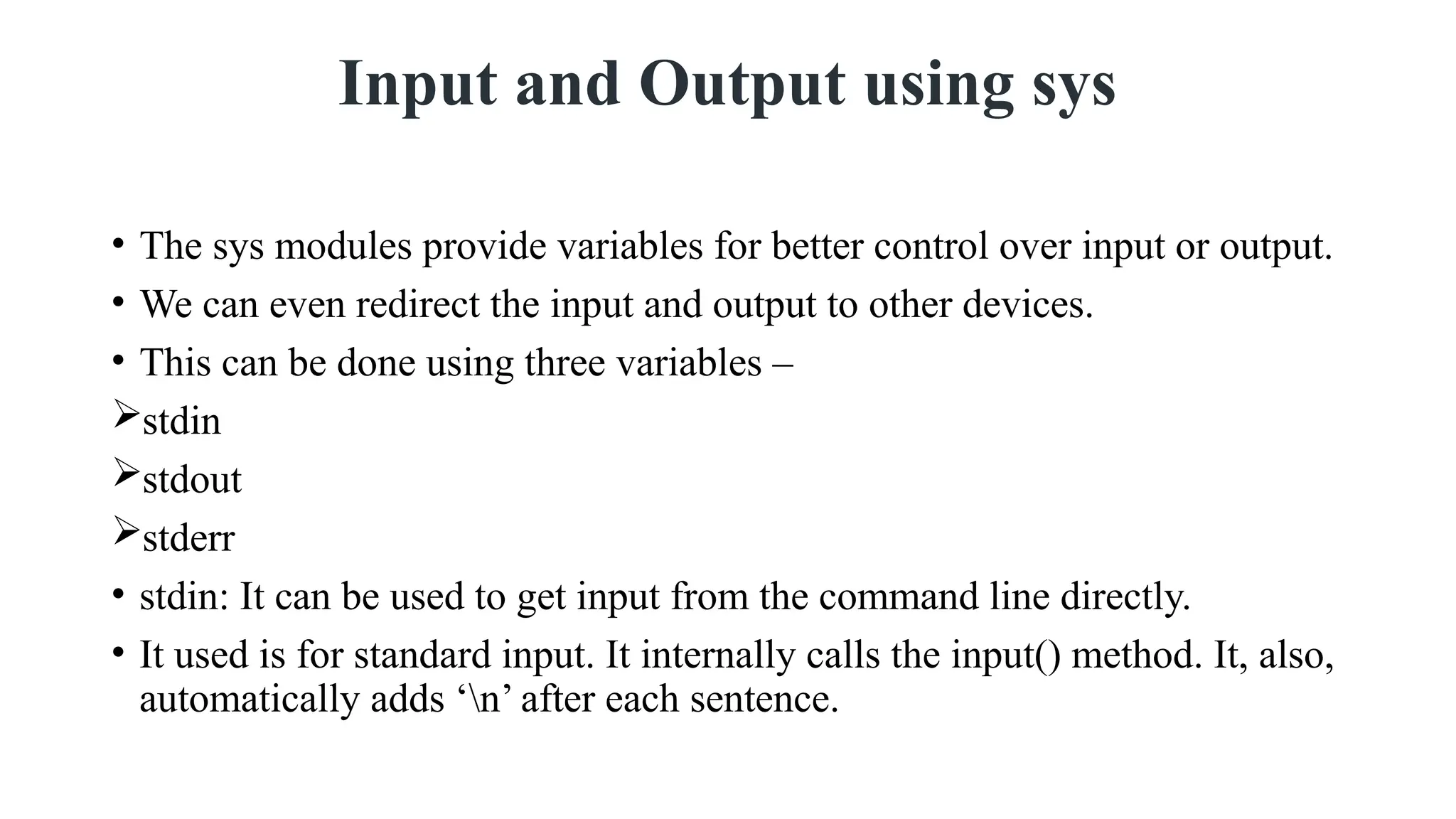
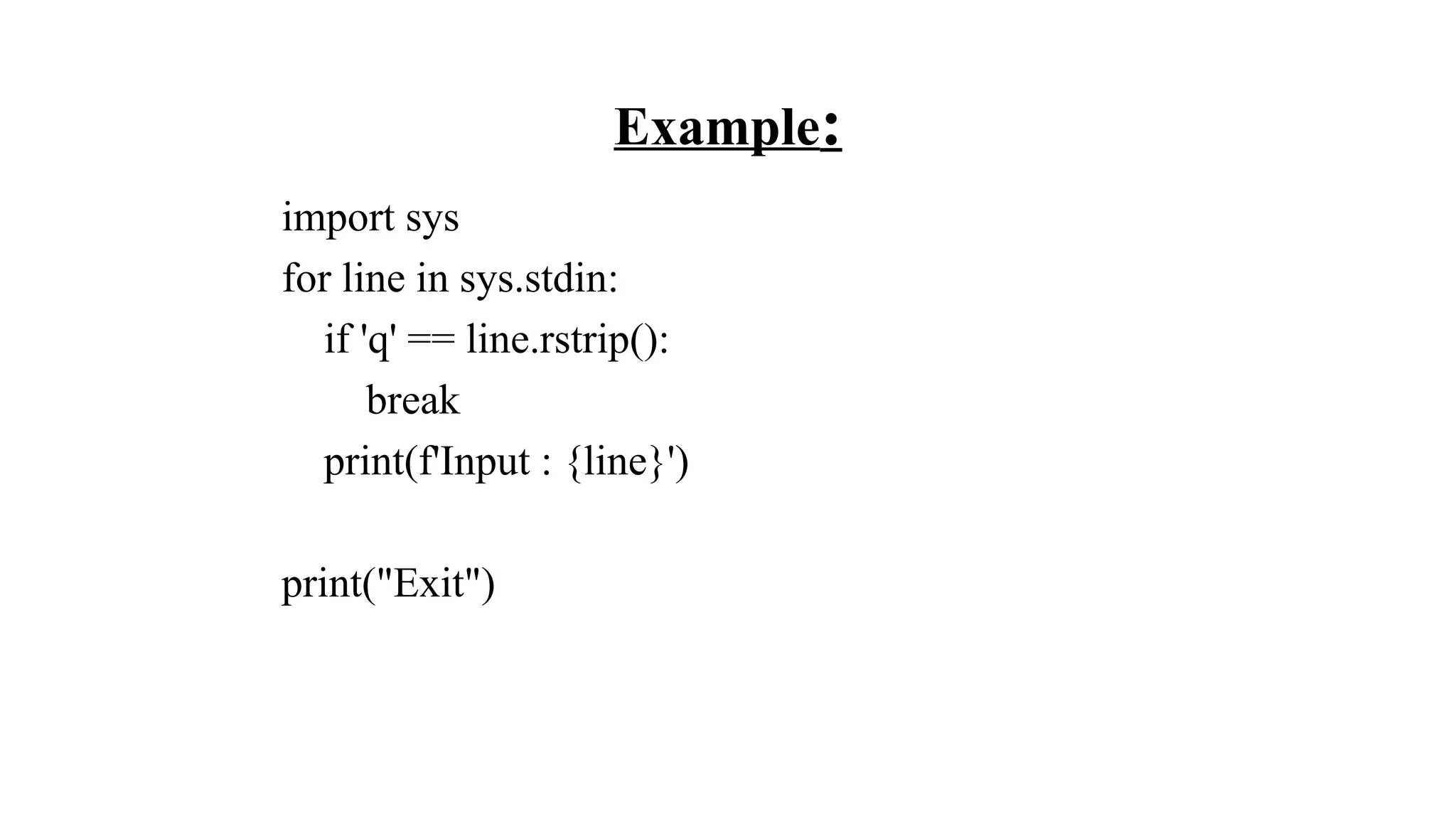
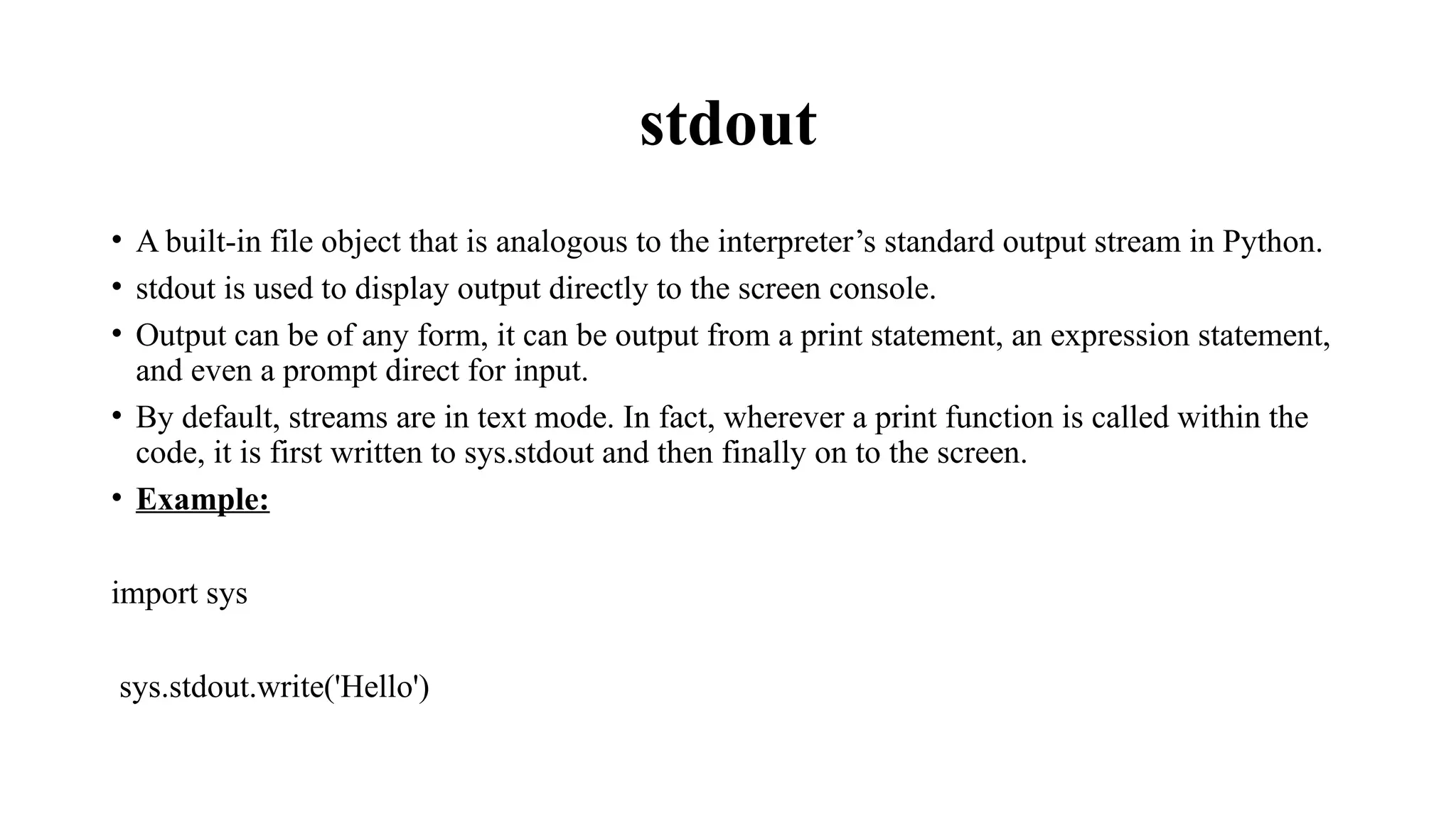
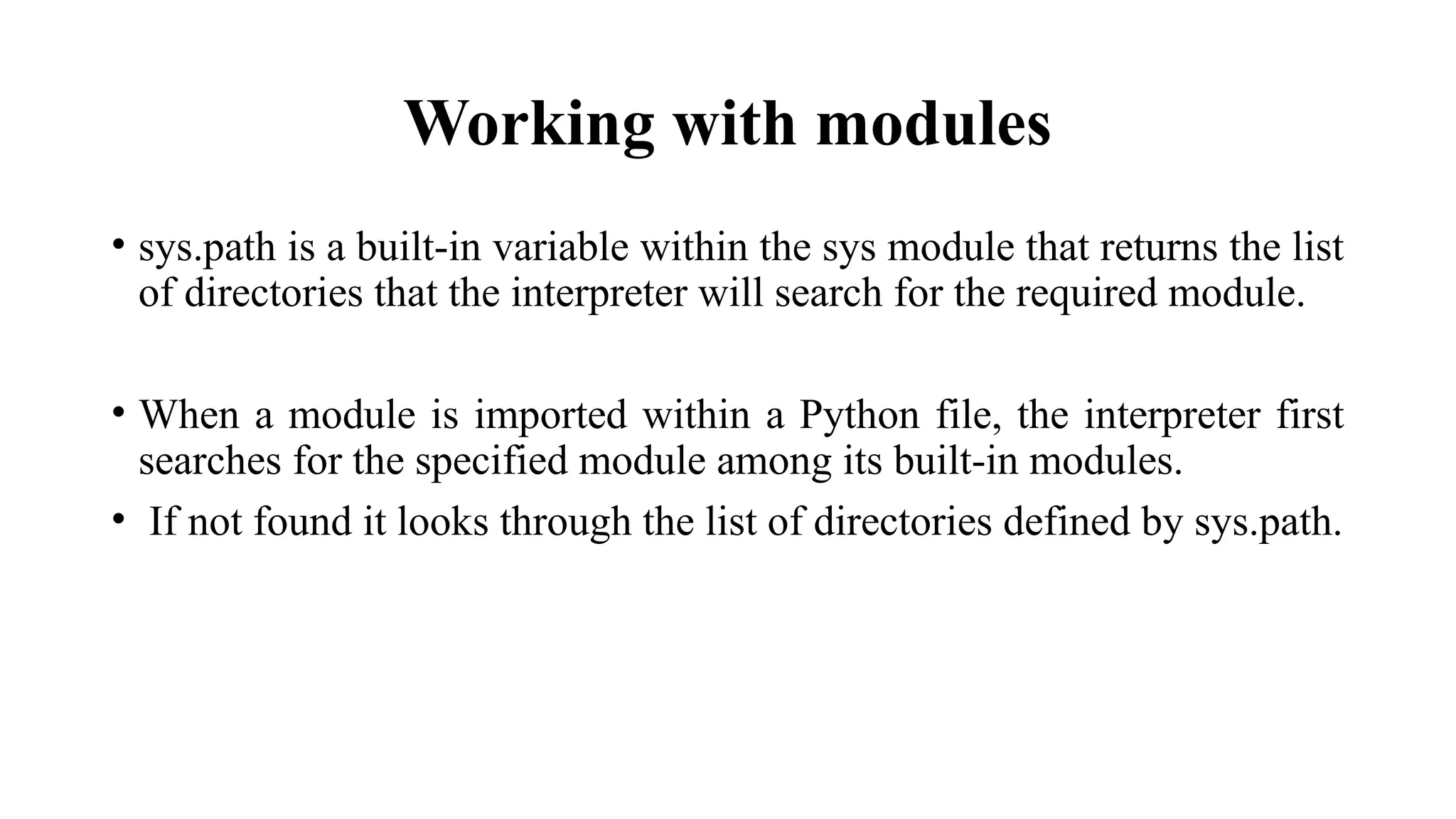
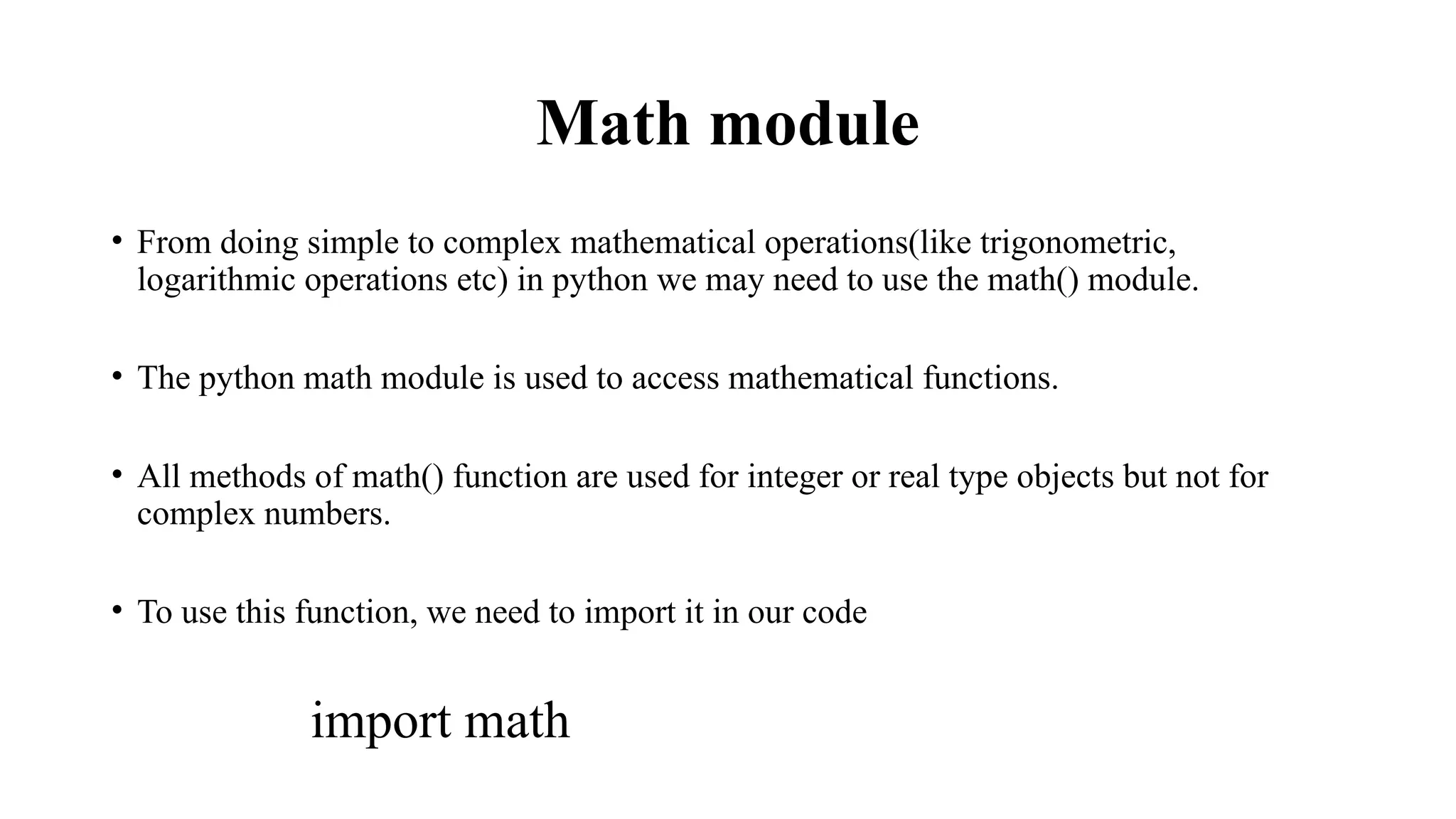
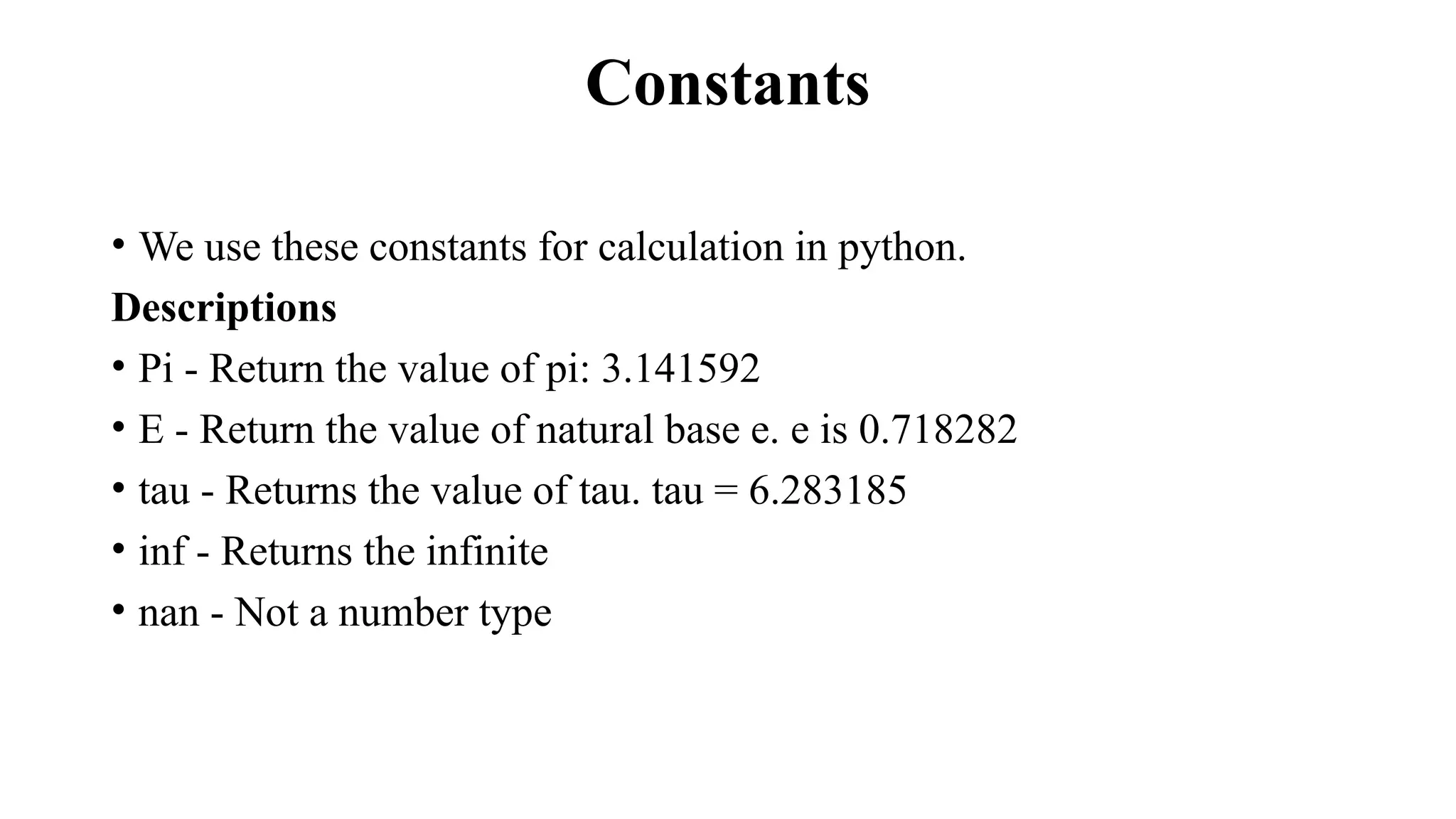
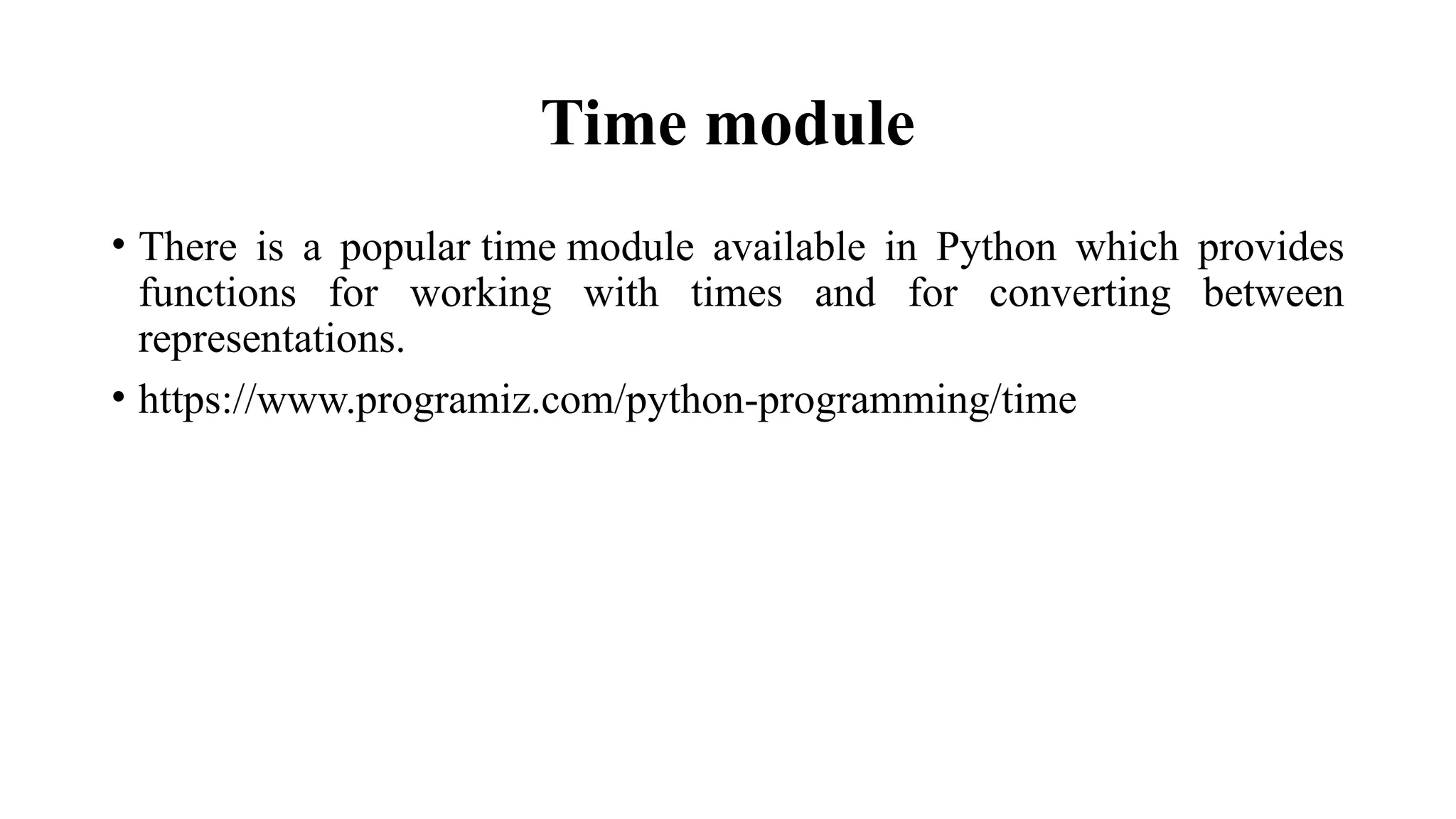
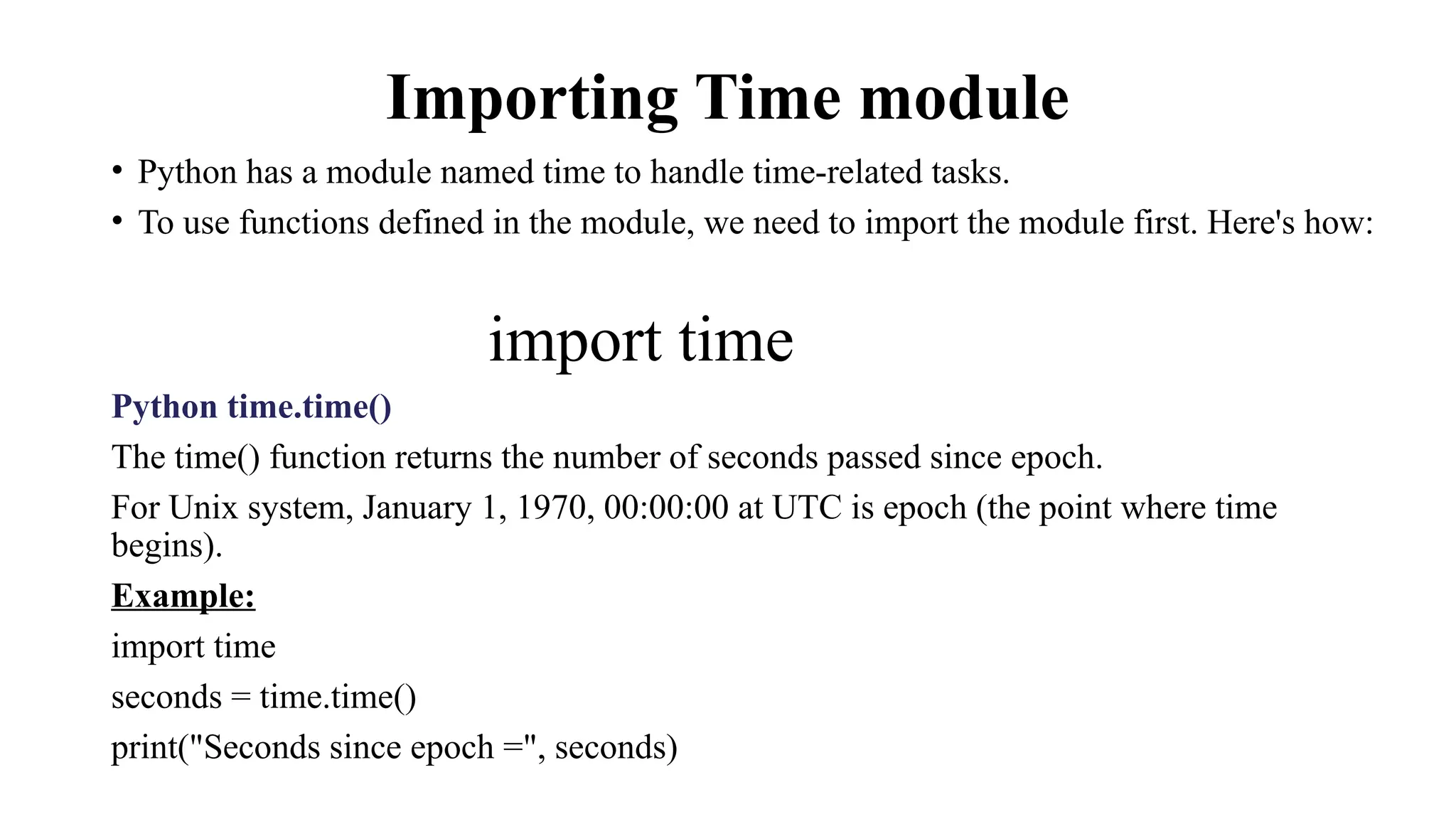
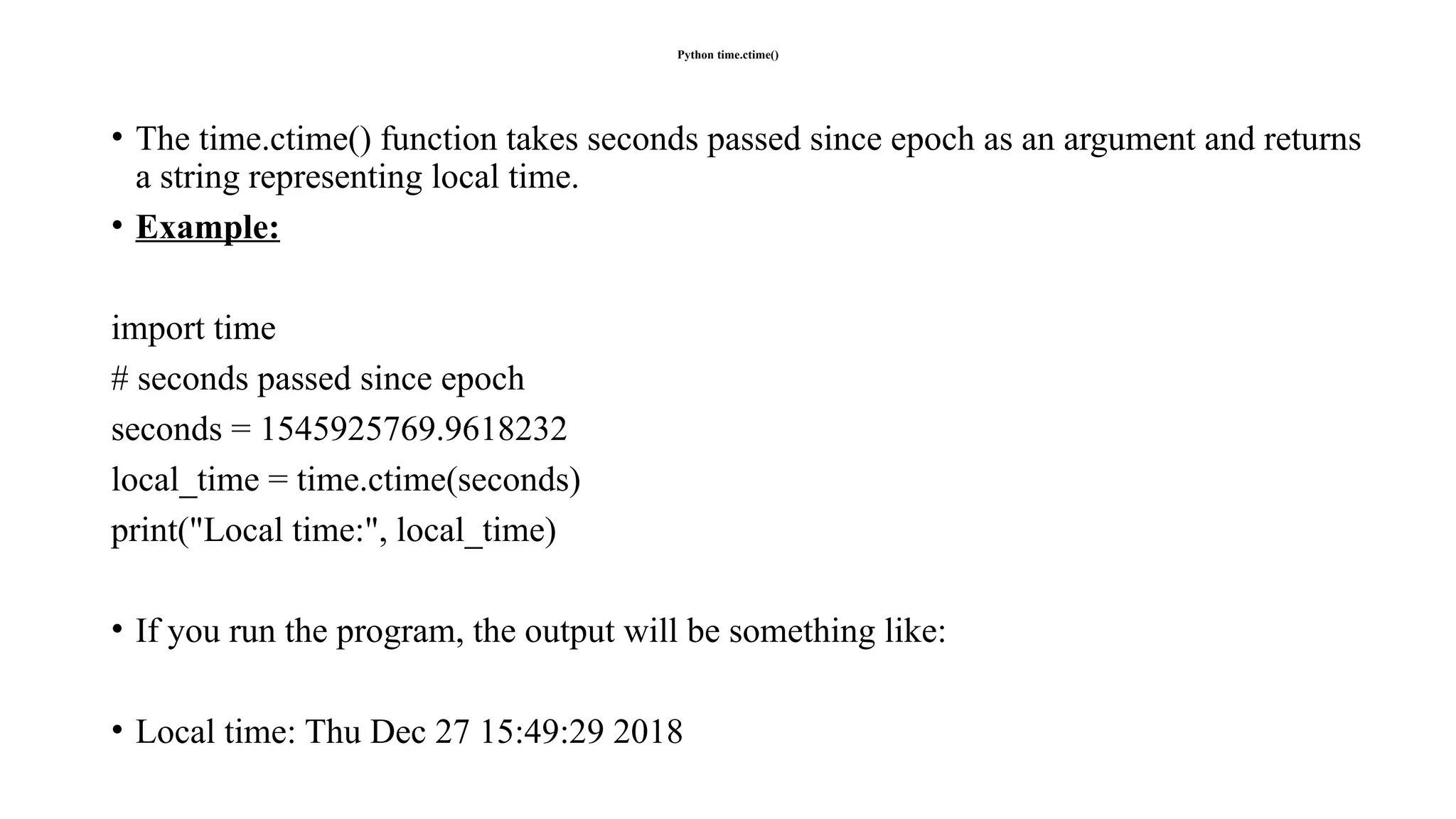
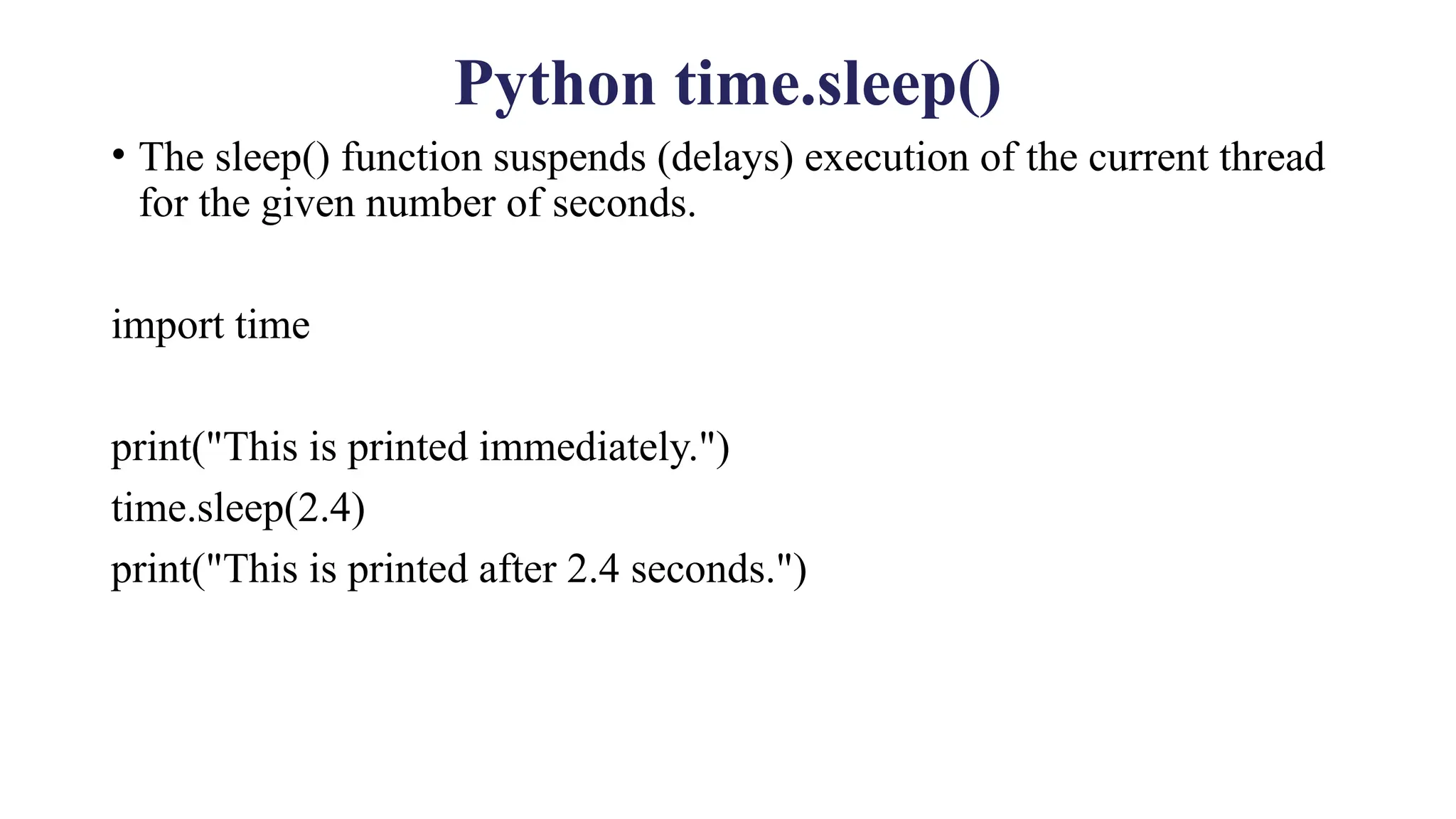
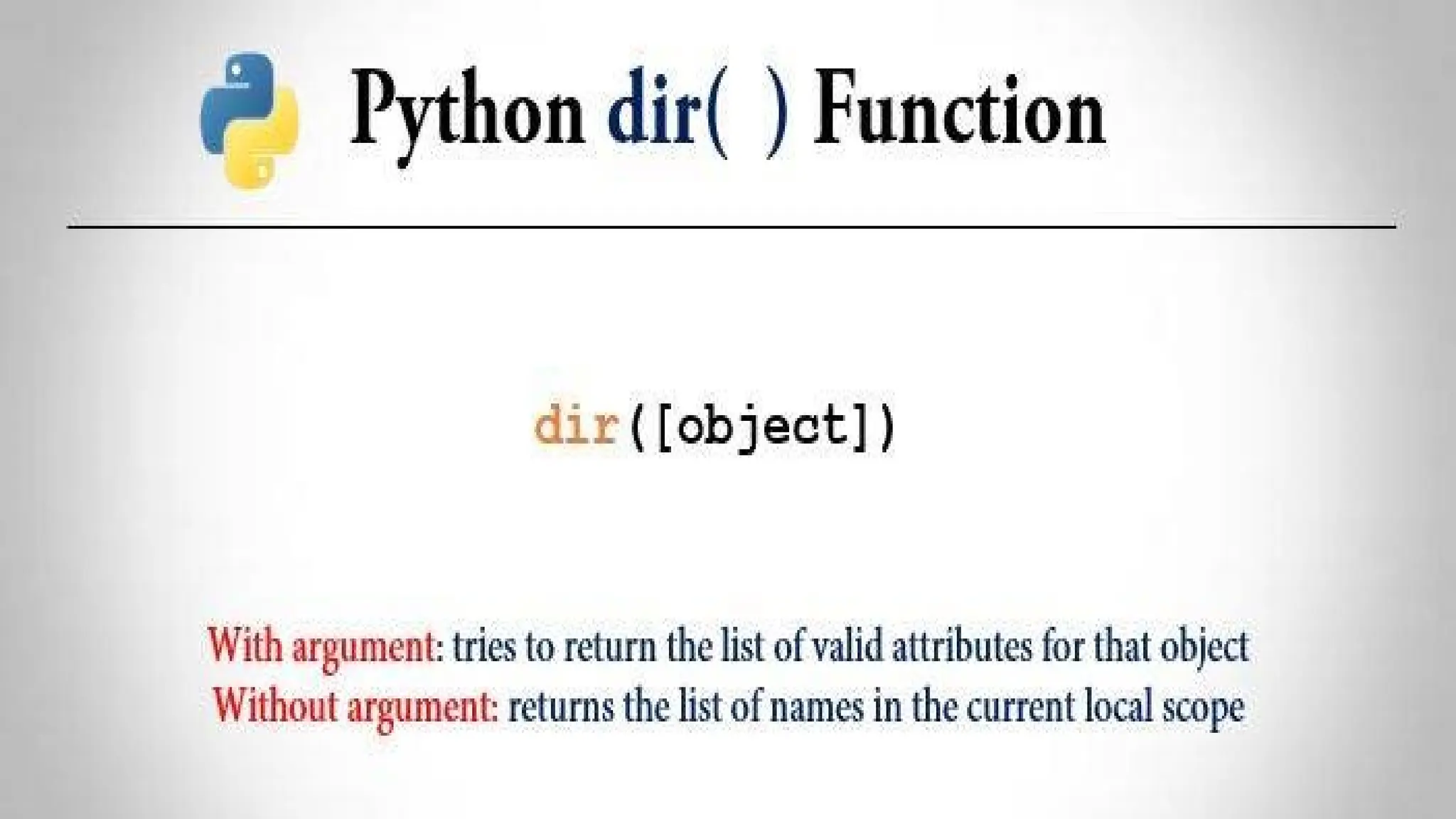
![dir() Function Example
• import platform
x = dir(platform)
print(x)
• my_list = [1, 2, 3]
print(dir(my_list))
import math
print(dir(math))](https://image.slidesharecdn.com/python-unit3-updated-250926154750-075bd96a/75/Python-Mastering-python-Tips-and-techniques-76-2048.jpg)
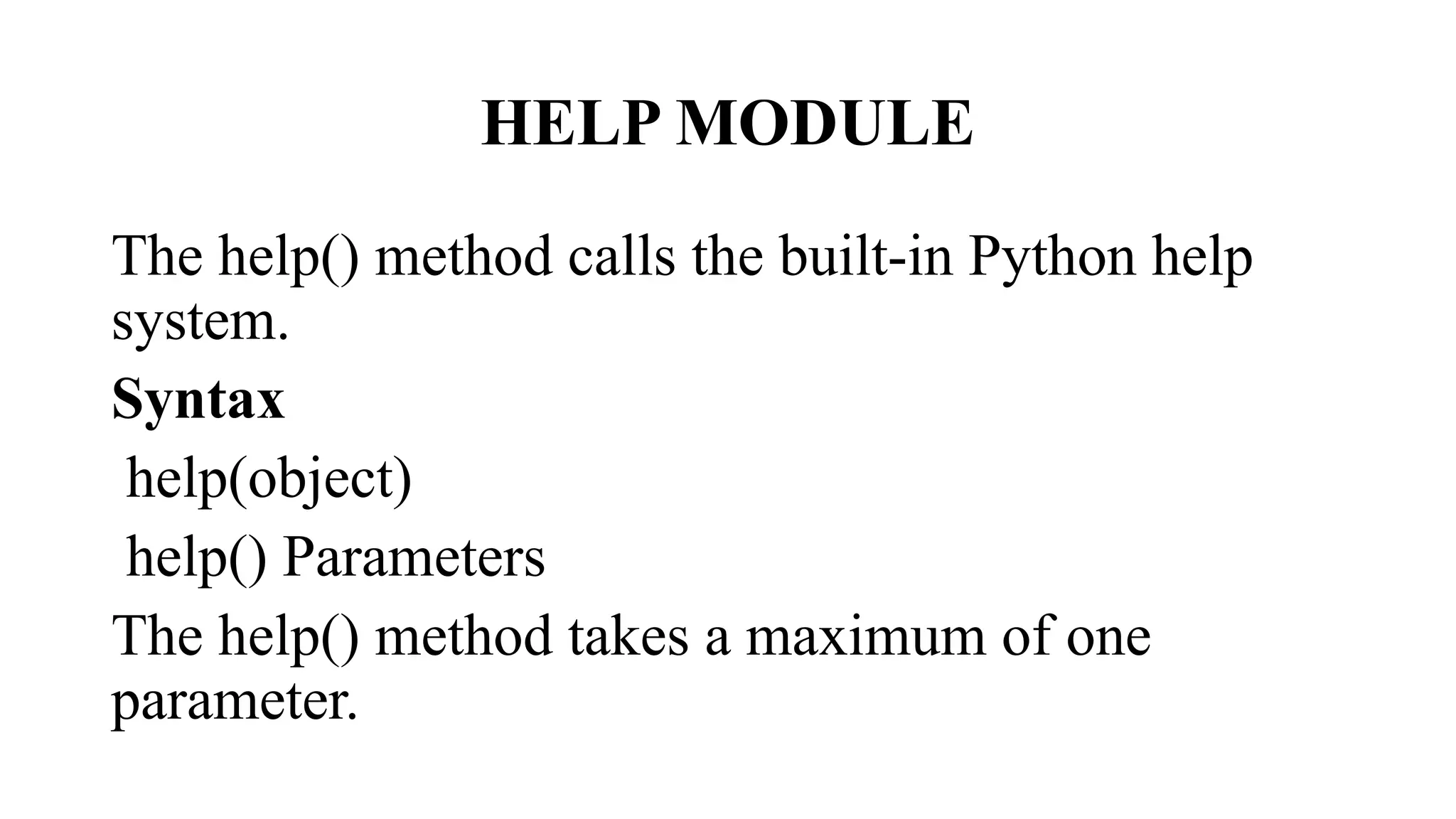
![>>> help(list)
>>> help(dict)
>>> help(print)
>>> help([1, 2, 3])
>>> help('random thing')
>>> help('print')
>>> help('def')
>>> from math import * help('math.pow')](https://image.slidesharecdn.com/python-unit3-updated-250926154750-075bd96a/75/Python-Mastering-python-Tips-and-techniques-78-2048.jpg)
